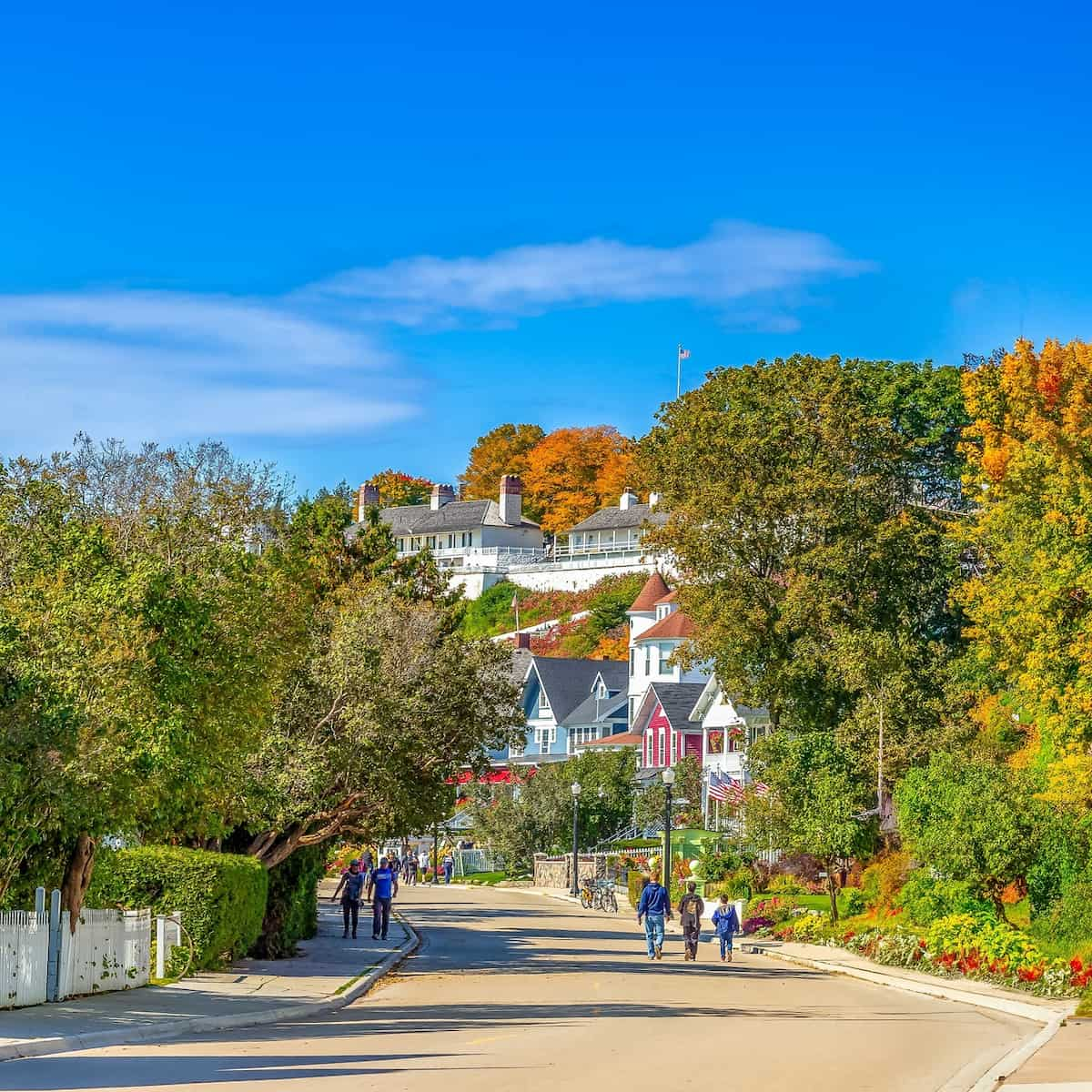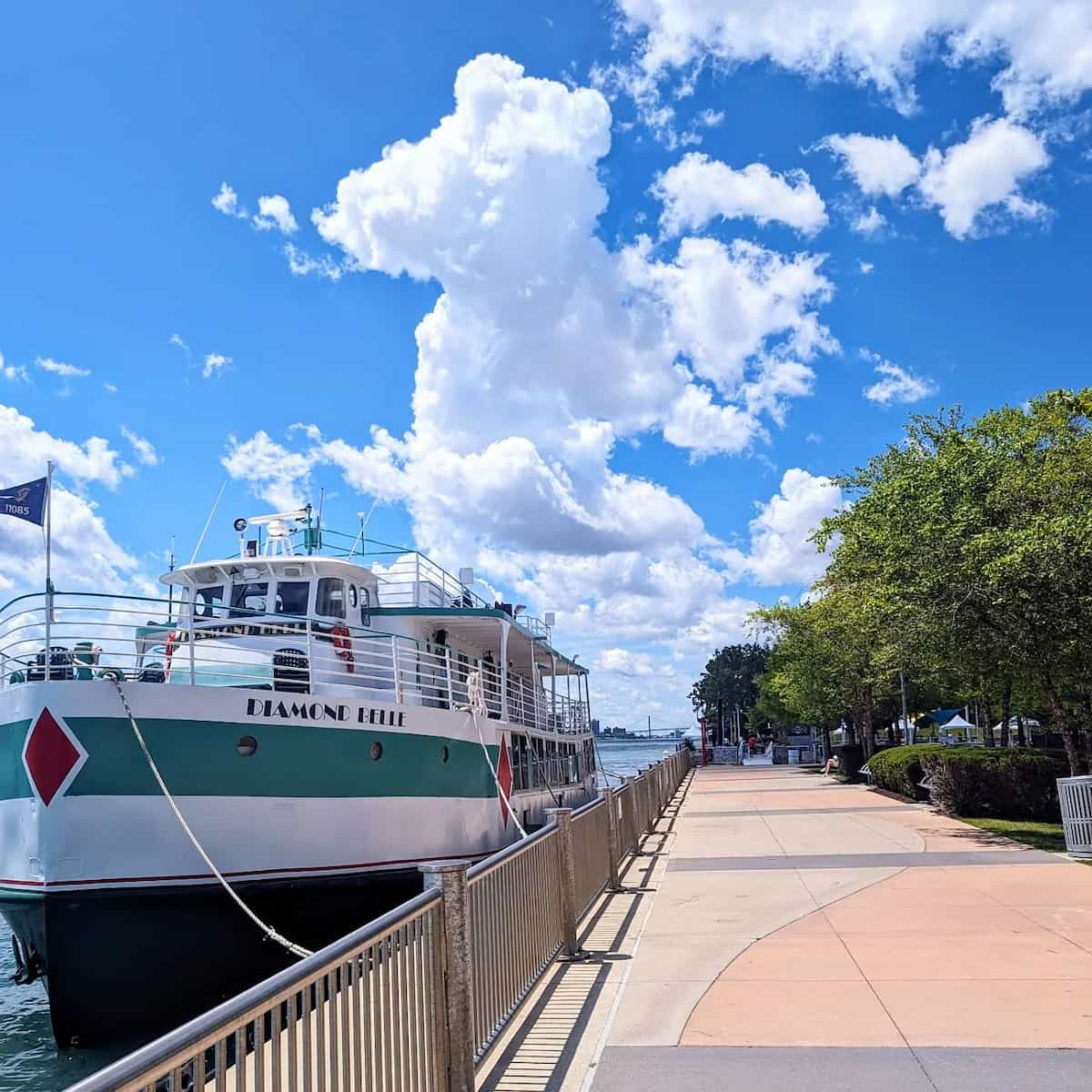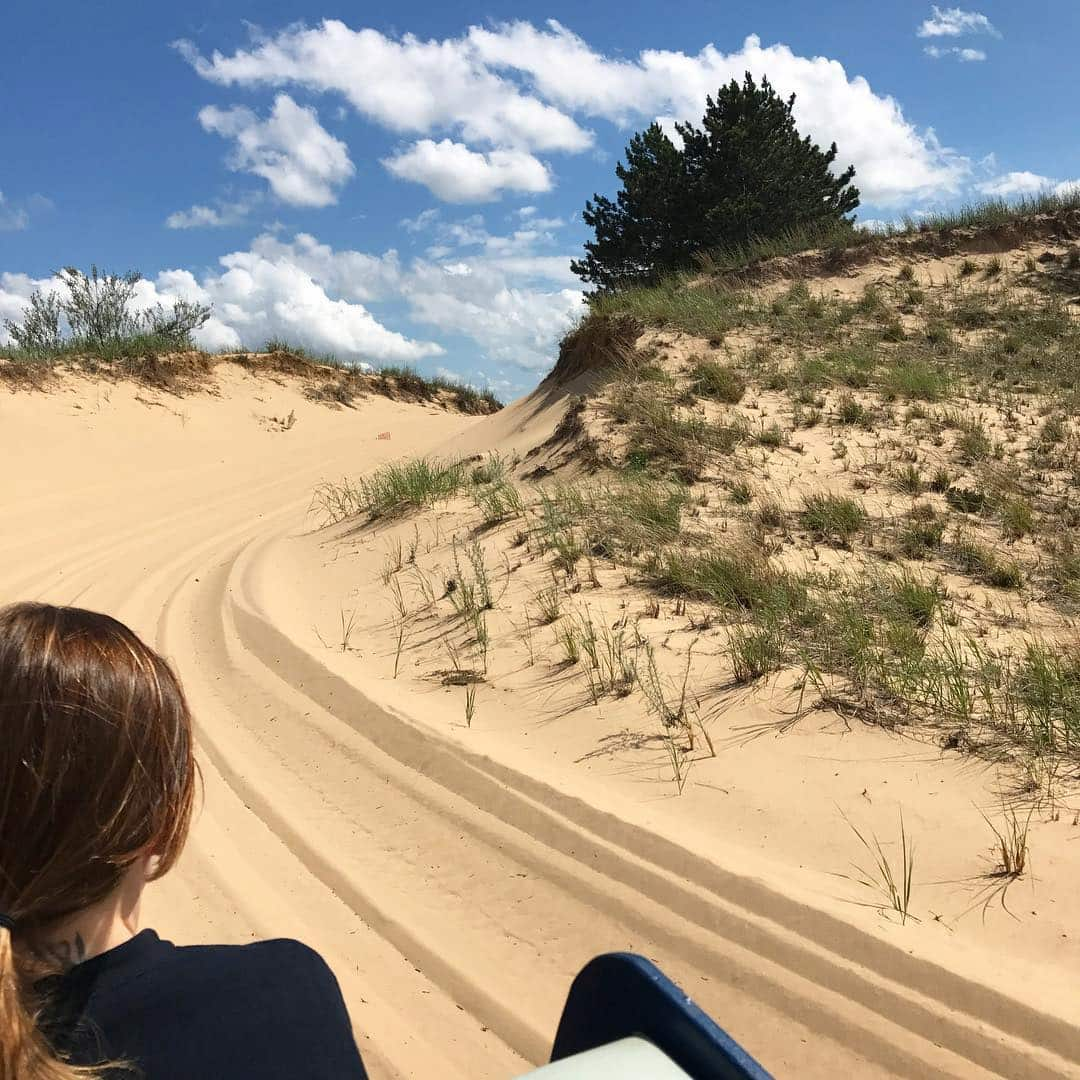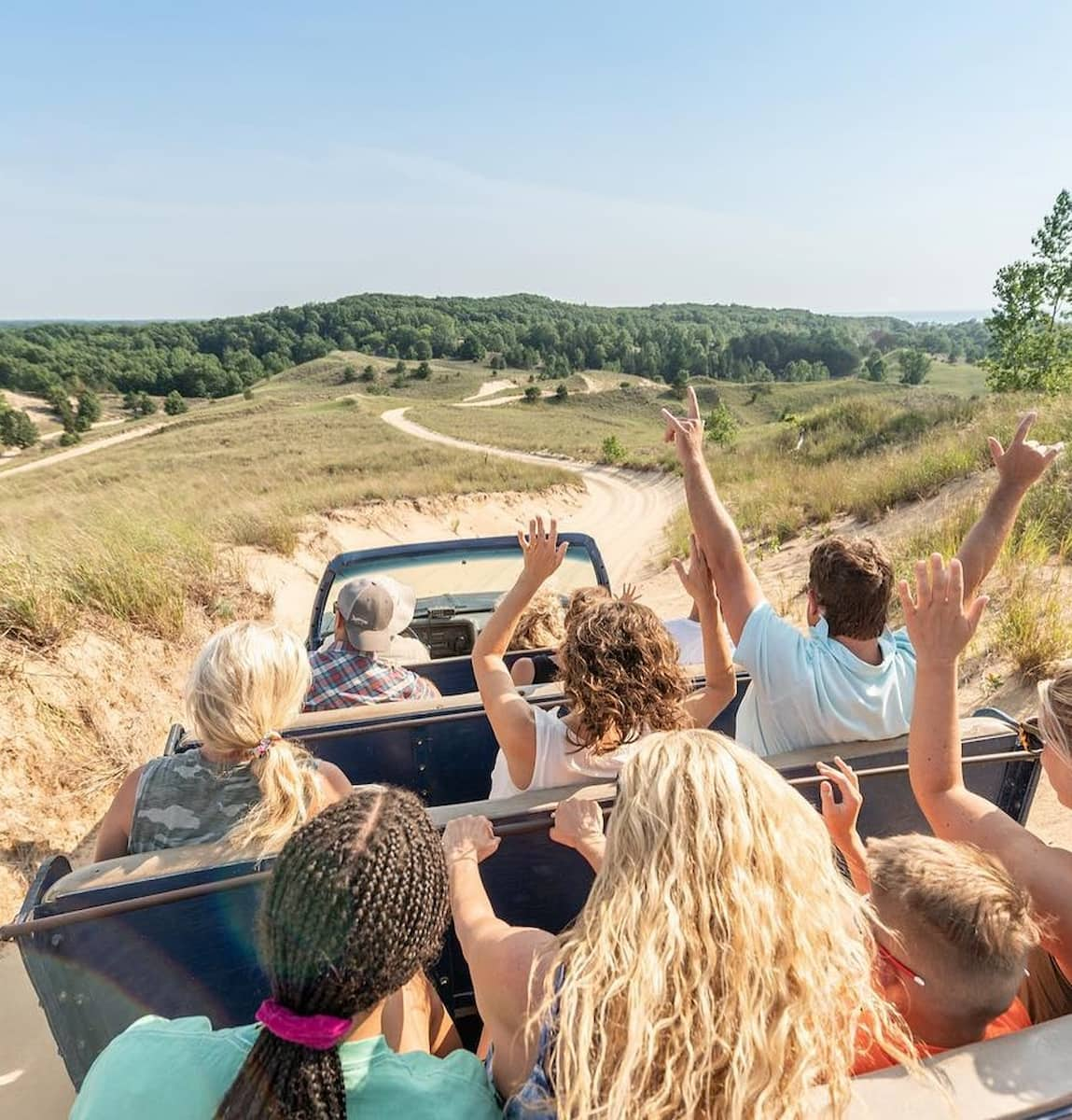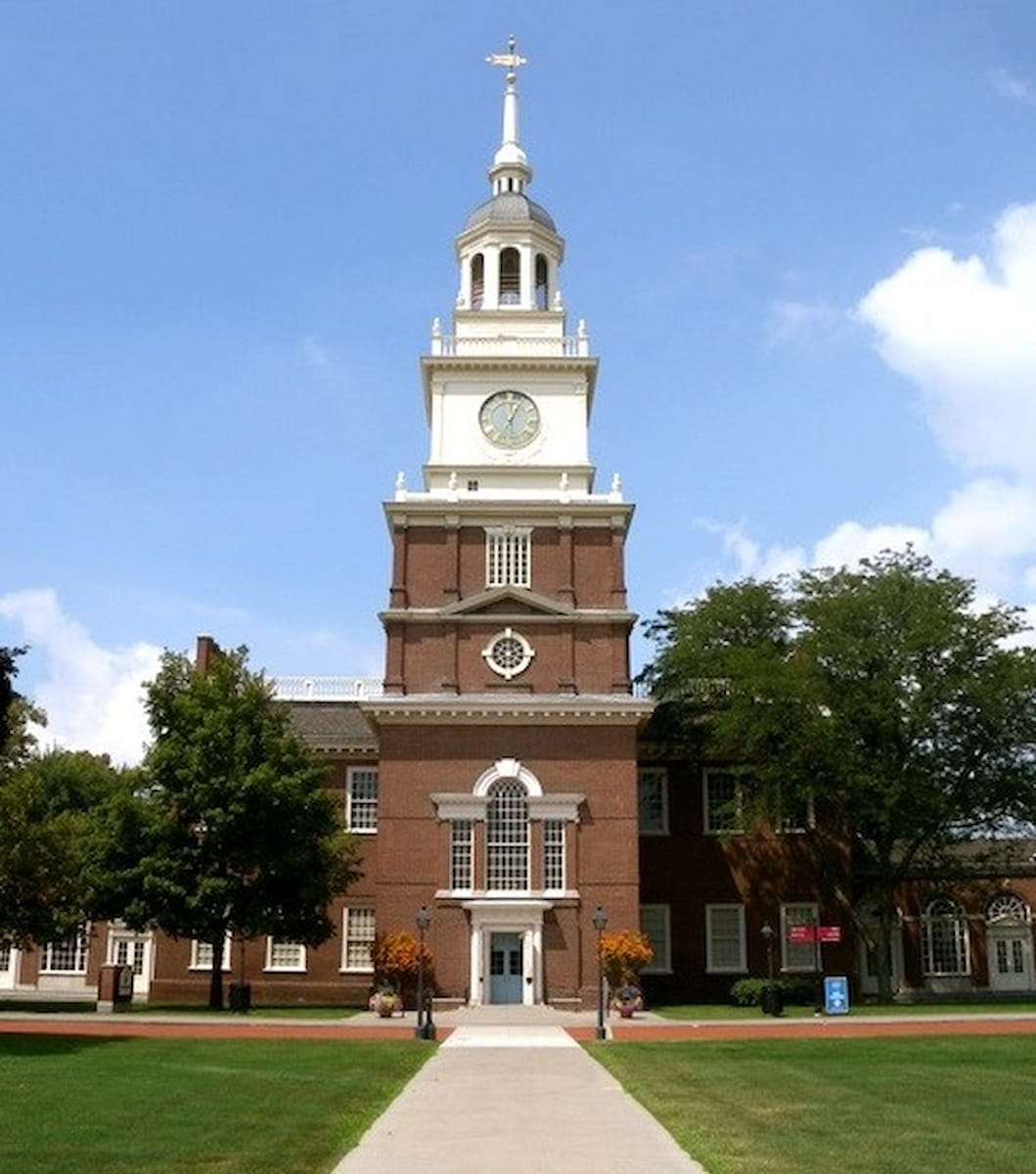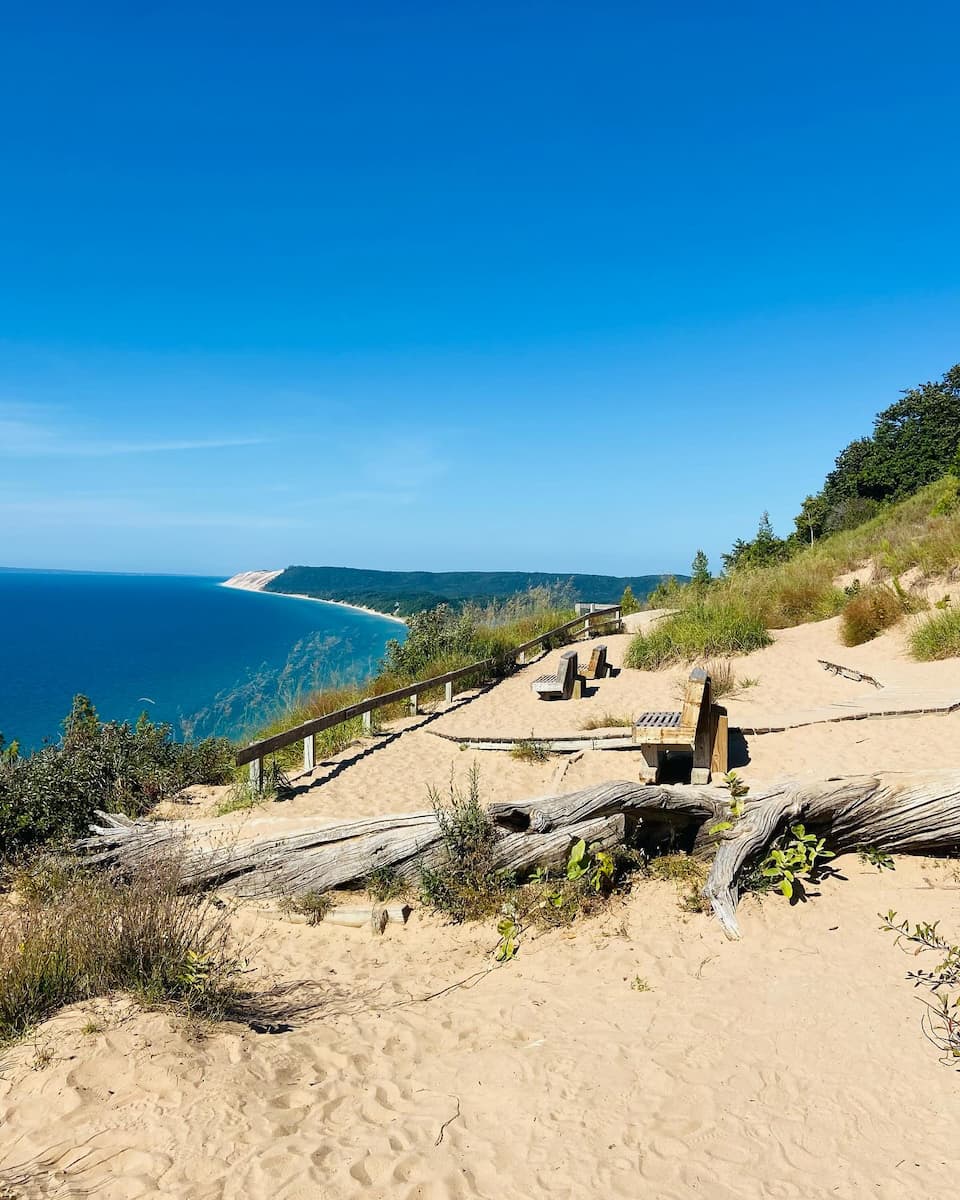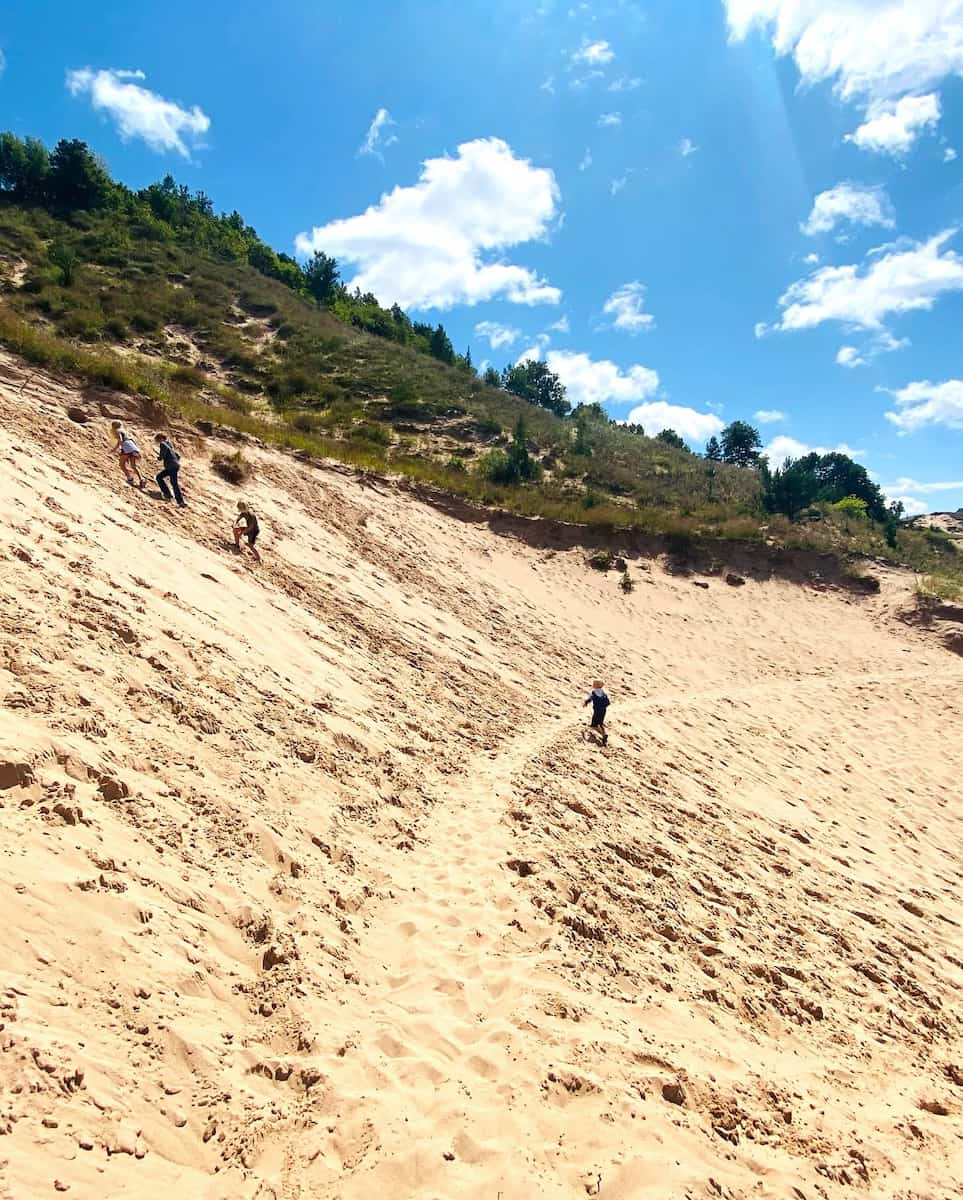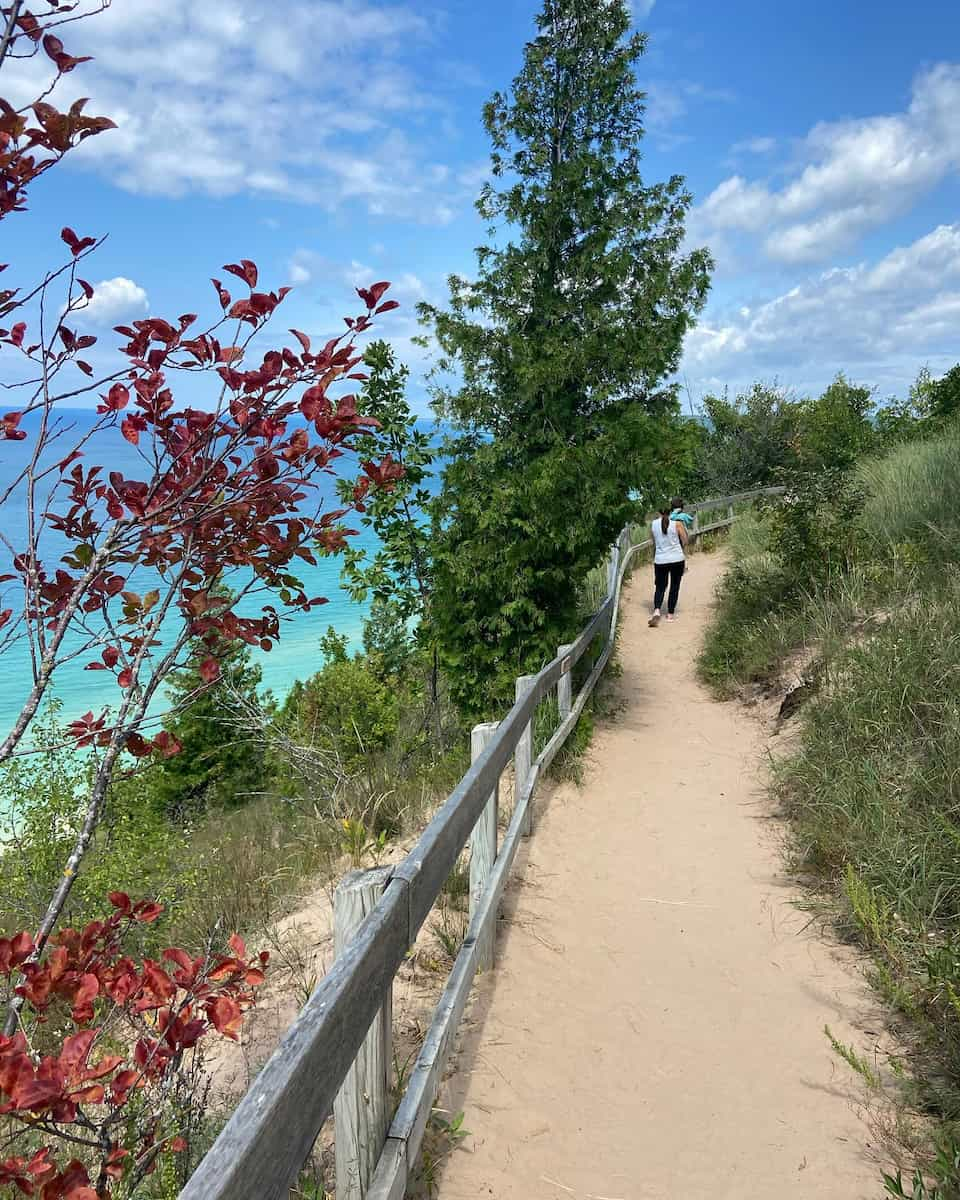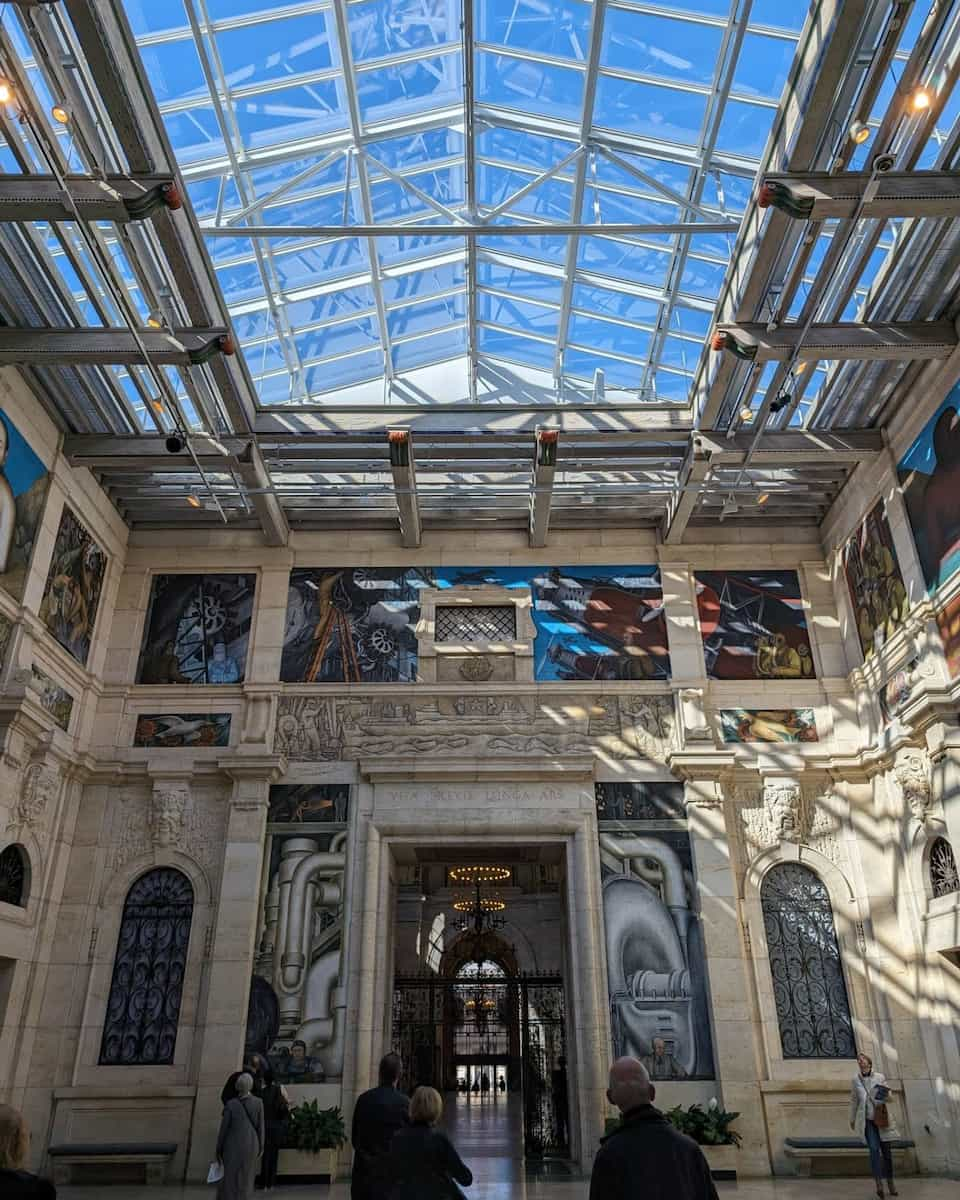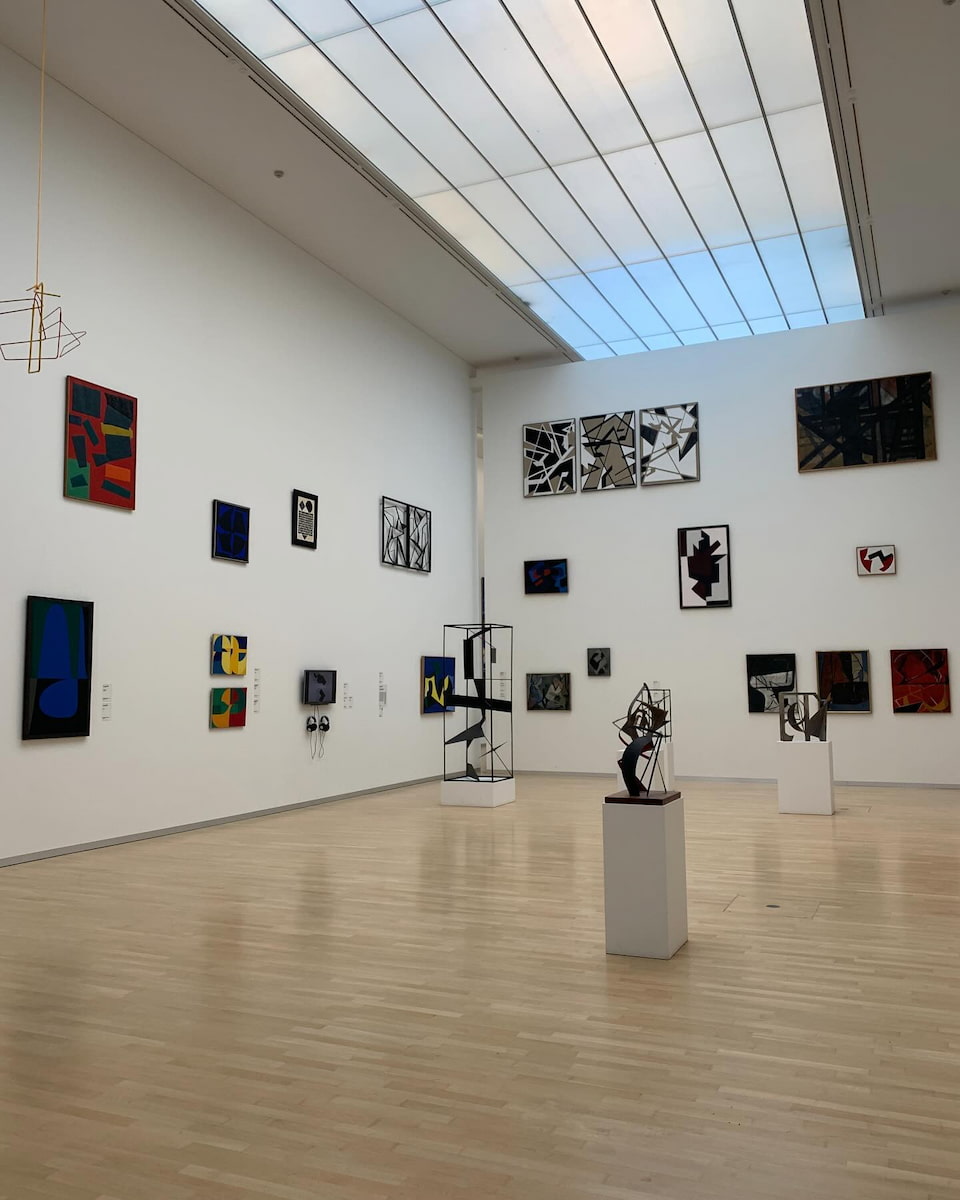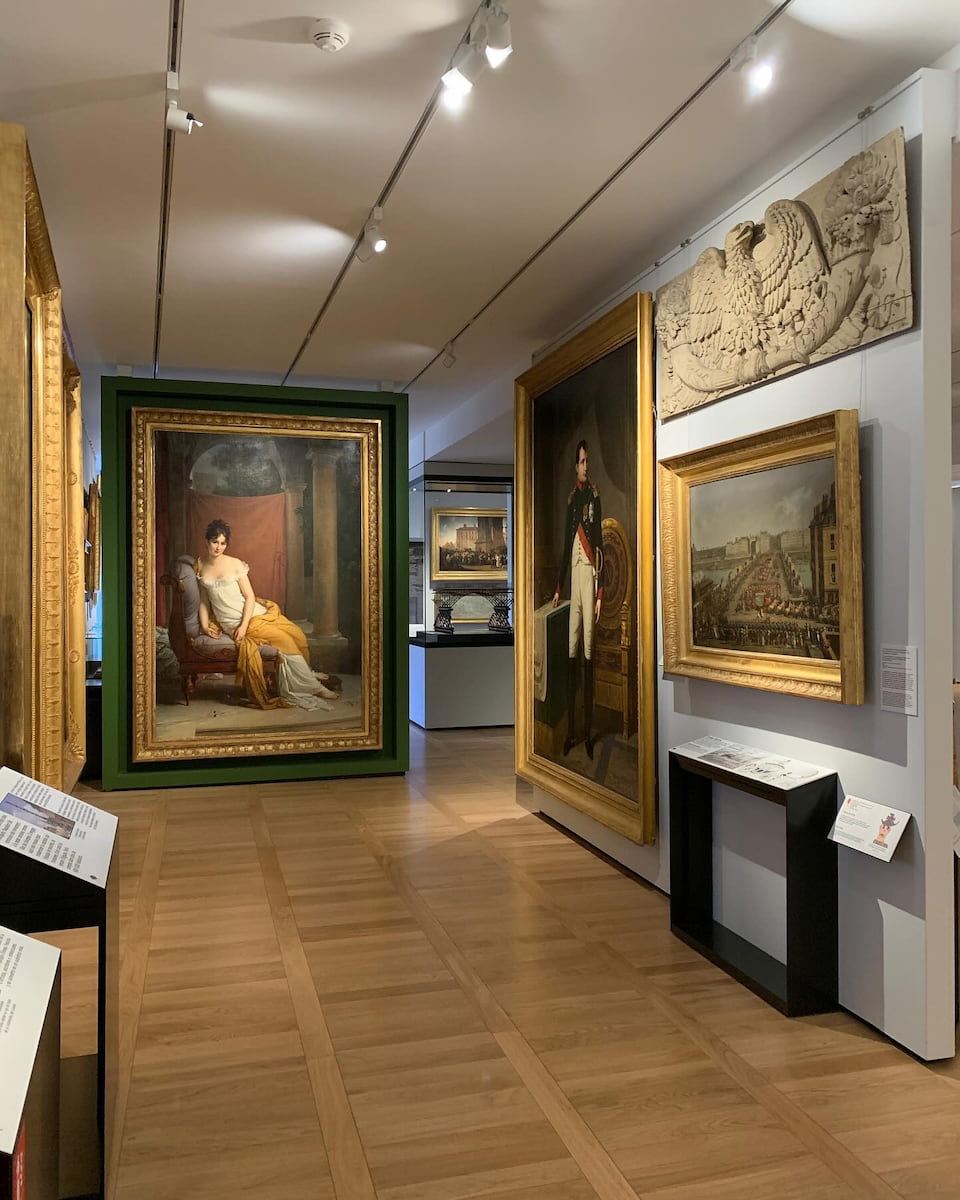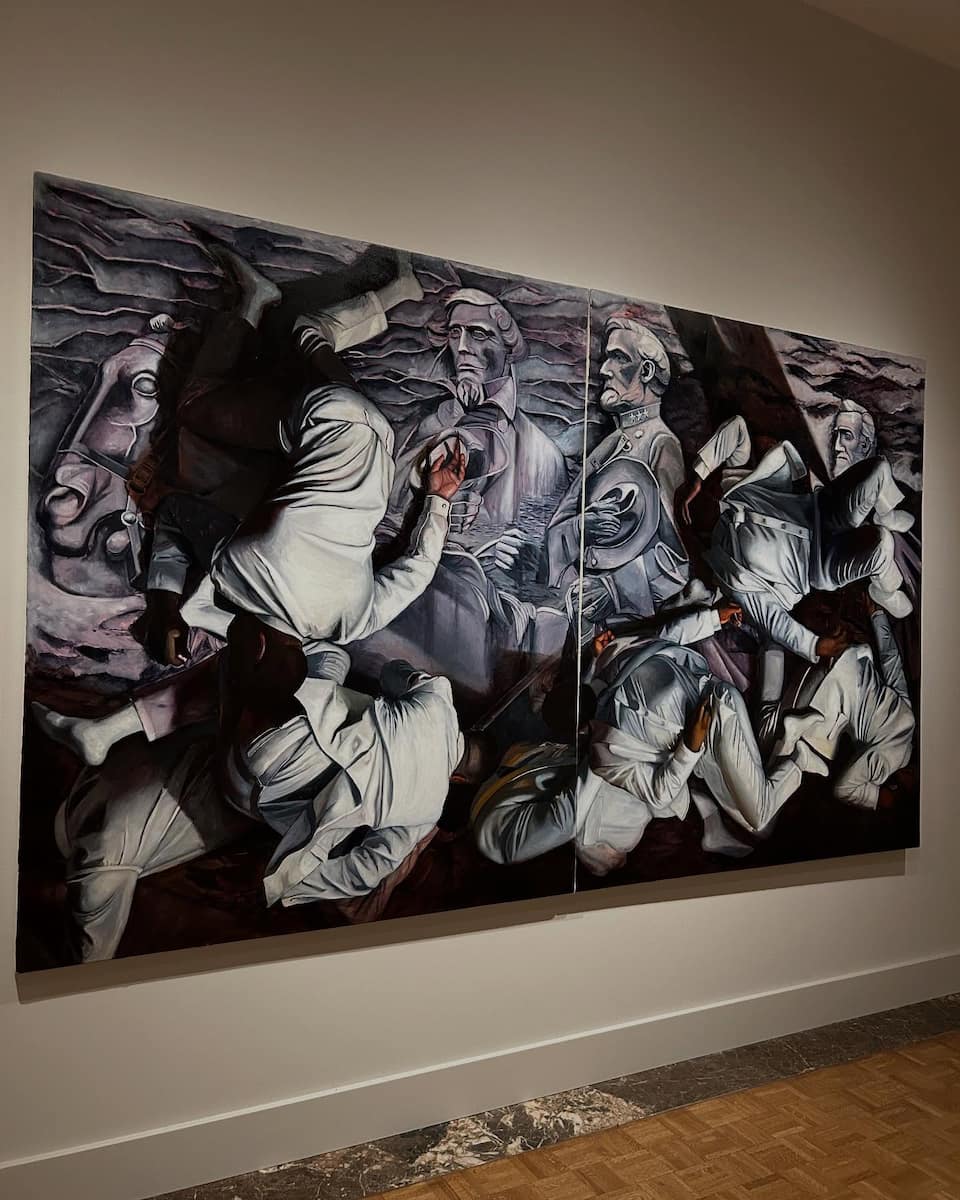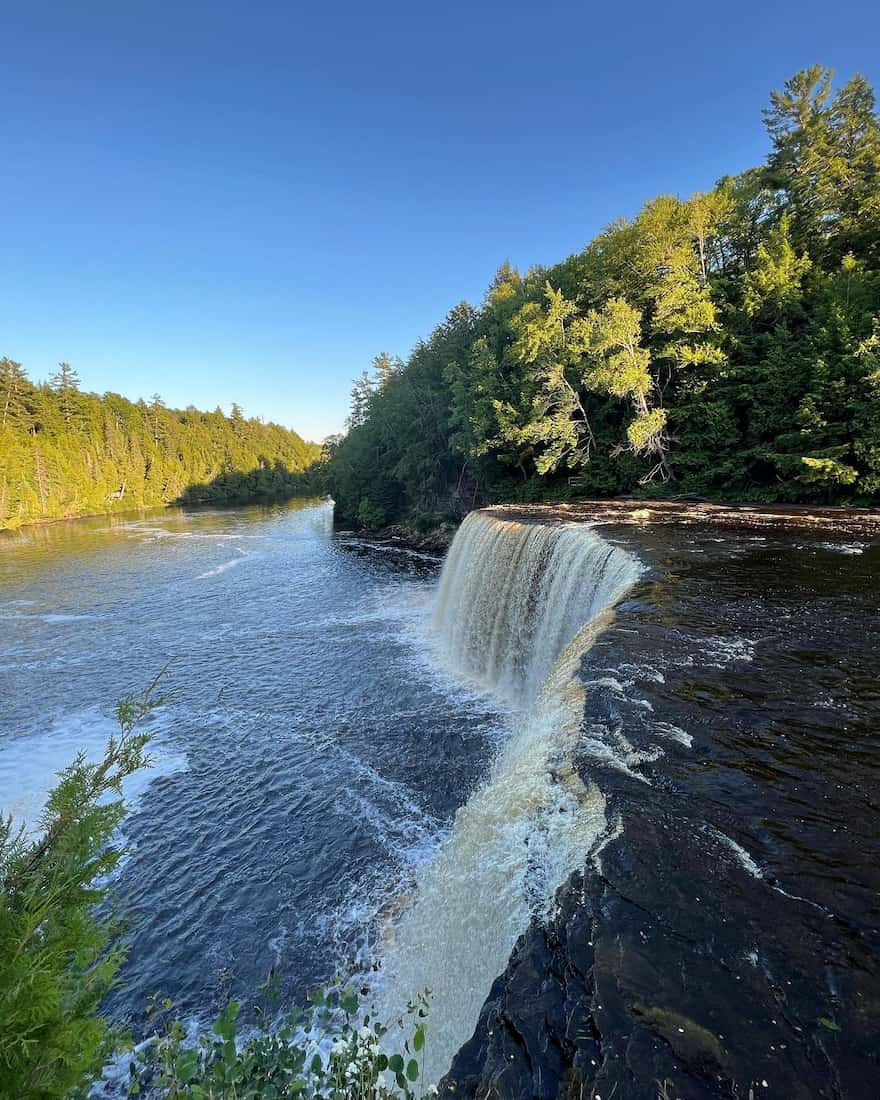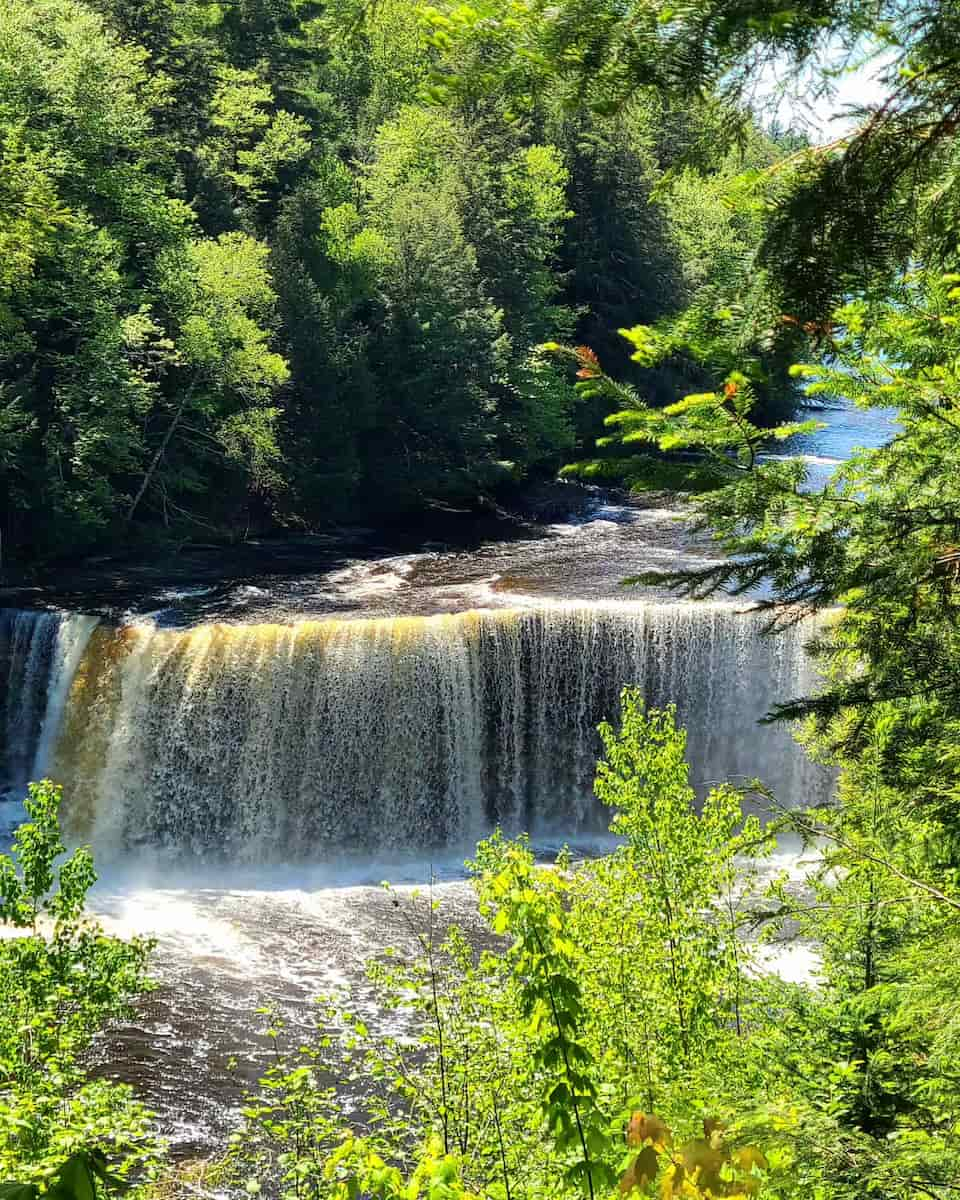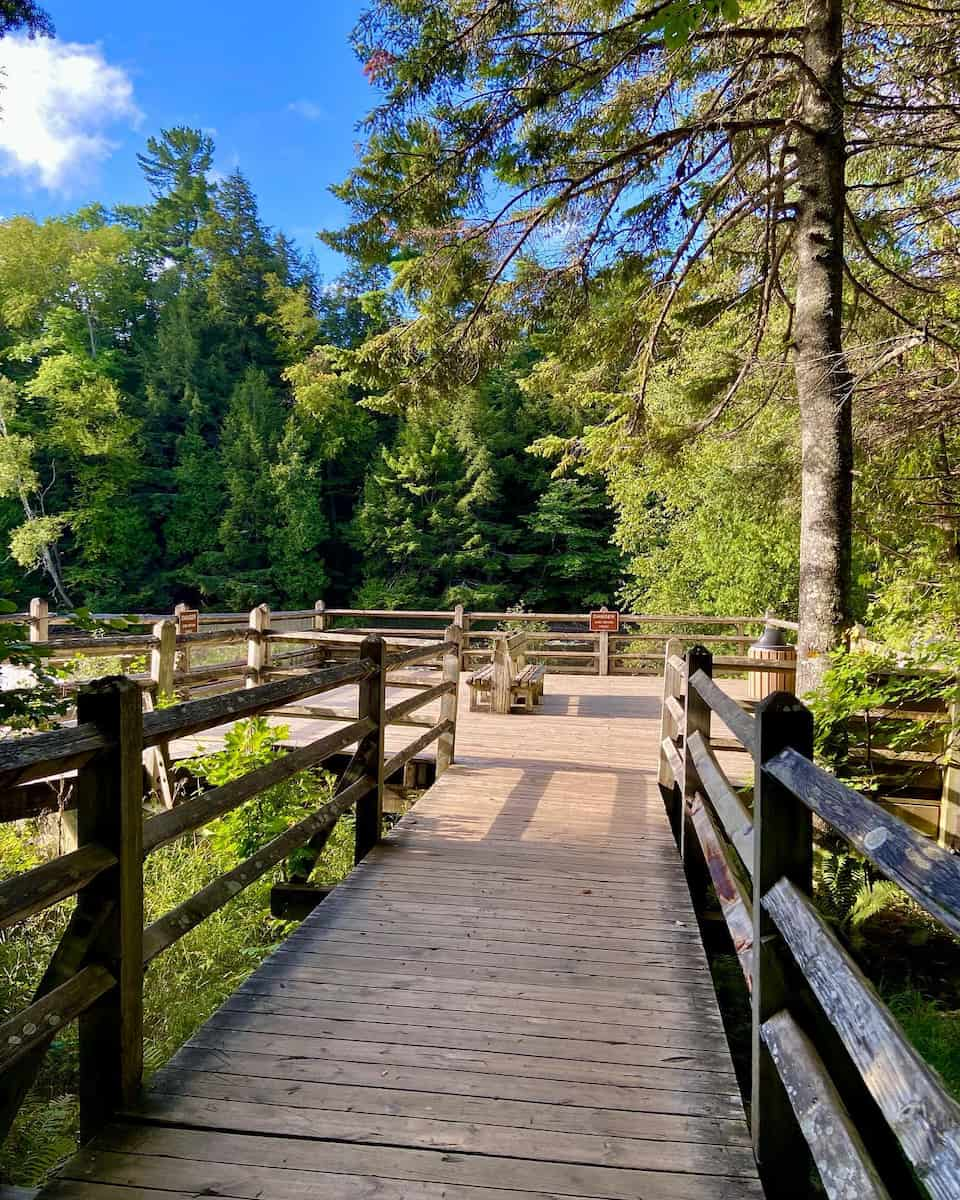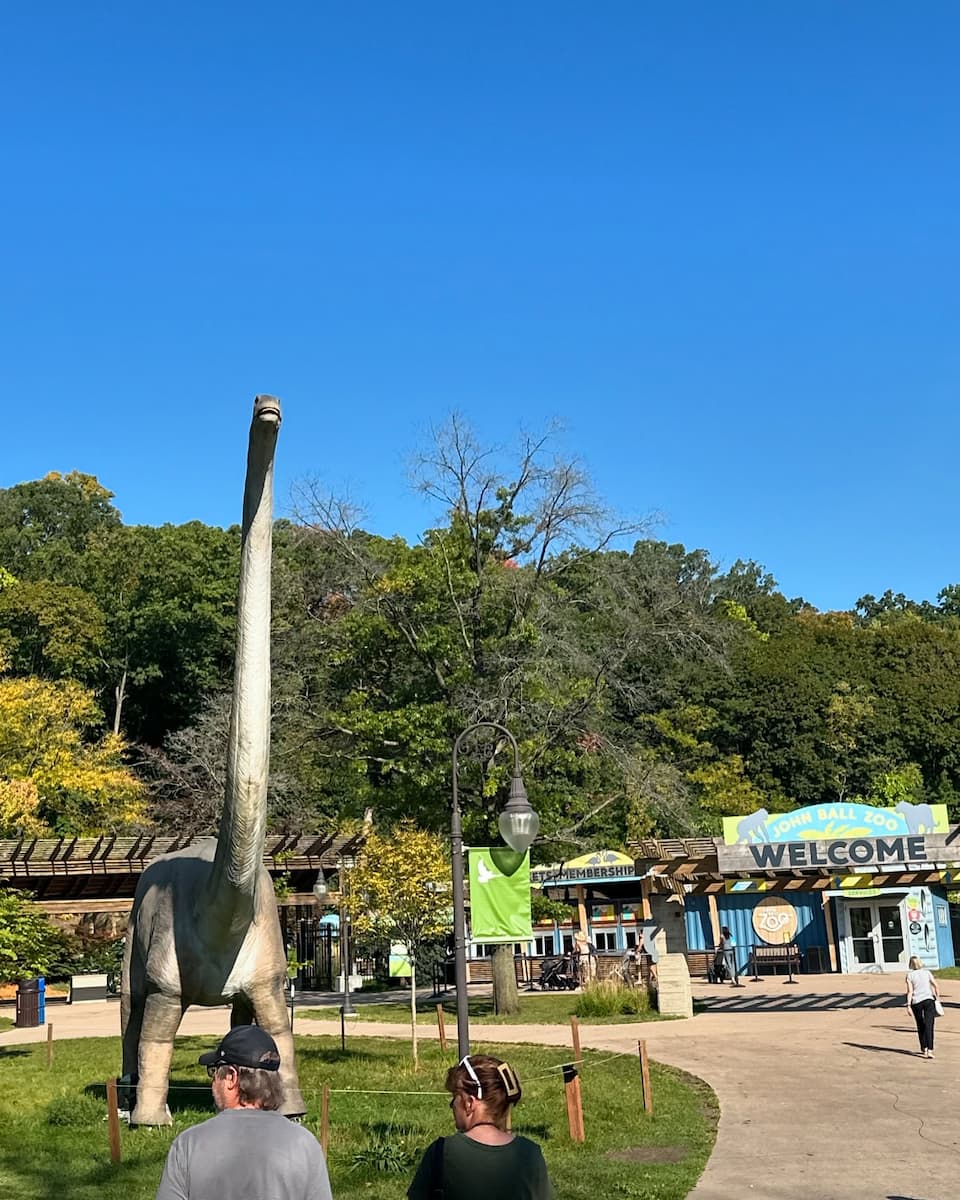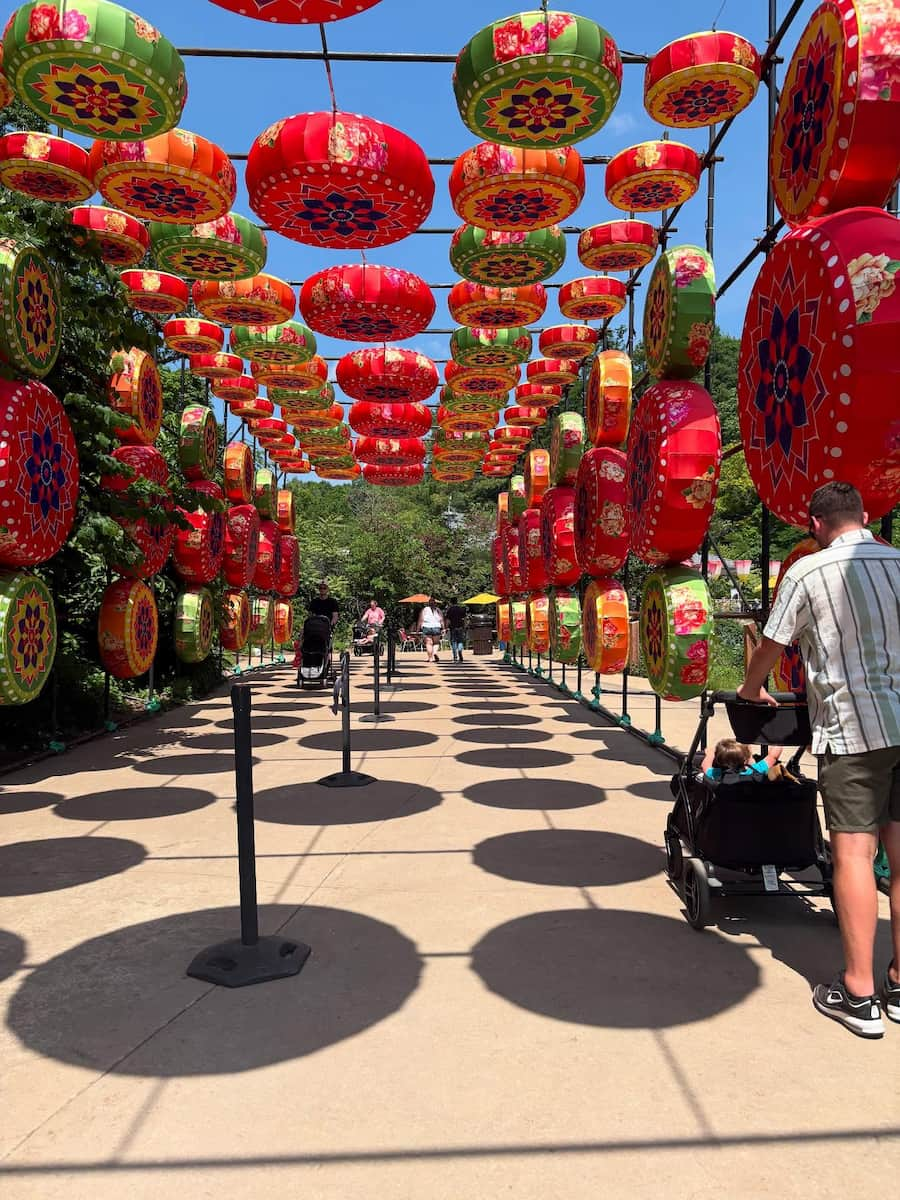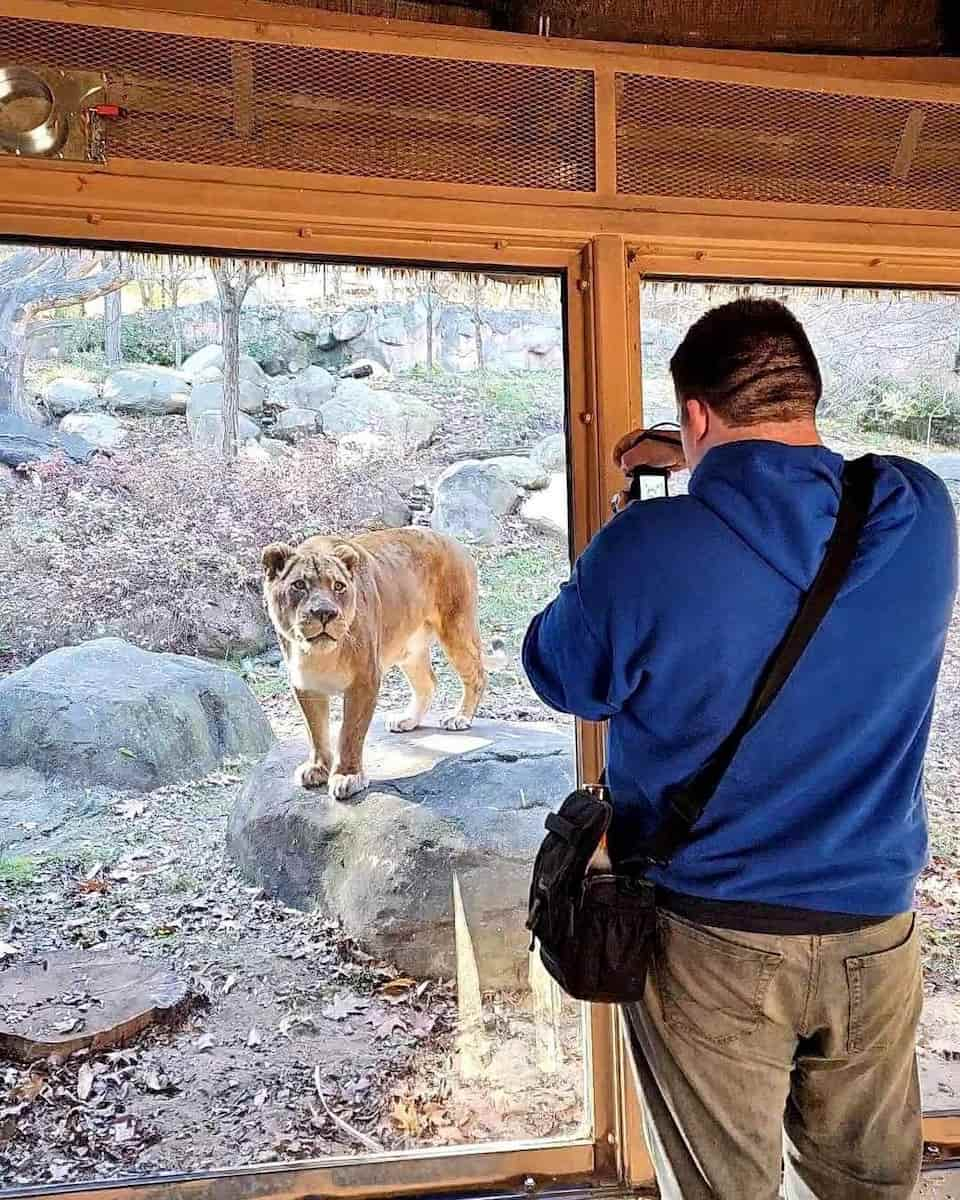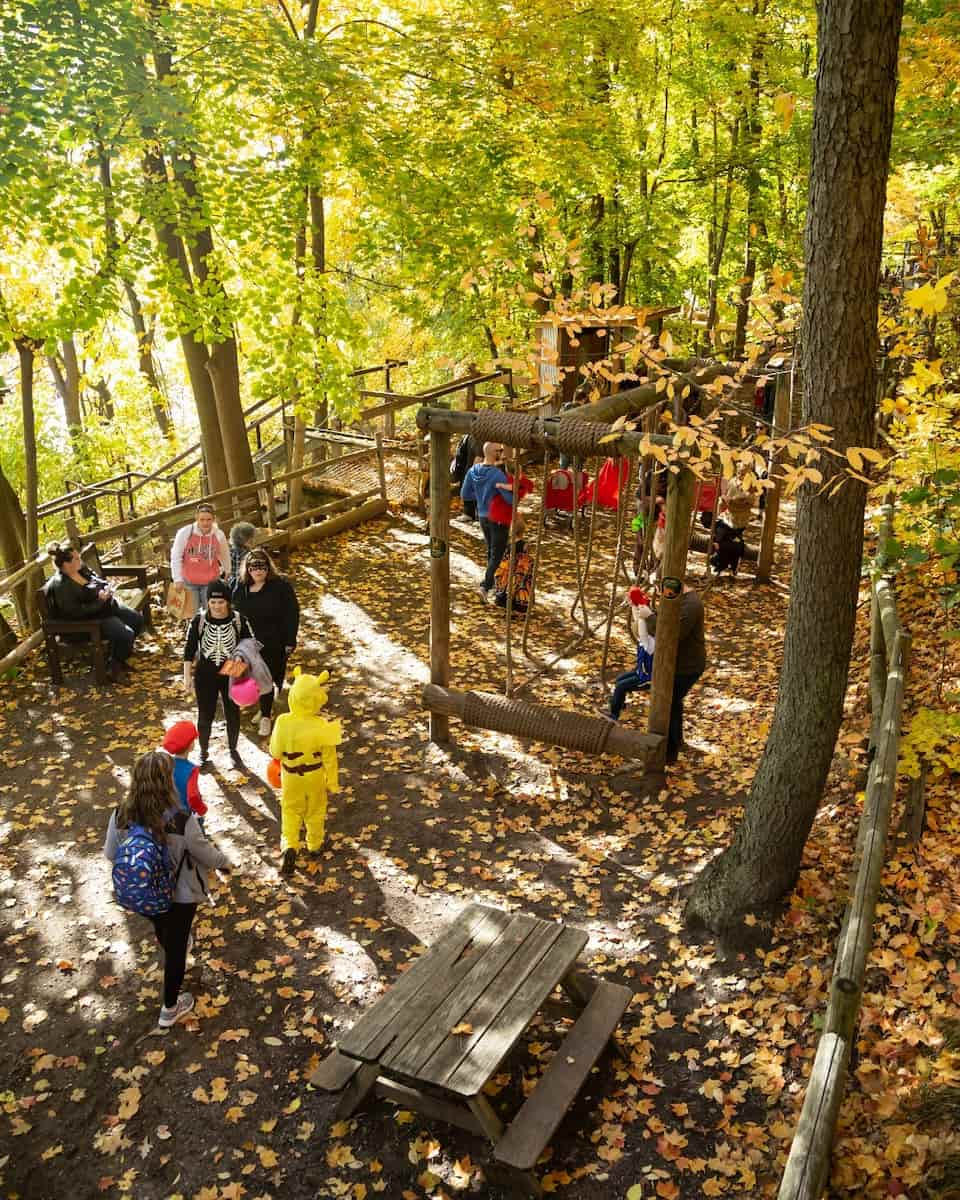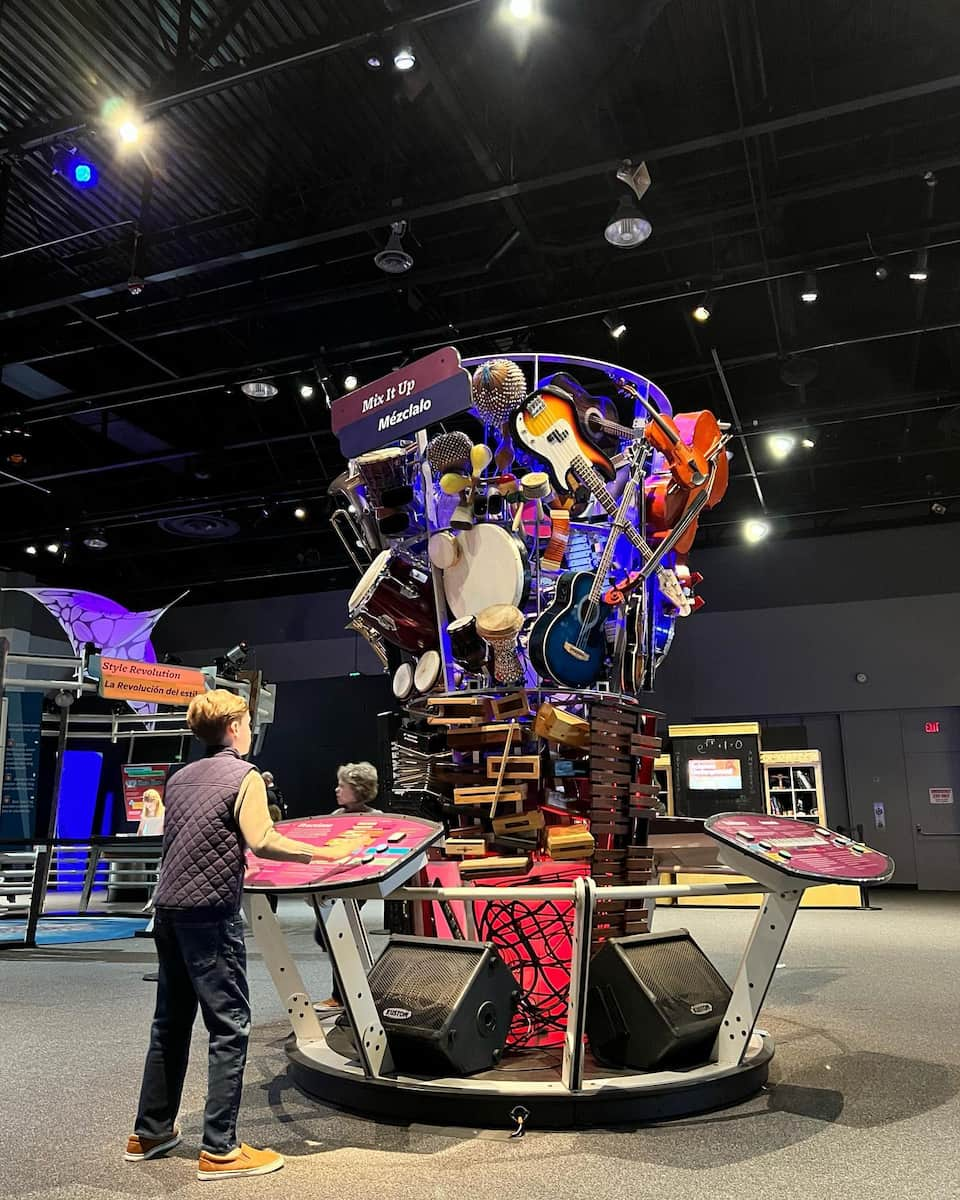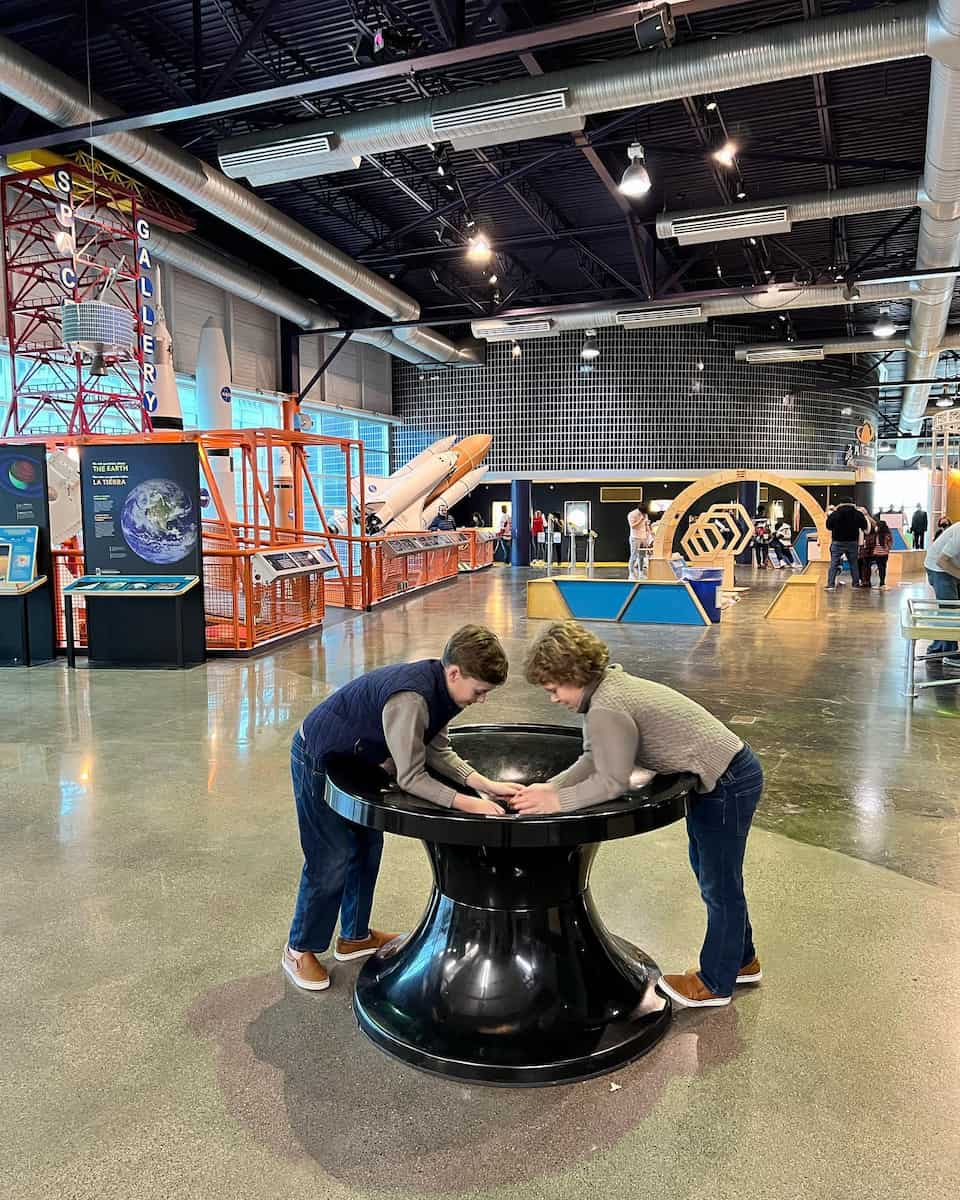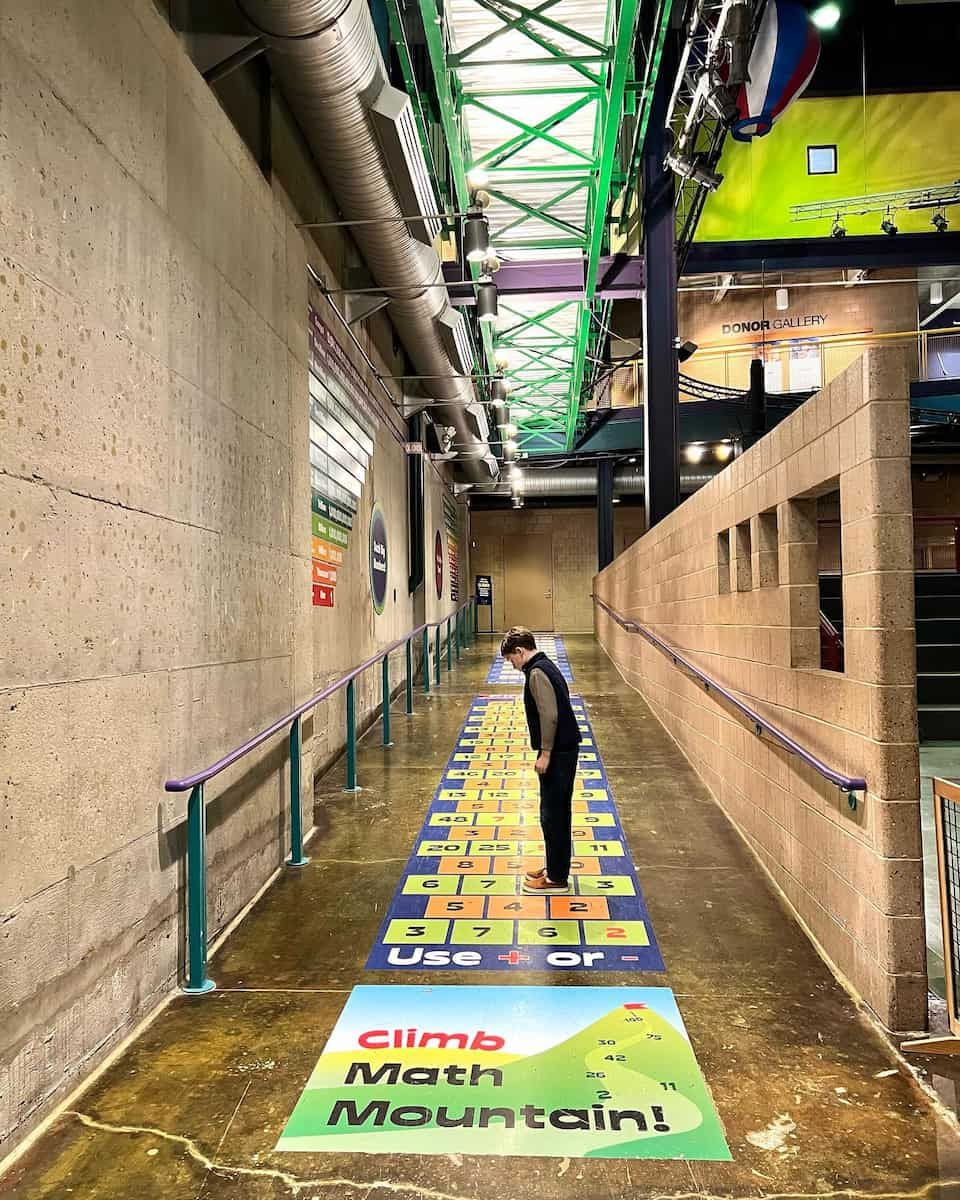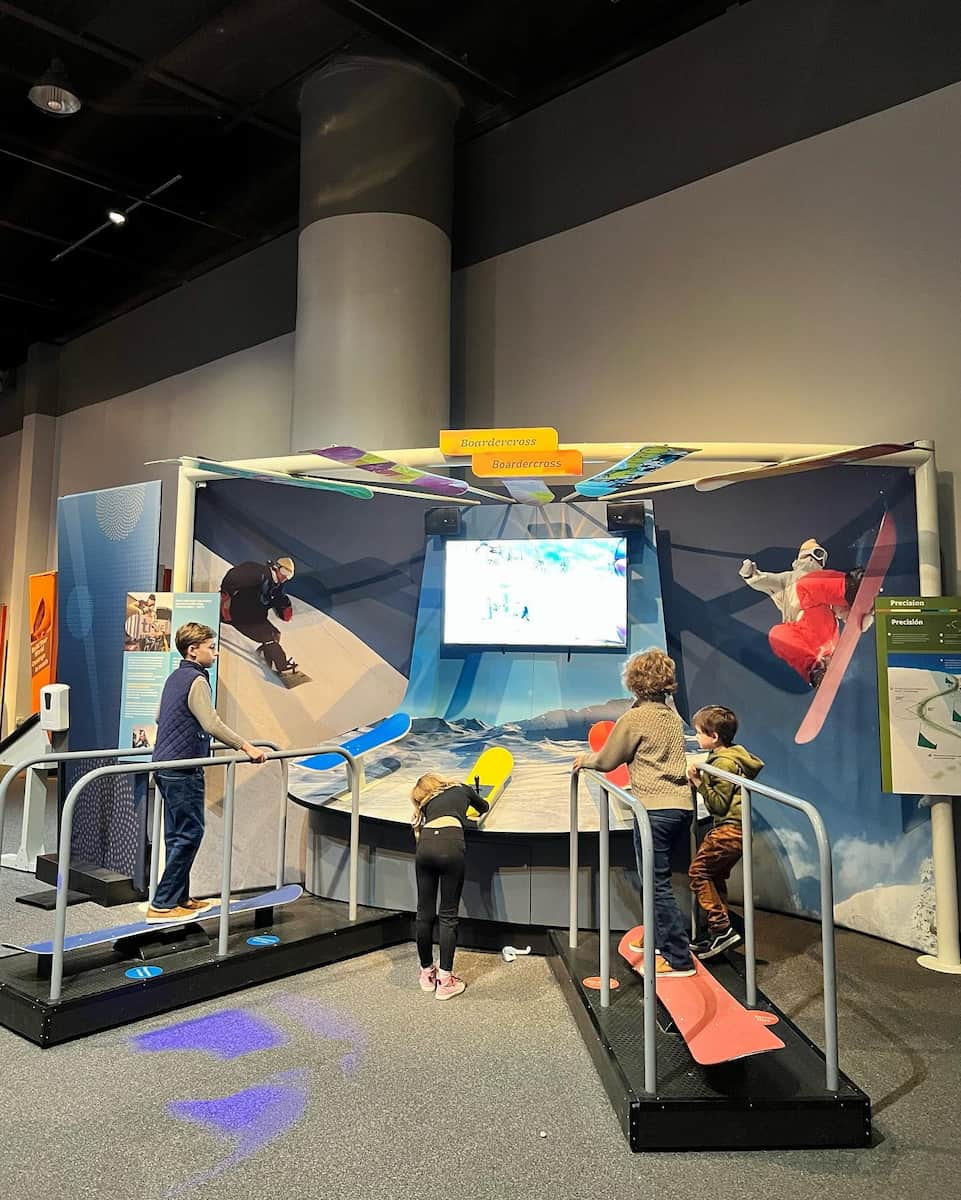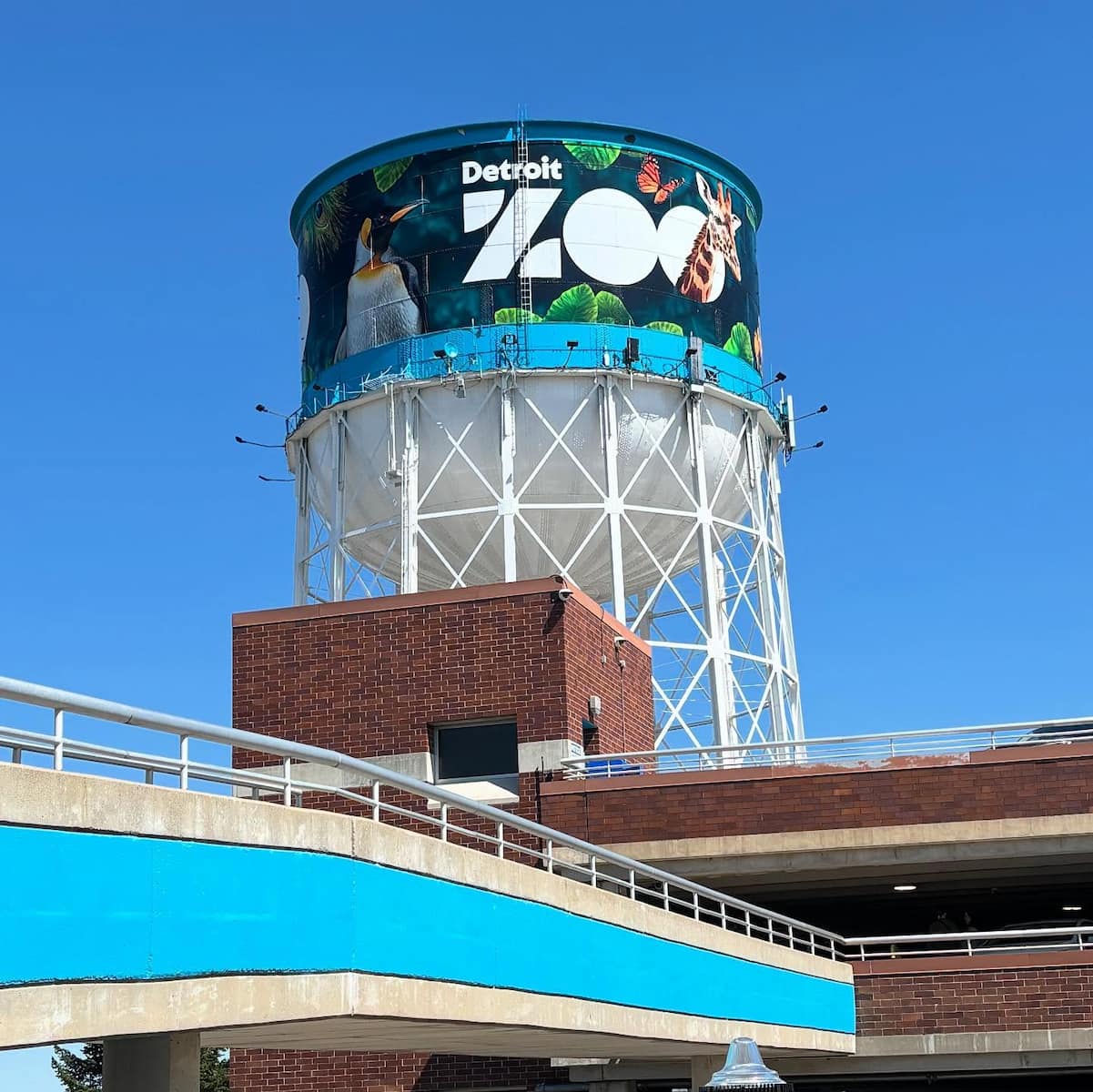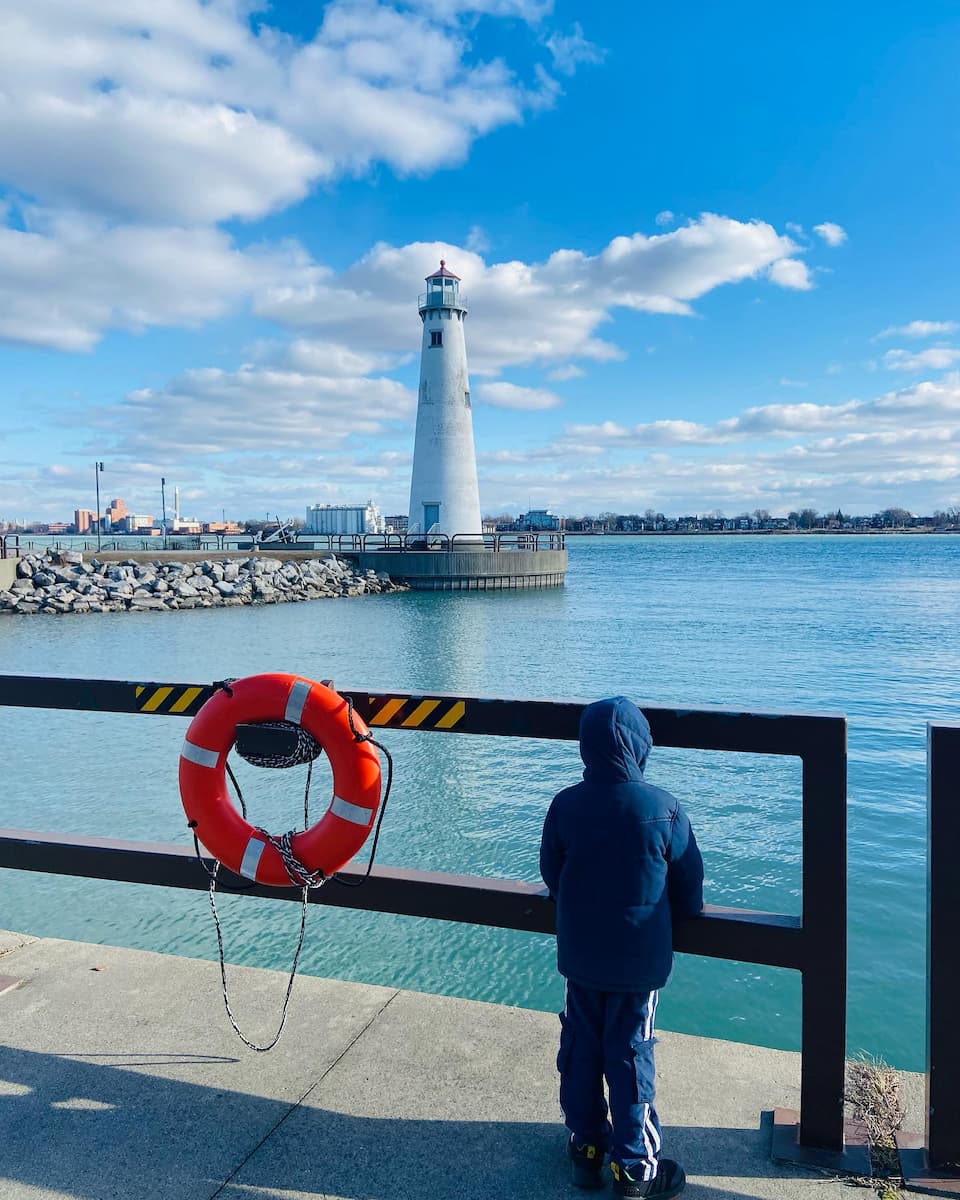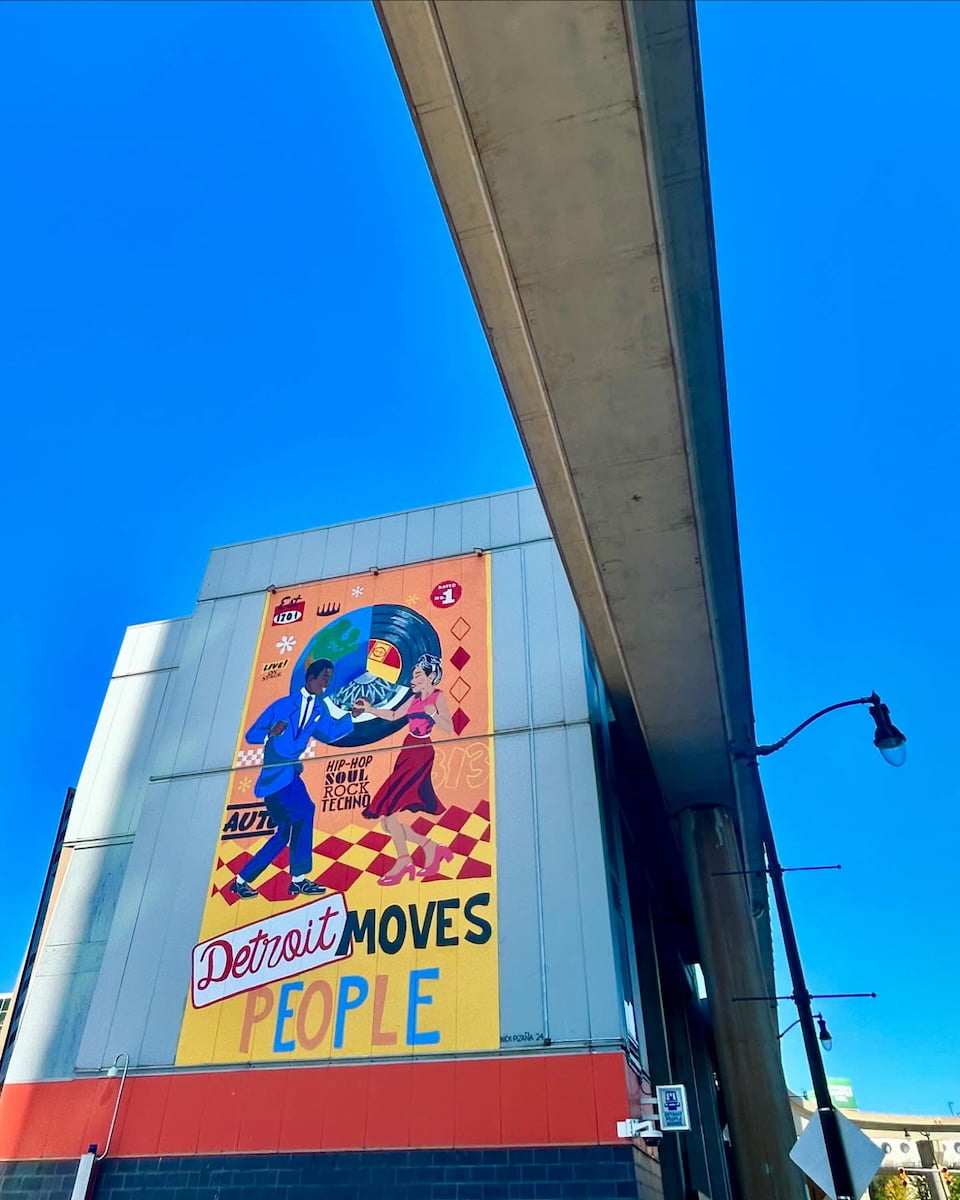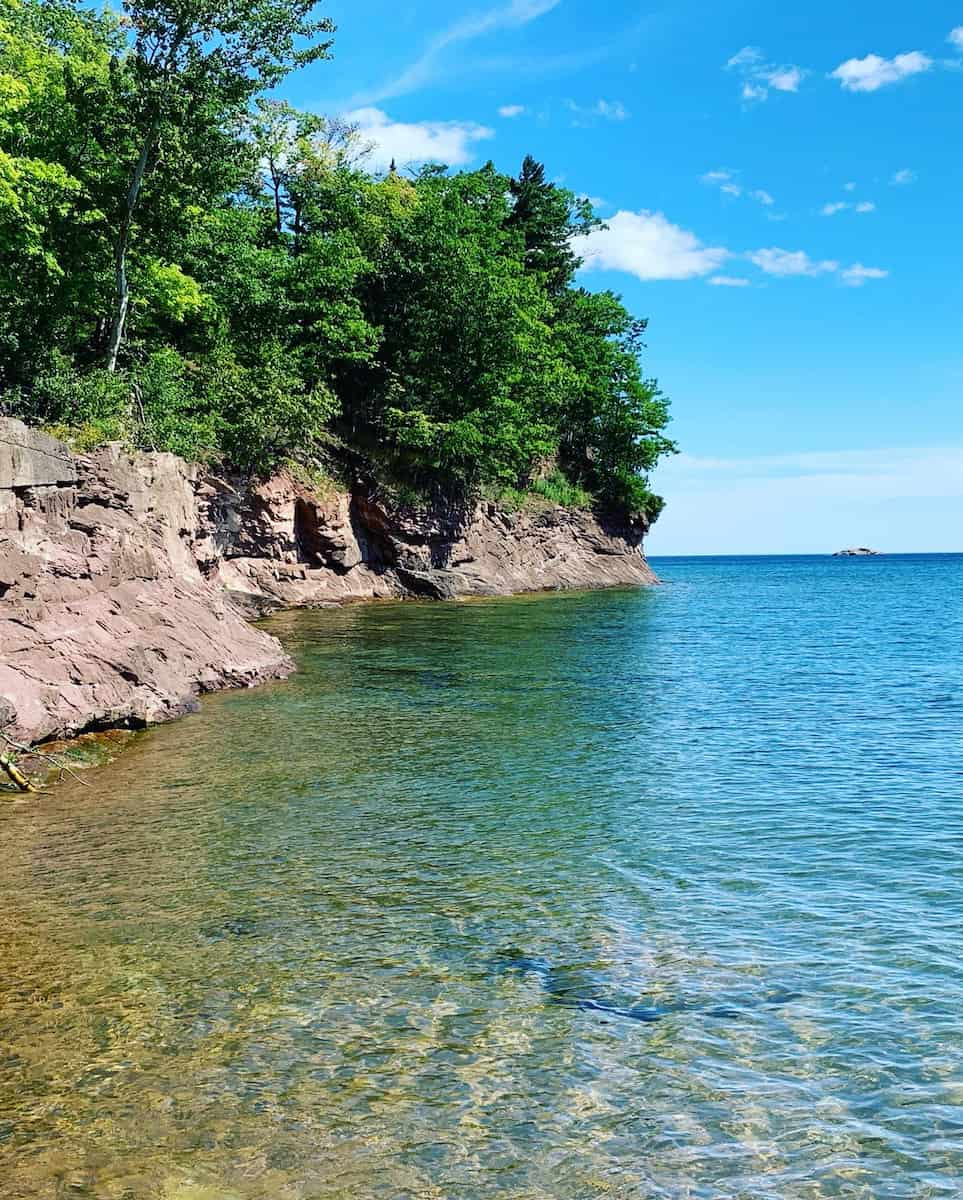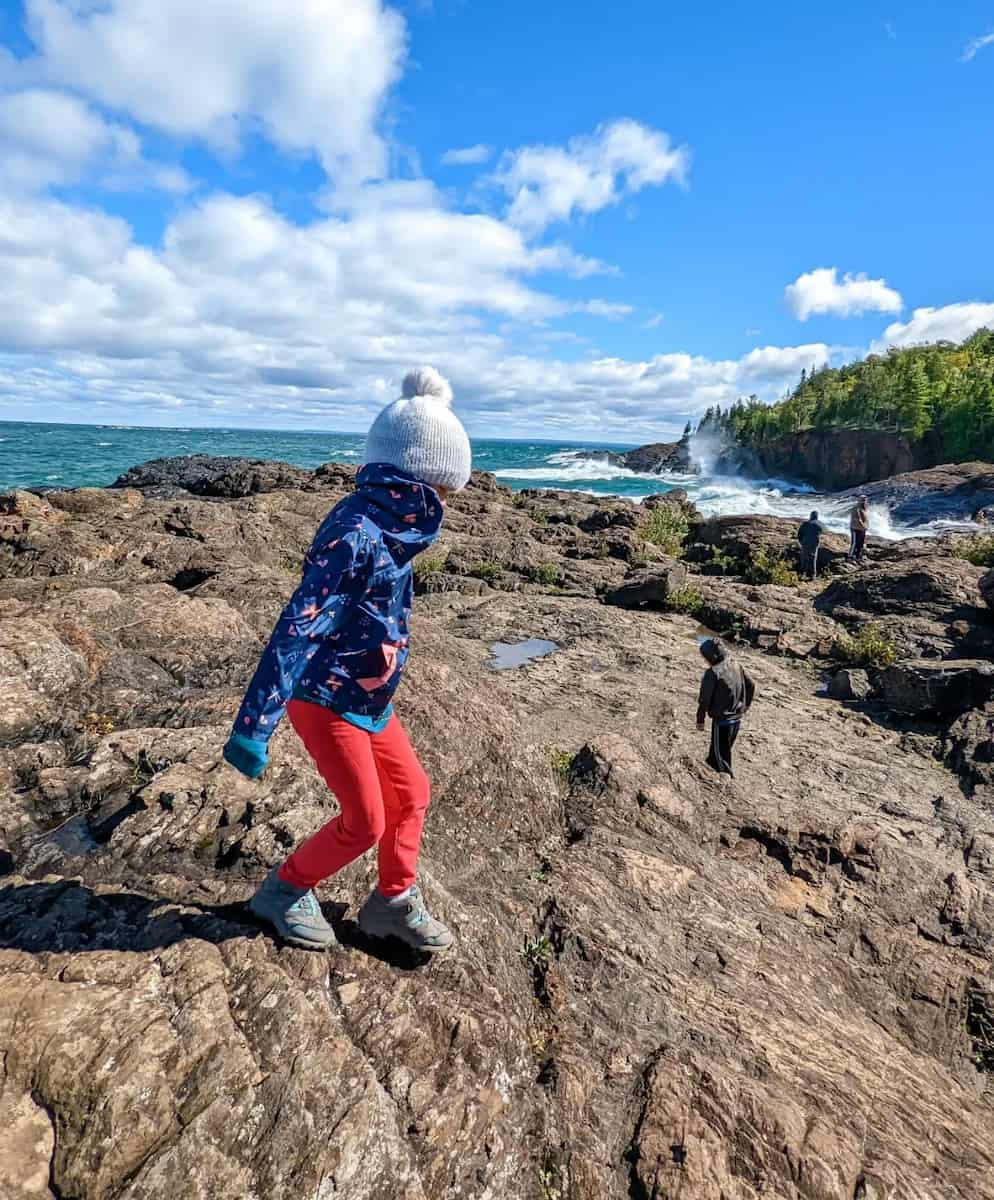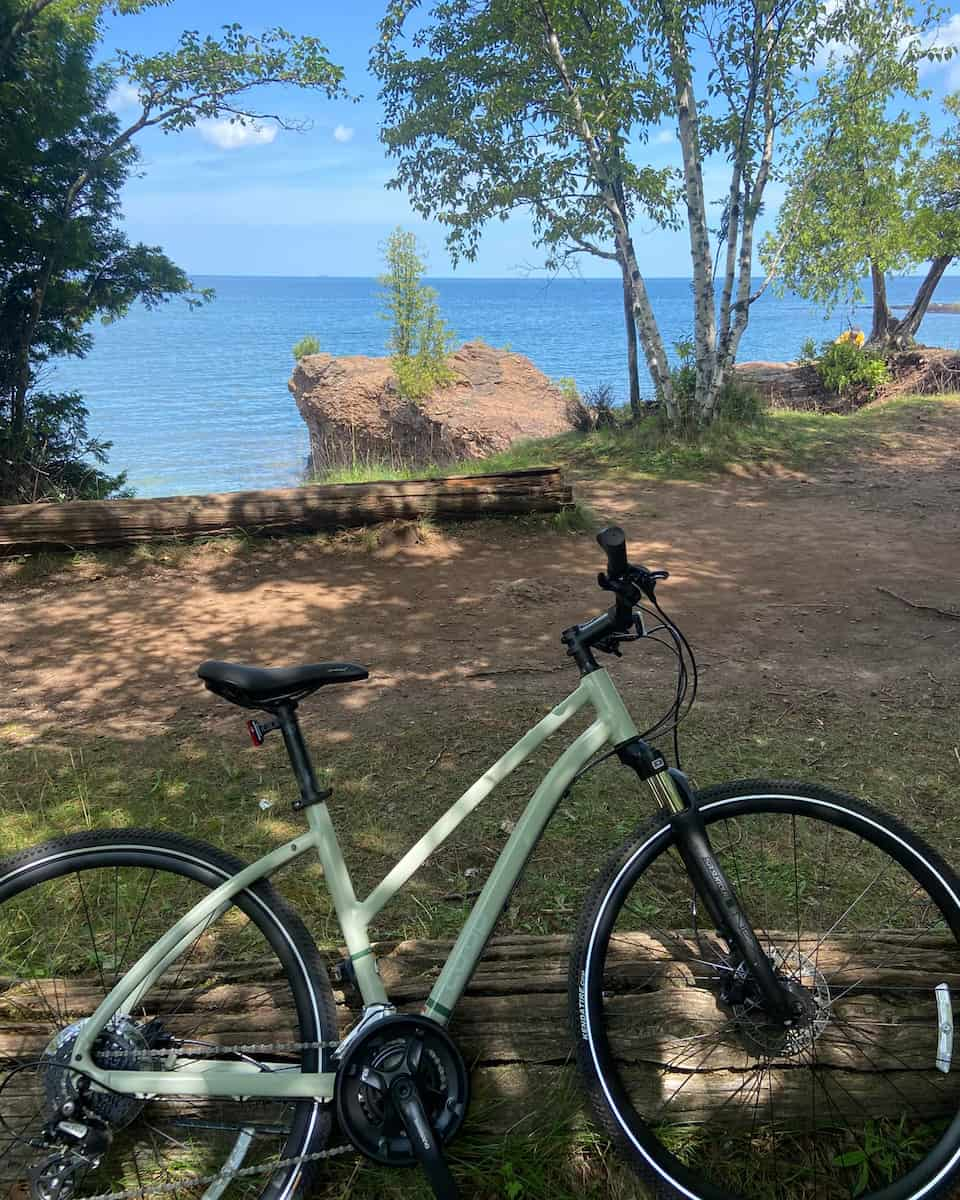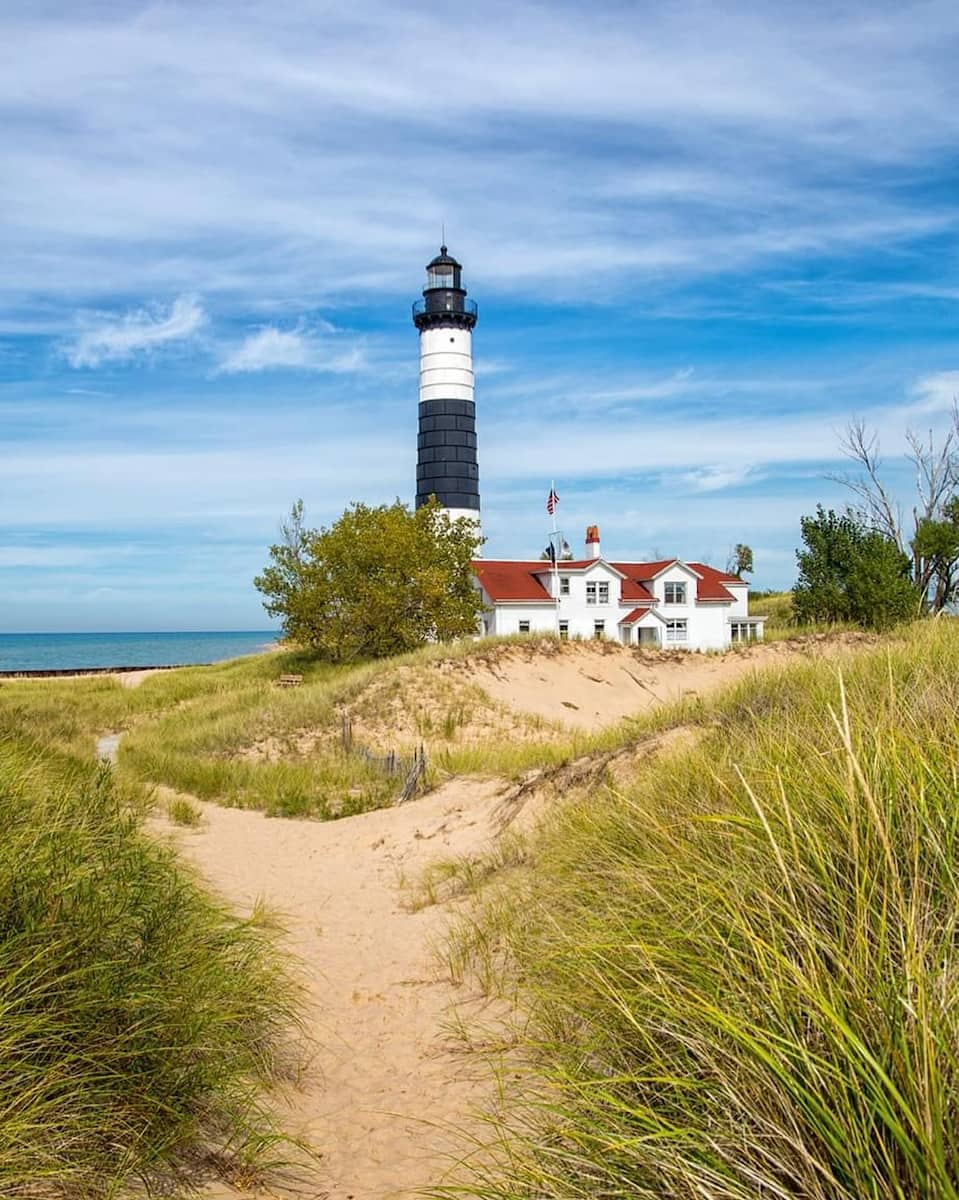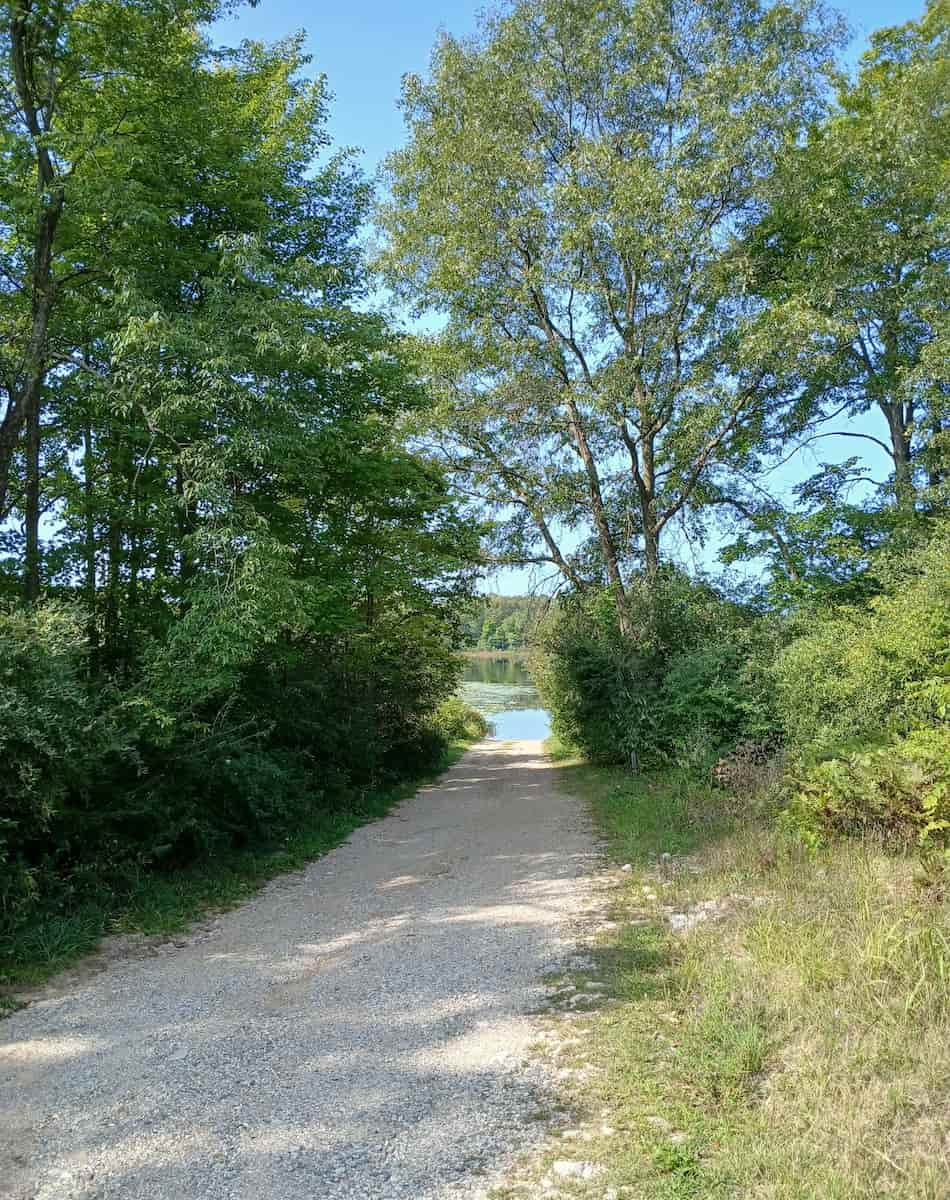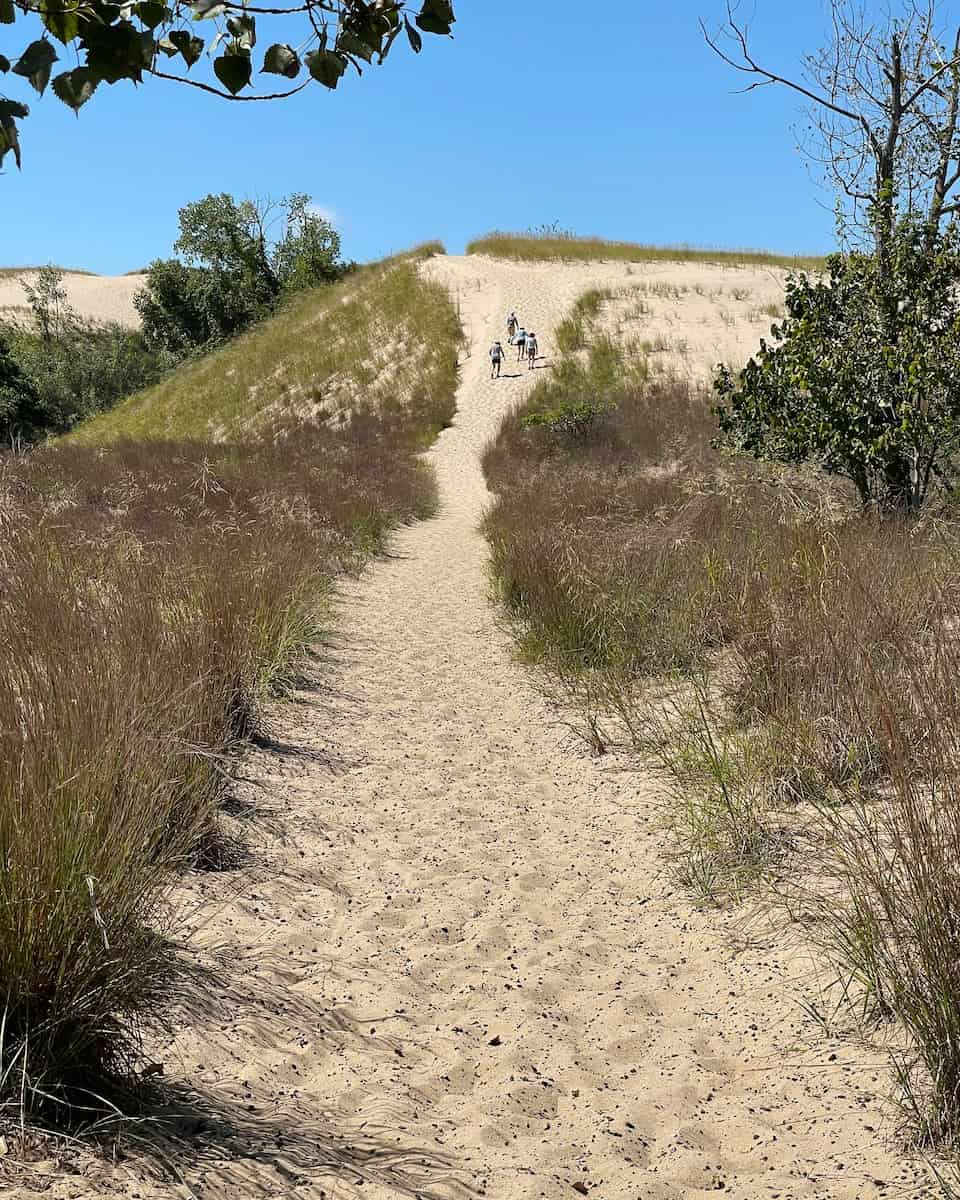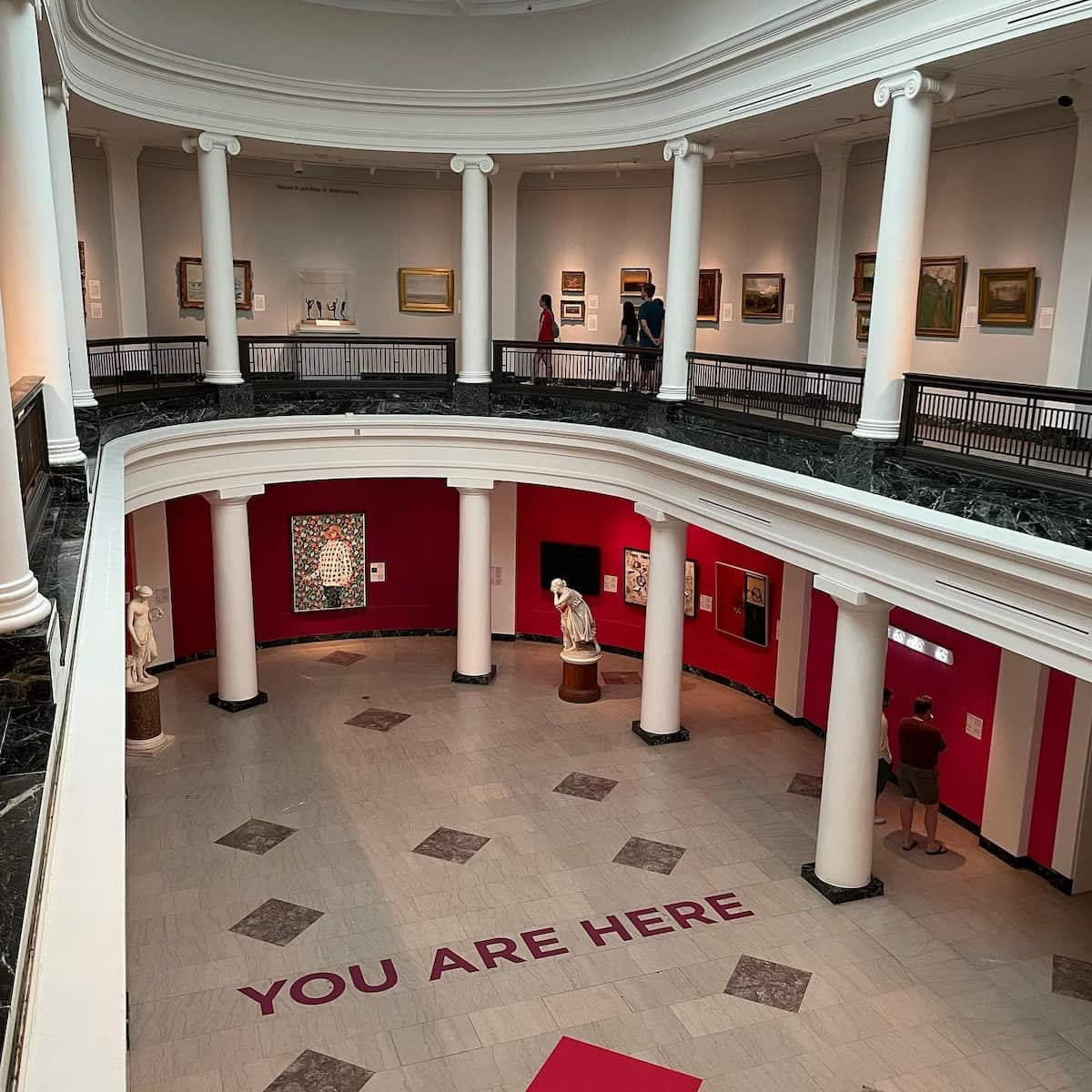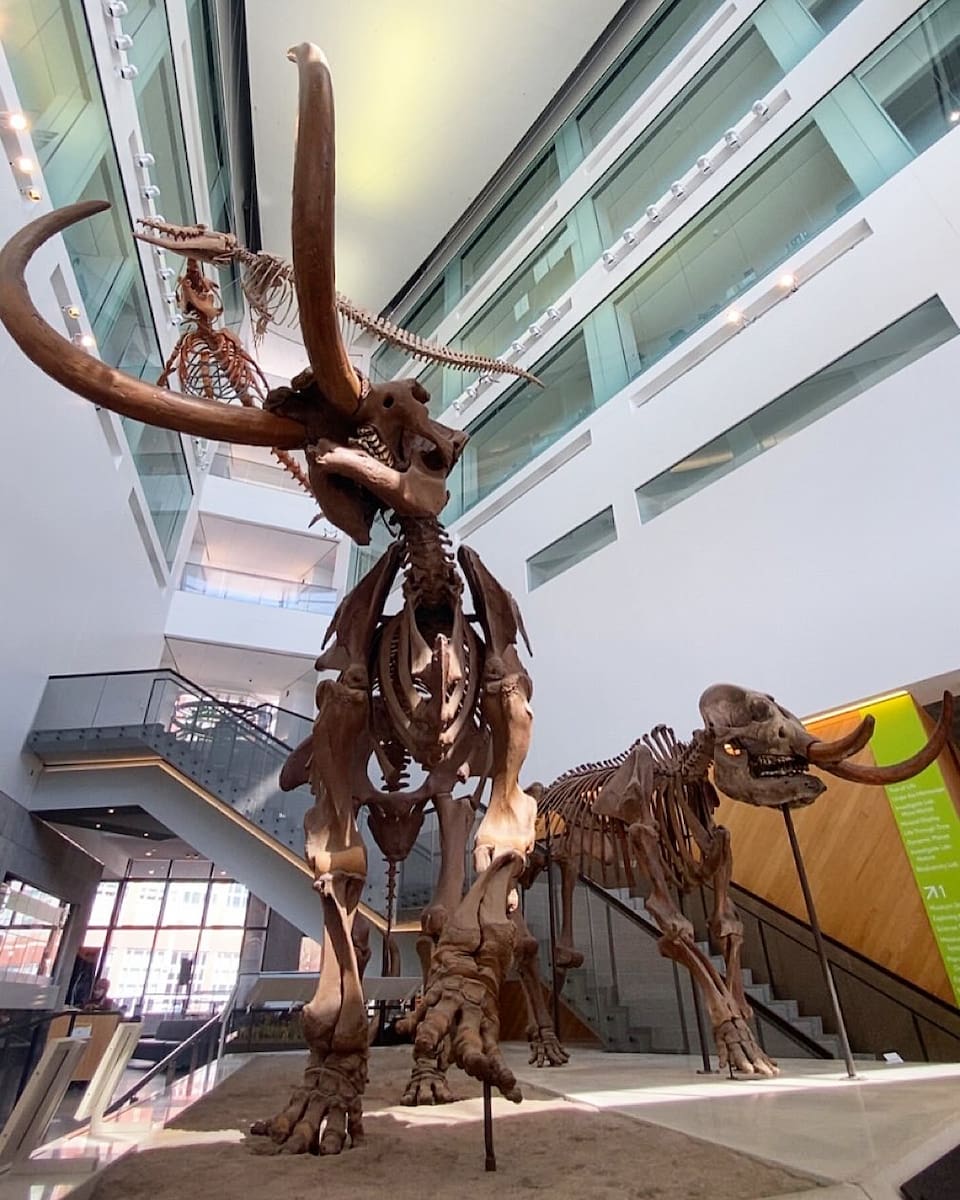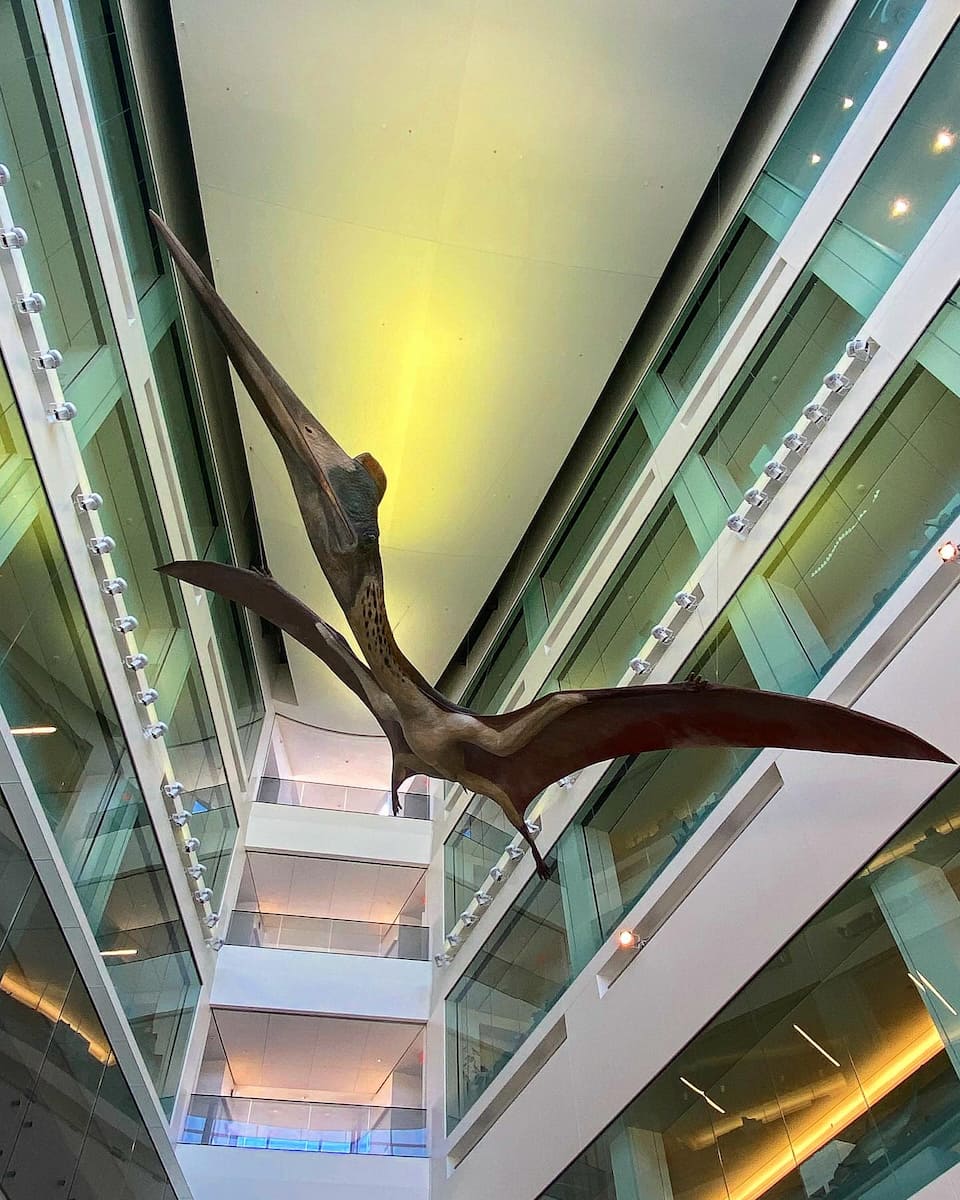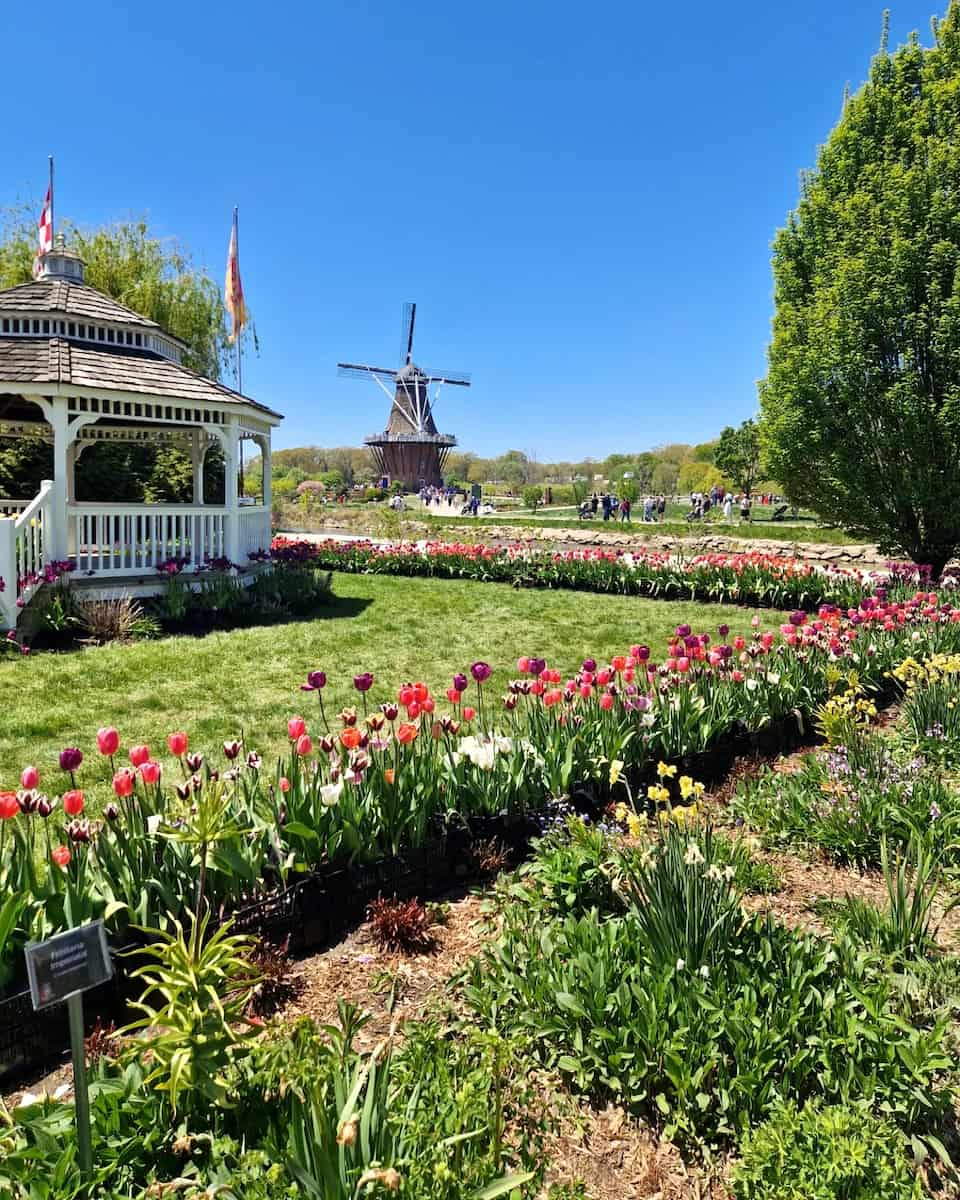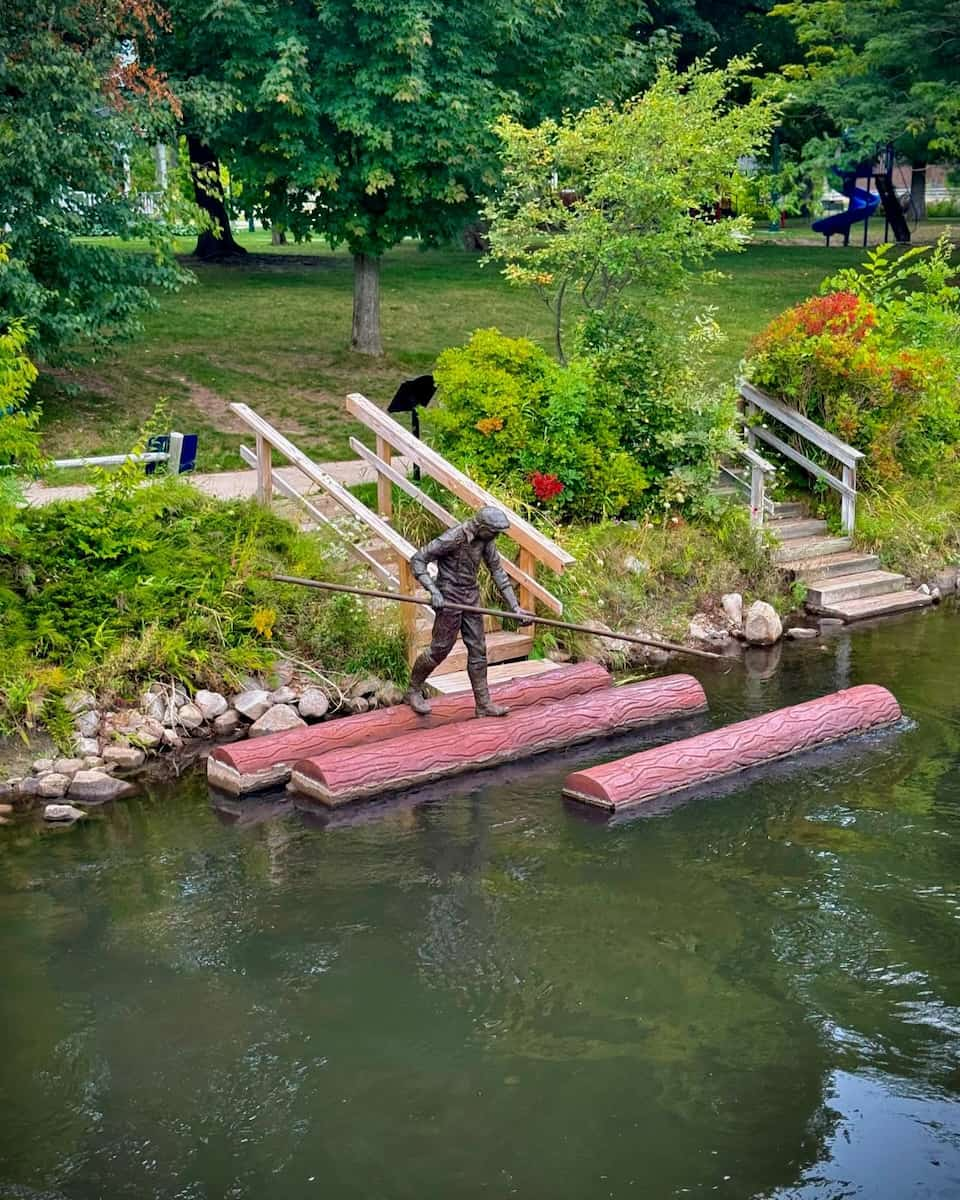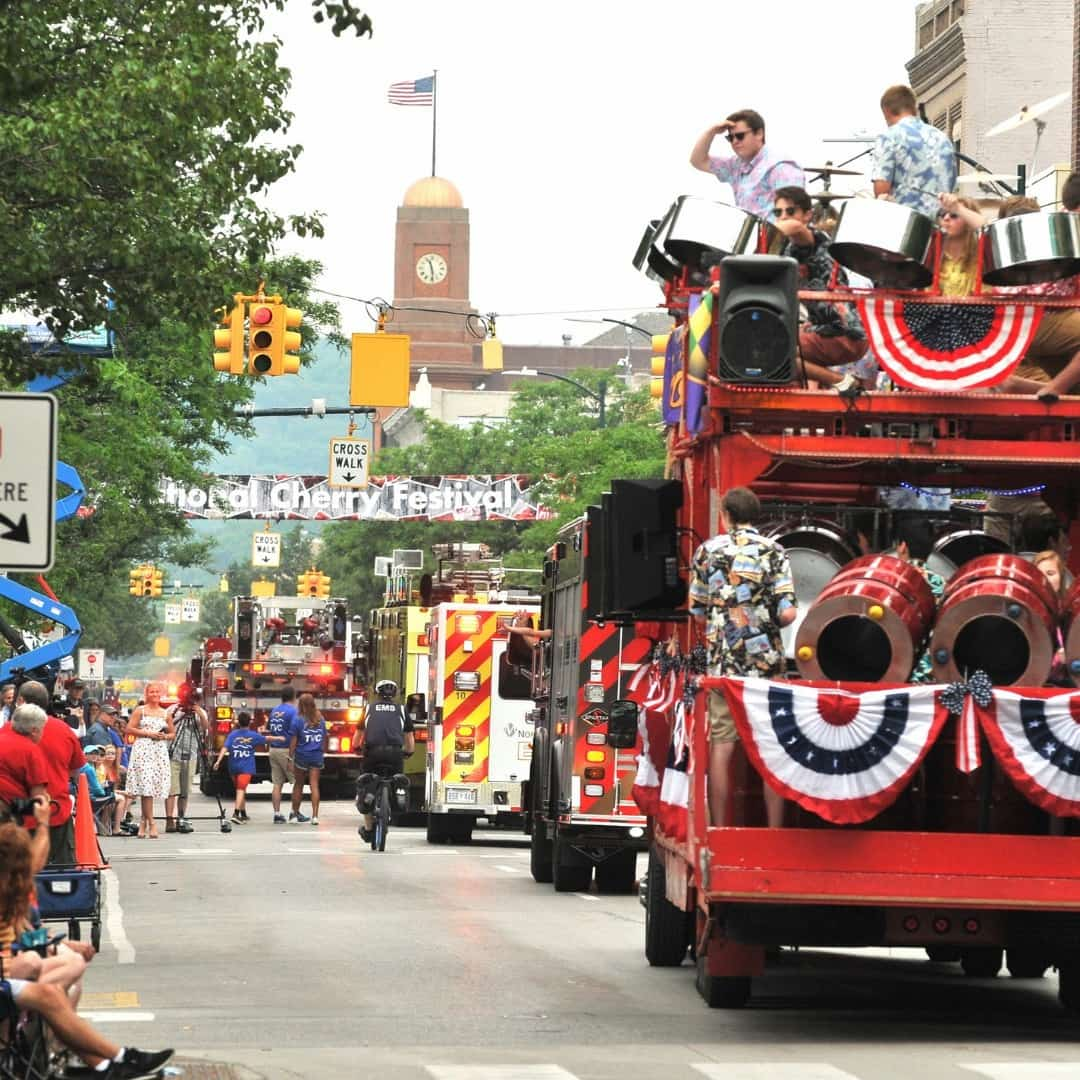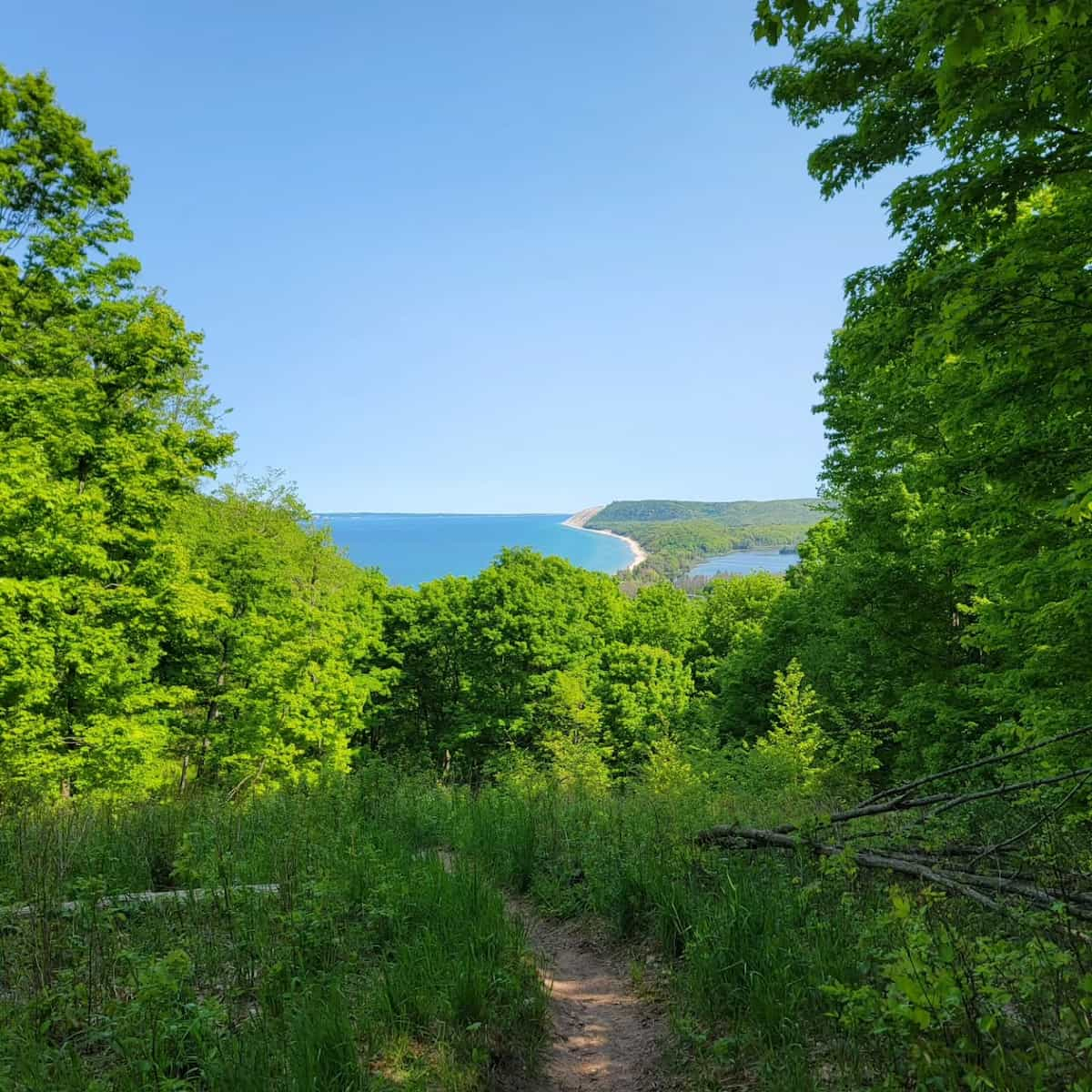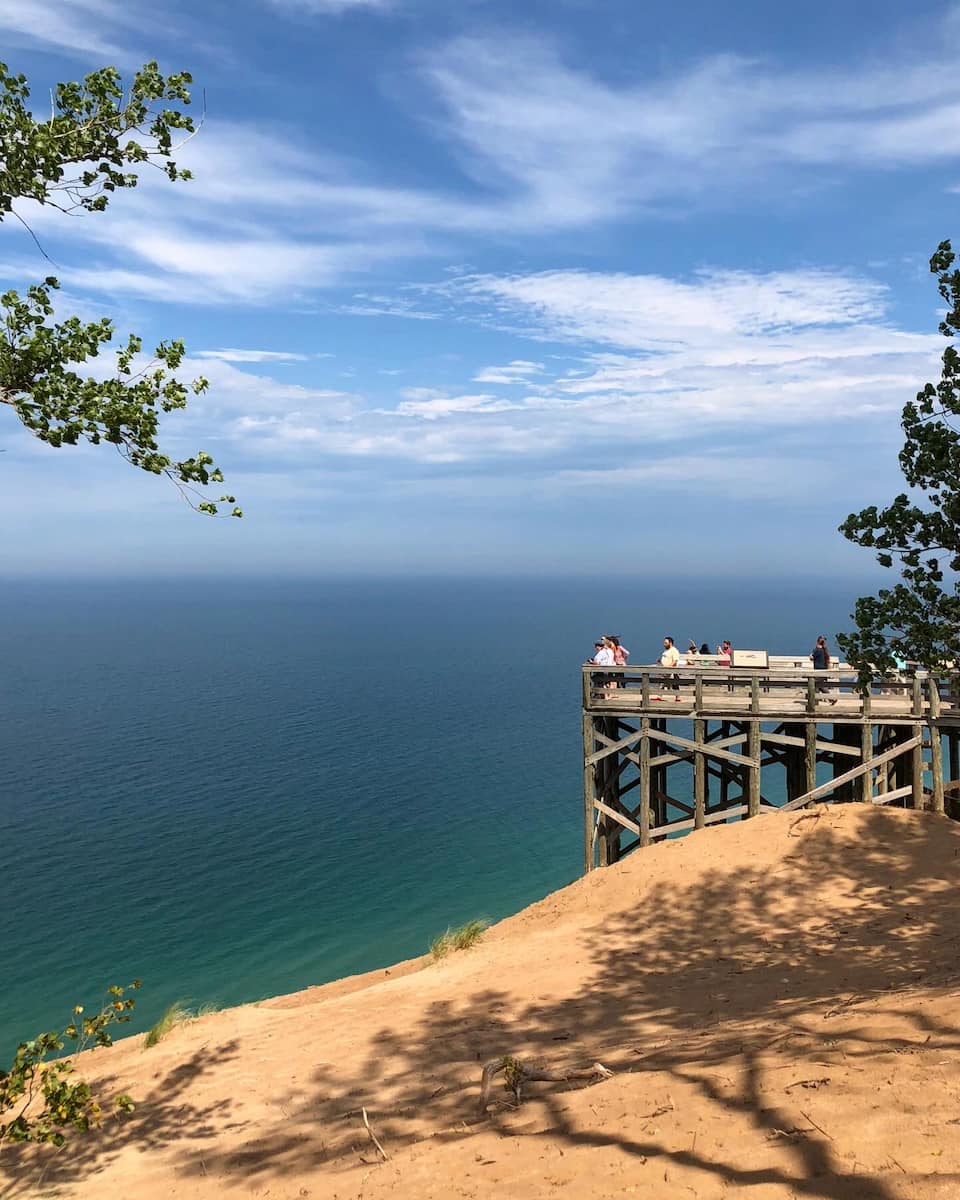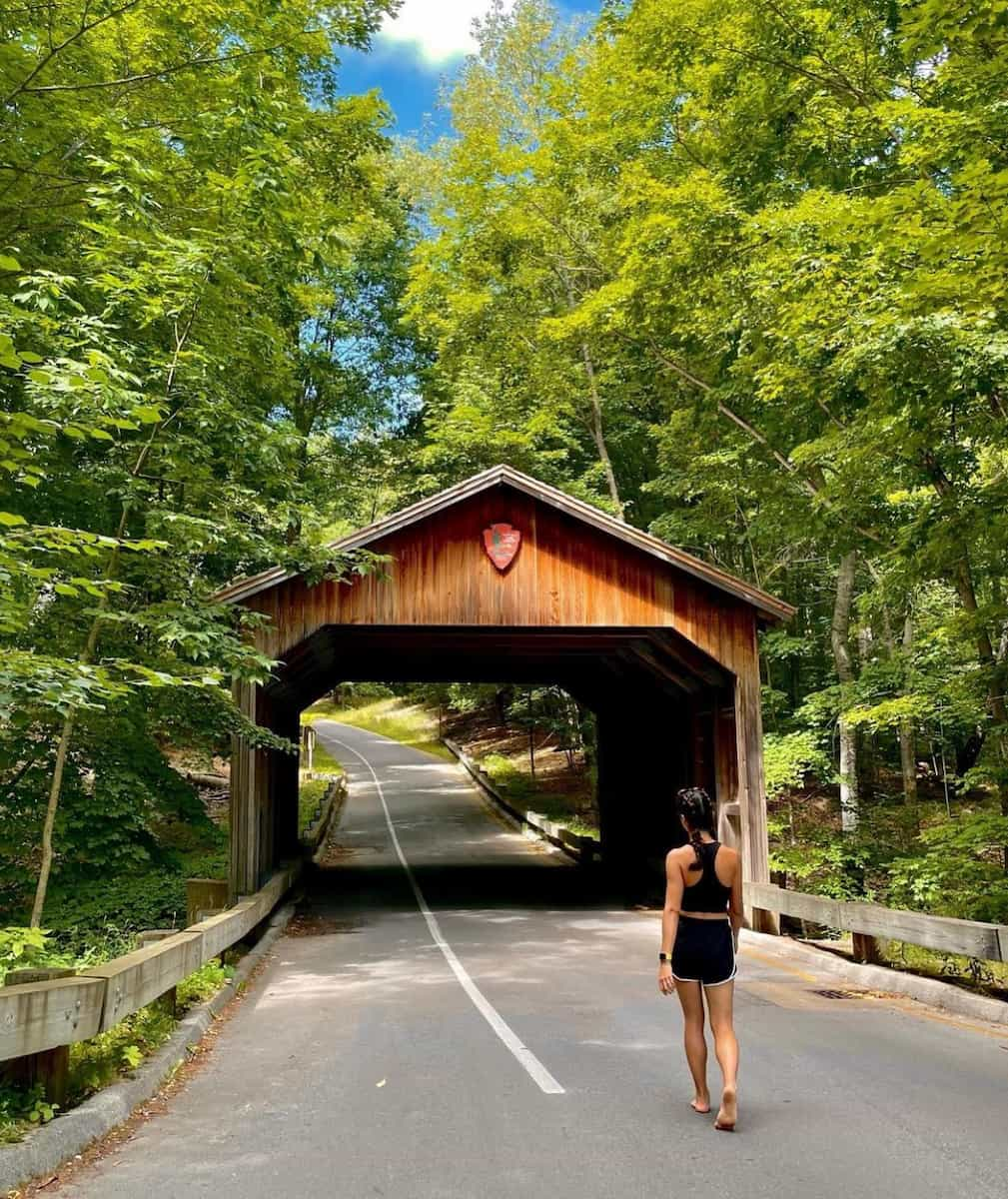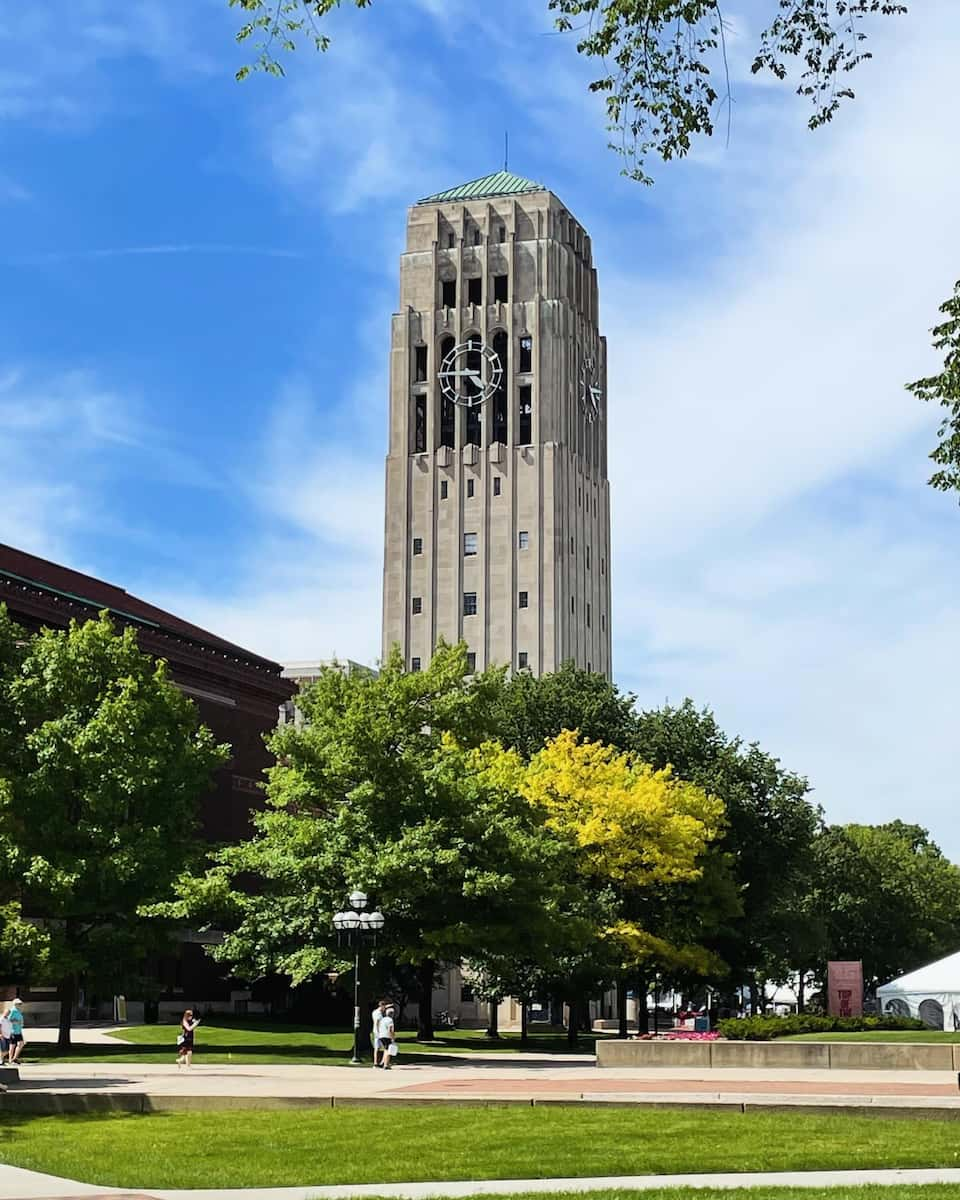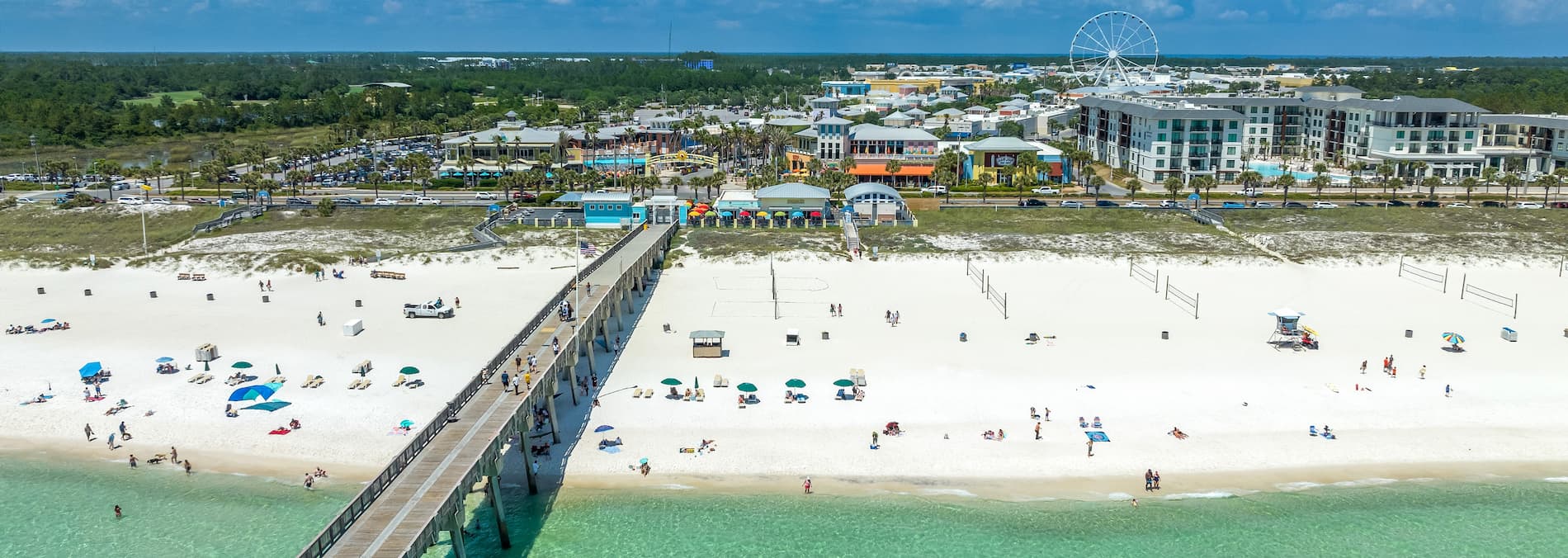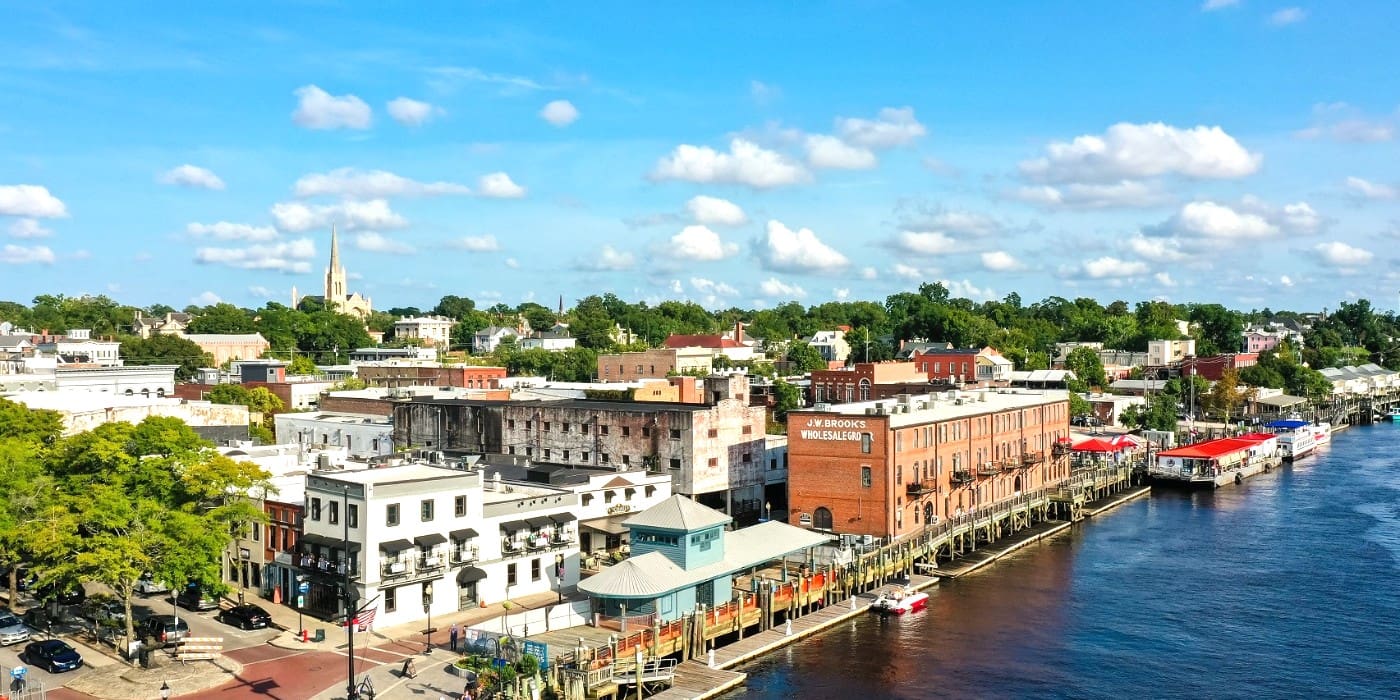Michigan is a state packed with adventure, history, and natural beauty. From the shores of the Great Lakes to vibrant cities, there’s something for every traveler. Whether you’re into outdoor thrills, culture, or quirky roadside stops, Michigan delivers. Let’s dive into the best things to do in Michigan!
🏠 Where to Stay in Michigan
- 💎 Luxury Hotel: The Detroit Club
- ✨ 5-Star: Daxton Hotel Birmingham
- 🏨 4-Star: Canopy by Hilton Grand Rapids Downtown
- 🛏️ 3-Star: Terrace Bay Hotel
- 💸 Cheap: Hyatt Place Ann Arbor
- 🏢 Apartament: Exhibit A2 Ann Arbor
- 👨👩👧👦 For Families: Residence Inn by Marriott Grand Rapids Downtown
- 🏩 For Couples: Graduate Ann Arbor
💁 Best Guided Tours
- Detroit Private Sightseeing Tour with Daily Chauffeur from $200 (⭐️5/5)
- 5-Hour Traverse City Wine Tour: 4 Wineries on Old Mission Peninsula from $80 (⭐️4.9/5)
- Scenic Mackinac Island: A Self-Guided Cycling Audio Tour from $10 (⭐️4/5)
- 5 Day Tour On Lakes Superior Huron and Michigan from $1215 (⭐️5/5)
The Best 10 Things to Do in Michigan
1. Saugatuck Dune Rides
Adventure. I’ve experienced many thrill rides, but nothing quite compares to bouncing across massive sand dunes in an open-air vehicle along the coast of Lake Michigan. The Saugatuck Dune Rides combine roller coaster-like excitement with fascinating local history as your guide navigates steep hills and sharp turns while sharing stories about the landscape. This outdoor adventure ranks among the top things to do in west Michigan for families seeking fun activities that blend education with pure excitement.
Experience. The 40-minute tour takes you through towering dunes that feel like a miniature desert overlooking Lake Michigan views. I was amazed by how the driver skillfully maneuvered the vehicle up seemingly impossible inclines while explaining how wind and water shaped this unique landscape. The Great Lakes State offers few experiences that match the thrill of racing across sand dunes with Lake Michigan sparkling in the distance.
Practical Details. Tours operate from late spring through early fall, with multiple departures daily during peak season. The ride accommodates all ages, making it perfect for things to do with kids, though pregnant women and those with back problems should consider carefully. Bring sunglasses and secure any loose items – the ride gets bumpy as you discover way to explore Michigan’s natural wonders.
Family Fun. This attraction provides something for everyone, from adrenaline seekers to nature lovers interested in learning about dune formation. I watched children’s faces light up during the steepest climbs while parents appreciated the educational commentary about local ecology.
| Ticket Type | Price |
|---|---|
| Adult | $25.00 |
| Child (under 12) | $20.00 |
| Senior (65+) | $22.00 |
2. Henry Ford Museum of American Innovation
History Comes Alive. Walking through the Henry Ford Museum feels like stepping into America’s greatest moments where you can step back in time. I stood inches away from the limousine where President Kennedy was assassinated and sat on the actual bus where Rosa Parks made her historic stand. These aren’t replicas – they’re the real artifacts that shaped our nation, making this one of Michigan’s most significant tourist attractions worth visiting.
Automotive Evolution. The Driving America exhibit showcases everything from Henry Ford’s first Quadricycle to the very first Ford Mustang ever produced (serial number one). I spent hours tracing the evolution of transportation, from horse-drawn carriages to modern vehicles, discovering ways to understand American innovation. The recreated 1960s diner complete with original McDonald’s signs transported me back to a simpler time in the heart of downtown Dearborn.
Interactive Experiences. Don’t miss the Model T ride experience where you actually get to ride in a vintage Ford – one of the most fun things to do for visitors of all ages. The railroad section features massive locomotives, including the Allegheny – one of the largest steam engines ever built. At the model train tables, saying “All aboard! Toot toot!” with hand motions activates a special train sequence that delights children and adults alike.
Planning Your Visit. The museum opens daily at 9:30 AM and closes at 5 PM, giving you plenty of time to explore these incredible attractions. I recommend arriving early and allowing at least three hours, though you could easily spend an entire day here discovering artifacts that tell America’s story. The Plum Market Kitchen and Lamy’s Diner inside offer decent meal options when you need a break from exploring.
| Ticket Type | Regular Price |
|---|---|
| Adult | $34.00 |
| Senior (62+) | $30.50 |
| Youth (5-11) | $25.50 |
| Child (under 5) | FREE |
⭐ Best Activities
- Detroit Private Sightseeing Tour with Daily Chauffeur – The Henry Ford Museum showcases the brilliant achievements of American industry, where innovation and history are intertwined. Finally, the tranquil greenery of Belle Isle provides a perfect place to relax, and we enjoy the tranquility of nature by the lake.
3. Frederik Meijer Gardens & Sculpture Park
Natural Art Fusion. This 158-acre wonderland seamlessly blends botanical beauty with world-class sculpture, creating one of the most unique fun places to go in the state of Michigan. I’ve visited gardens worldwide, but few match the artistic vision here where outdoor sculptures complement indoor conservatories. The combination of nature and art provides, from families seeking things to do with kids to art enthusiasts exploring Michigan’s cultural treasures.
Seasonal Highlights. The butterfly exhibit in spring transforms the tropical conservatory into a living kaleidoscope where children can take a stroll among colorful butterflies. I watched kids’ faces light up as butterflies landed on their shoulders while parents enjoyed the peaceful atmosphere. The Japanese Garden offers a contemplative retreat with carefully designed pathways perfect for watching the sunset over reflecting pools, making it one of the best places for quiet reflection.
Family-Friendly Features. The new Curiosity Courtyard on the lower level captivates kids with ten interactive stations inspired by “The Secret Garden.” I observed children creating their own games while parents relaxed in the nearby Mother’s Room, discovering fun and free things to do within the paid admission. The children’s garden includes sensory attractions and a carousel that engage young visitors in hands-on learning about plants and nature.
| Ticket Type | Price |
|---|---|
| Adult | $20.00 |
| Senior (65+) | $18.00 |
| Student | $15.00 |
| Child (5-13) | $12.00 |
| Child (under 5) | FREE |
4. Pictured Rocks National Lakeshore
Natural Wonder. The turquoise waters and dramatic sandstone cliffs of Pictured Rocks create some of Michigan’s most spectacular scenery along Lake Superior’s shoreline. I’ve hiked the shoreline trails and taken boat cruises, and each perspective reveals new colors and formations in the rock faces that make this one of the top things to do in Michigan’s Upper Peninsula. The mineral stains create natural artwork that changes with the light throughout the day, offering endless photography opportunities.
Adventure Options. Hiking trails range from easy walks to challenging backcountry routes that showcase the best of this remarkable landscape. The Chapel Beach trail leads to stunning rock formations, while the more demanding trails offer solitude and pristine wilderness views perfect for outdoor adventure enthusiasts. Kayaking provides the most intimate experience with the cliffs, though Lake Superior’s cold waters require proper preparation and respect for the Great Lakes’ power.

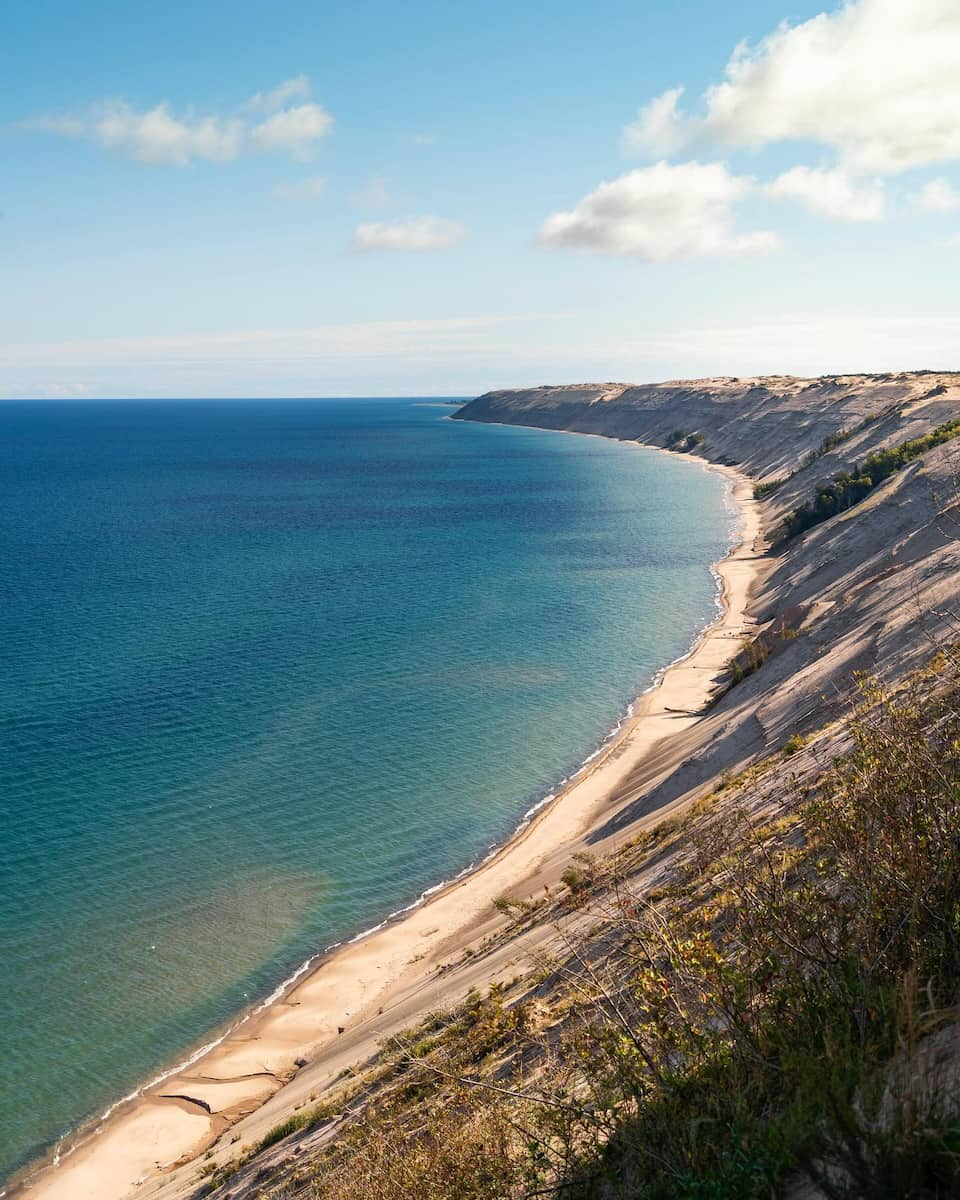
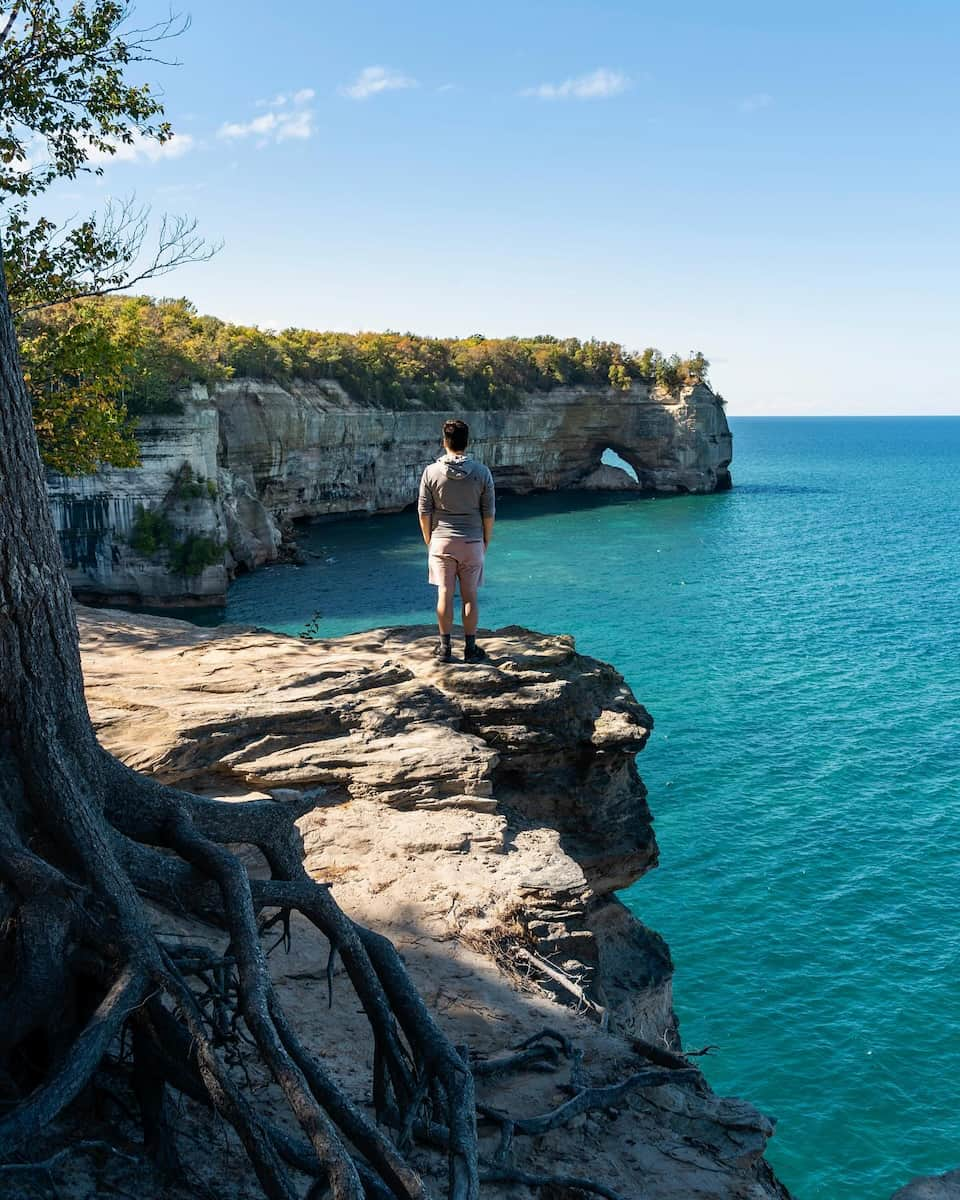


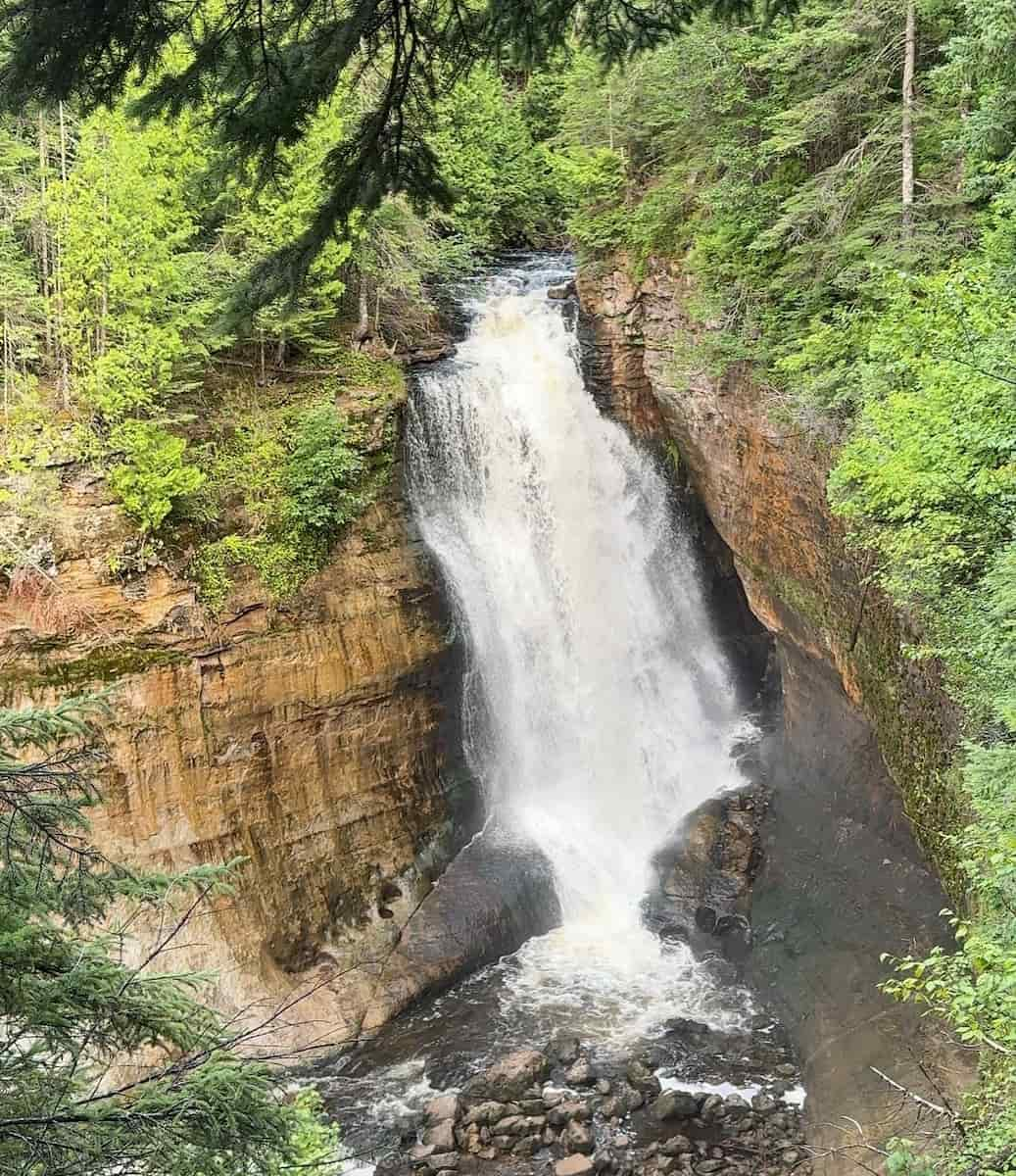
Photography Paradise. Every season offers different photographic opportunities in this crown jewel of attractions. Summer brings warm weather and calm waters perfect for boat tours that reveal the full scope of the colored cliffs. Fall transforms the surrounding forests into a riot of color that frames the turquoise waters beautifully. Winter creates ice formations that dramatically alter the cliff faces, though access becomes more challenging.
Practical Considerations. The park is free to enter, making it one of the fun and free things to do in Michigan, though boat tours and equipment rentals cost extra. Weather on Lake Superior changes rapidly, so pack layers even in summer when you’re planning ways to spend your day exploring. The nearest services are in Munising, about 30 minutes from the main viewing areas where you can find the best restaurants and lodging.
⭐ Best Activities
- 5 Day Tour On Lakes Superior Huron and Michigan – Five days to enjoy the beautiful scenery of the three major lakes in the Great Lakes region of the United States, all of which are located in Lake Michigan in the United States, Lake Superior, the largest freshwater lake in the world, and Lake Huron. Famous cities along the five great lakes: Chicago, Milwaukee and Traverse City along Lake Michigan, Green Bay along Green Bay, and Sault Ste.
5. Motown Museum
Musical History. Standing in Studio A where Diana Ross, Stevie Wonder, and The Temptations recorded their biggest hits gave me chills as I stepped back in time to music’s golden era. This isn’t just a museum – it’s the actual birthplace of the Motown Sound in the heart of downtown Detroit. The original recording equipment and Berry Gordy’s restored apartment transport you back to the 1960s when this small house revolutionized American music and became one of the most significant attractions.
Guided Experience. All visits are guided tours lasting approximately one hour, providing the best way to explore this musical shrine. The knowledgeable guides share behind-the-scenes stories about legendary artists and the close-knit family atmosphere that defined Motown’s success. I learned fascinating details about the recording process and the business decisions that shaped popular music, making this worth a visit for music lovers of all ages.
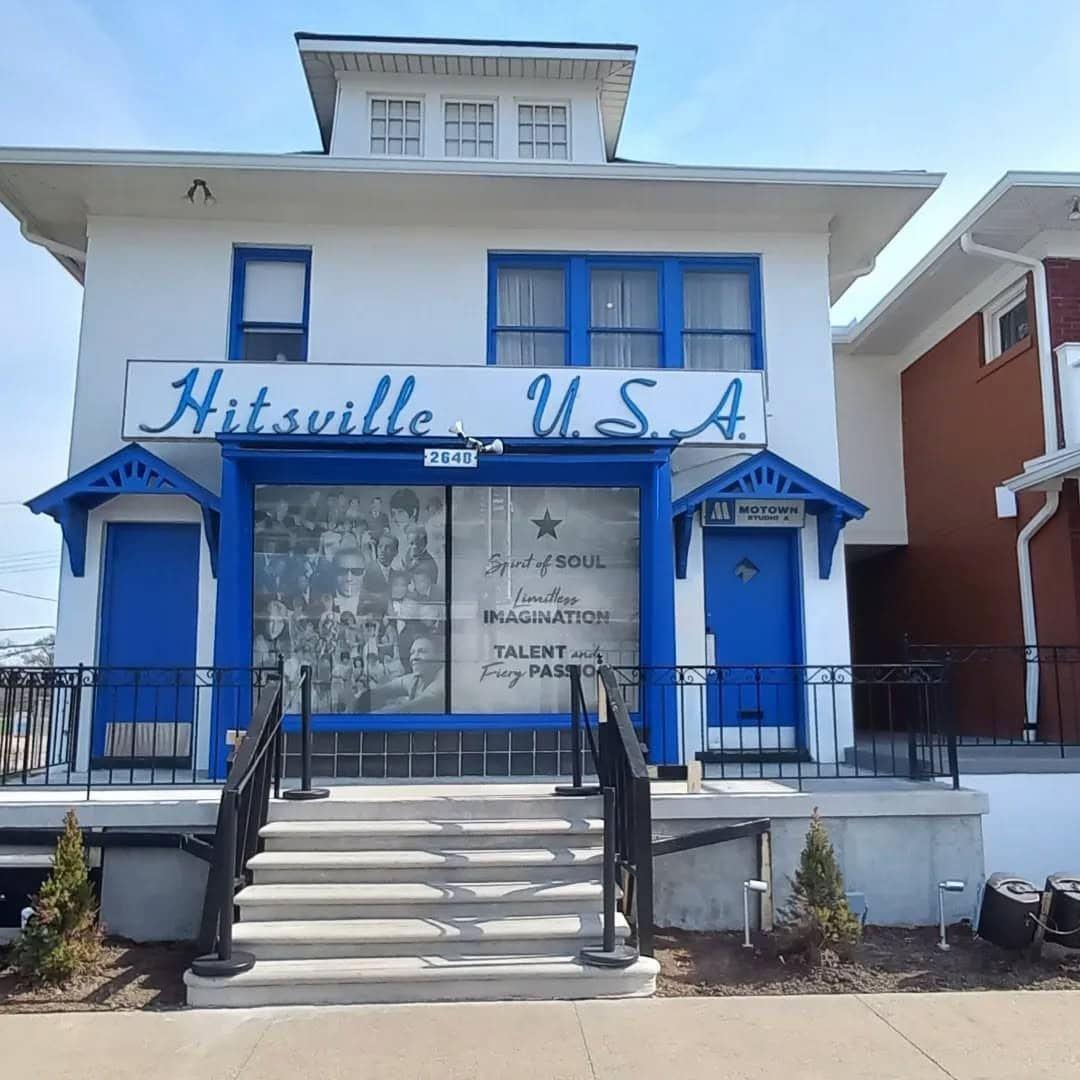
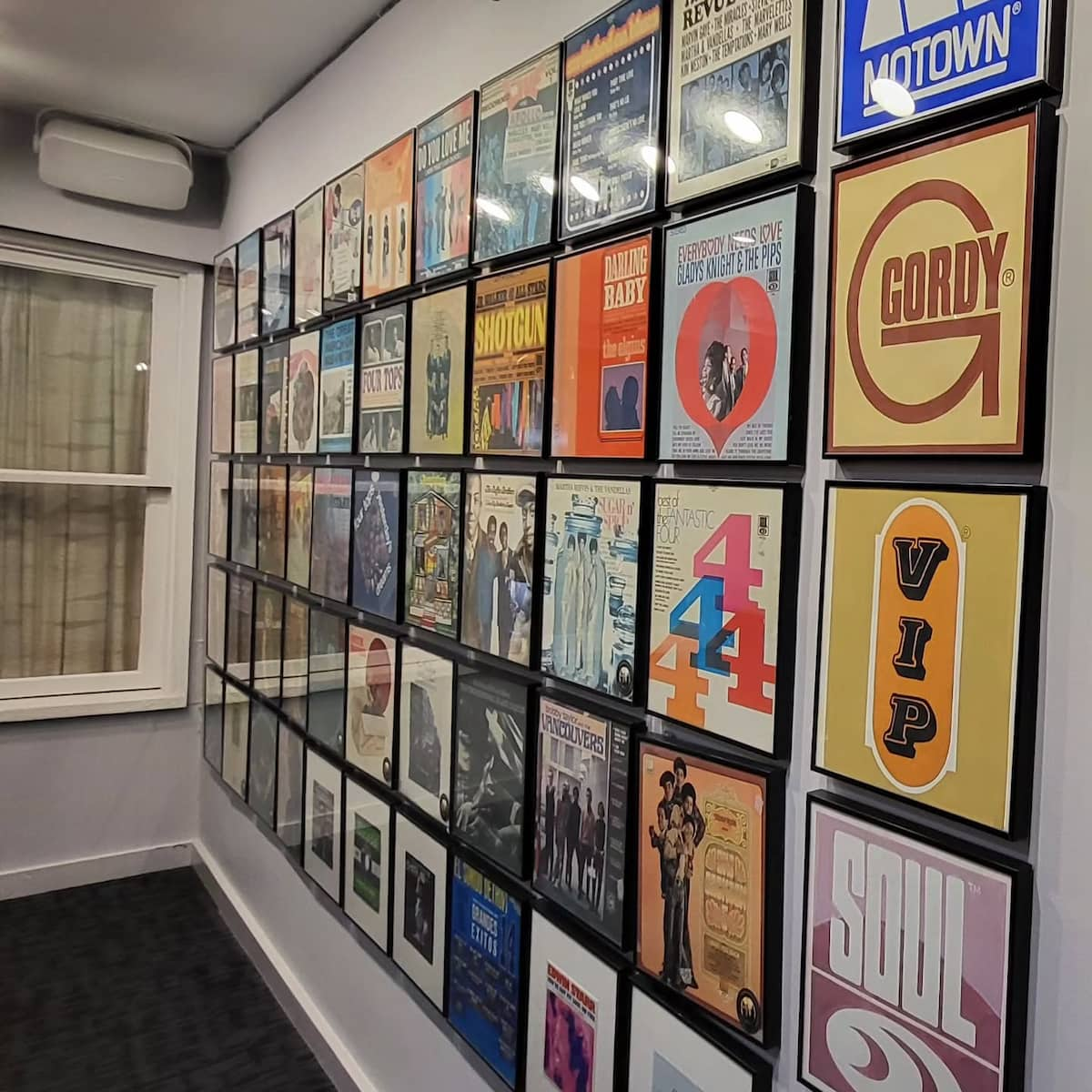
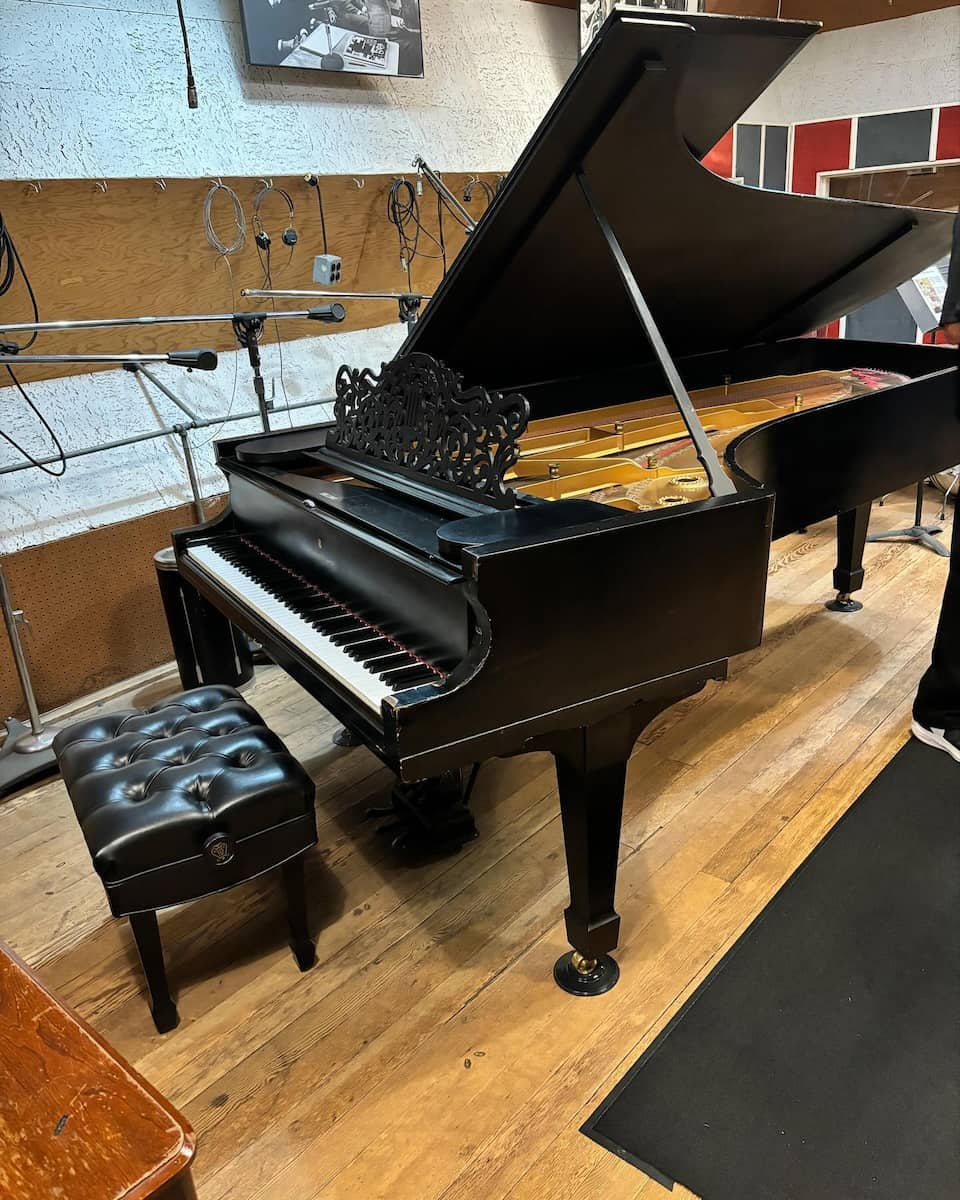
Interactive Elements. The Backstage Lounge features exclusive interviews with Motown veterans and access to the label’s vast music collection. Photography is allowed throughout most of the museum, though videography is prohibited to protect the artists’ rights. The Motown Atmosphere Exhibit uses images and artifacts to recreate the energy of Hitsville USA, giving visitors interested in American cultural history.
Visiting Logistics. The museum operates Wednesday through Sunday from 10 AM to 6 PM, providing ample time to explore during your family vacation. Tickets are first-come, first-served, and popular time slots sell out, especially during peak tourist season. Street parking is available nearby – download the Park Detroit app for easy payment and to avoid parking tickets.
| Ticket Type | Price |
|---|---|
| Adult | $20.00 |
| Senior (62+) | $17.00 |
| Student/Veteran | $17.00 |
| Child (5-17) | $17.00 |
| Child (under 5) | FREE |
⭐ Best Activities
- Motown Museum Tours and Tickets – It may look modest from the outside, but the Motown Museum in downtown Detroit—known as Hitsville, USA—created a tidal wave of a legacy in the music industry whose impact is still felt today. Visitors can step inside legendary Studio A, the spot where songs like the Supremes’ “Stop in the Name of Love” and other chart-toppers were recorded.
6. Mackinac Island
Car-Free Paradise. Stepping off the ferry onto Mackinac Island feels like traveling back to a simpler time when you can truly step back in time. No cars are allowed – only bikes and your own feet, creating one of the most unique fun places to go in the Great Lakes State. I rented a bike and completed the scenic 8-mile loop around the island, stopping at Arch Rock and other natural landmarks while enjoying spectacular Lake Michigan views.
Transportation Options. Horse-drawn carriage tours last about 1 hour and 45 minutes, departing on a first-come, first-served basis and providing the traditional way to explore the island. The group tours cover the island’s highlights and provide historical context about this remarkable Michigan attraction.
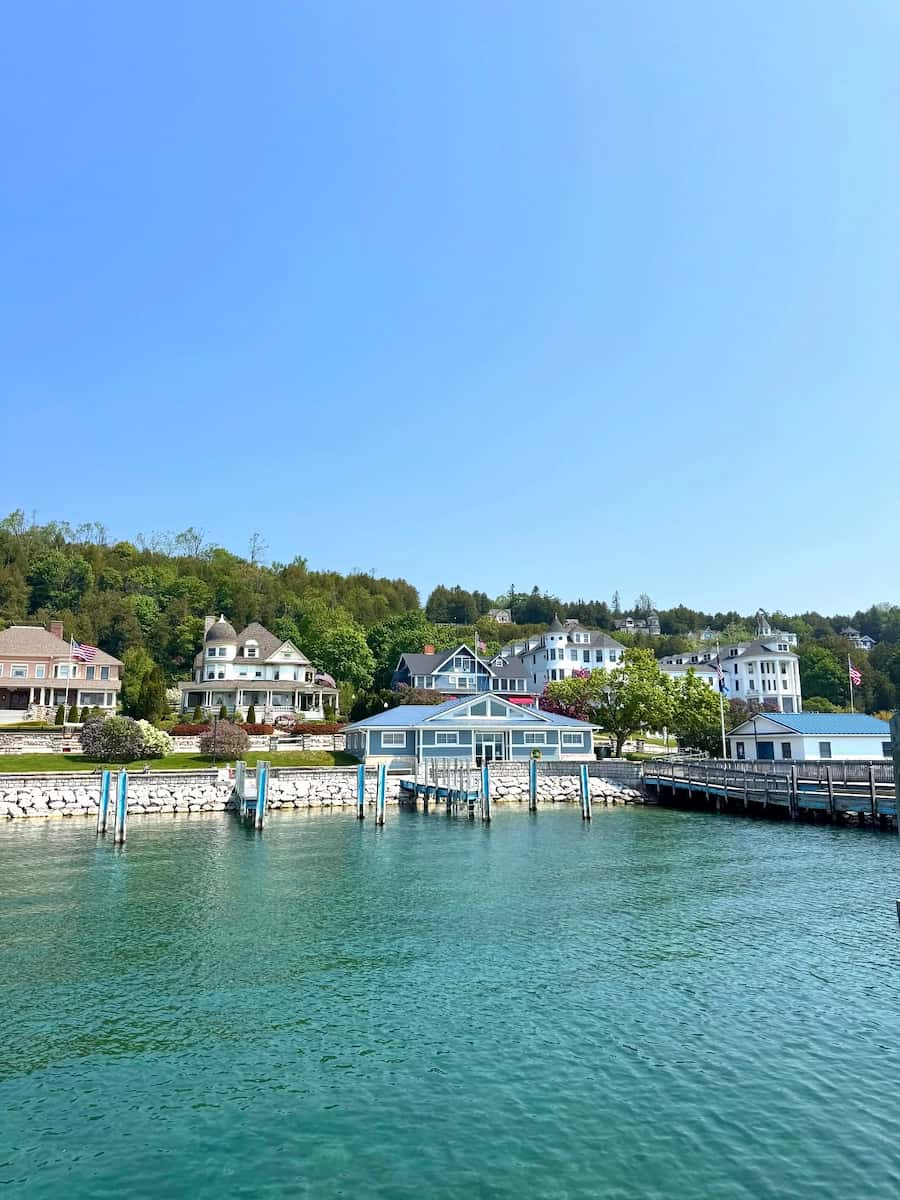
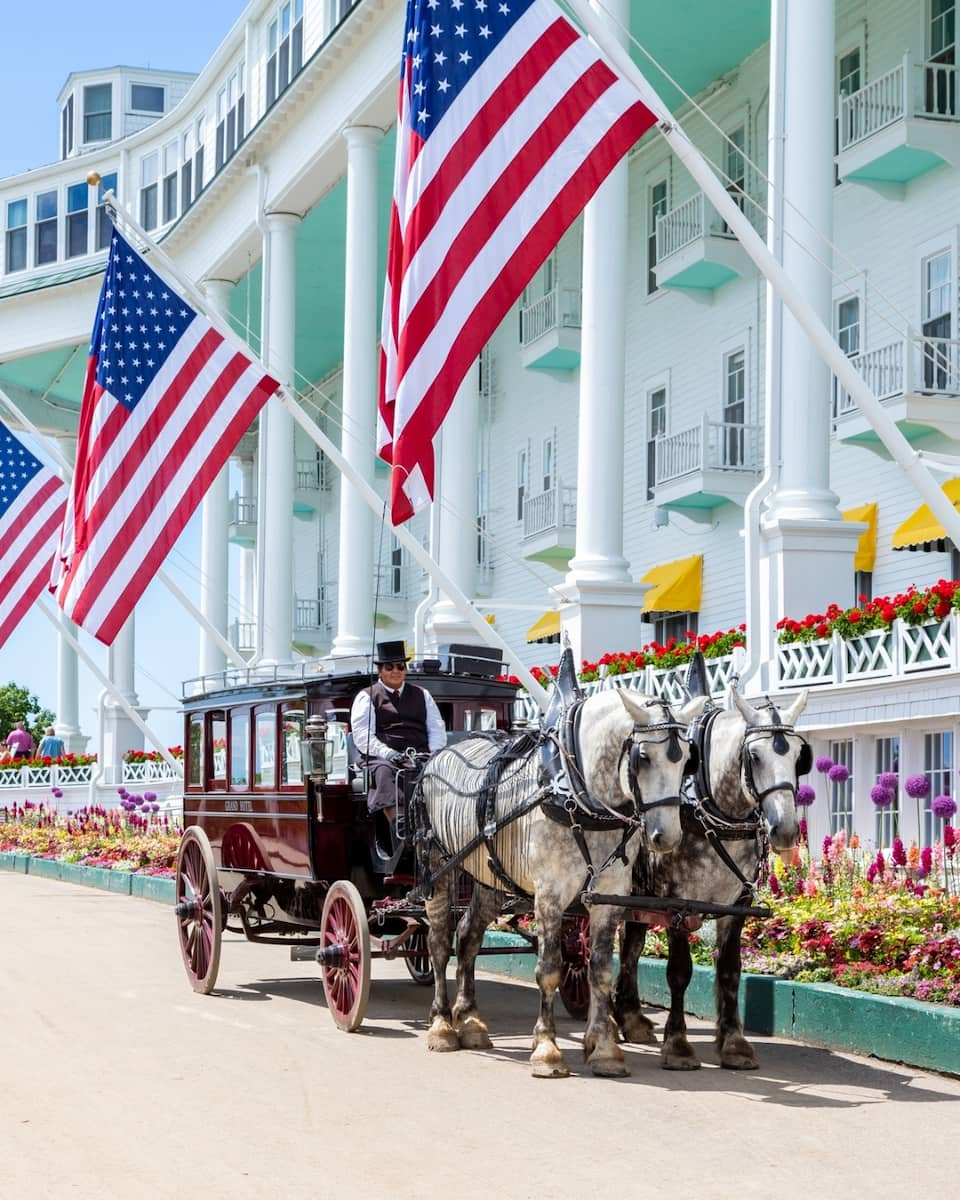
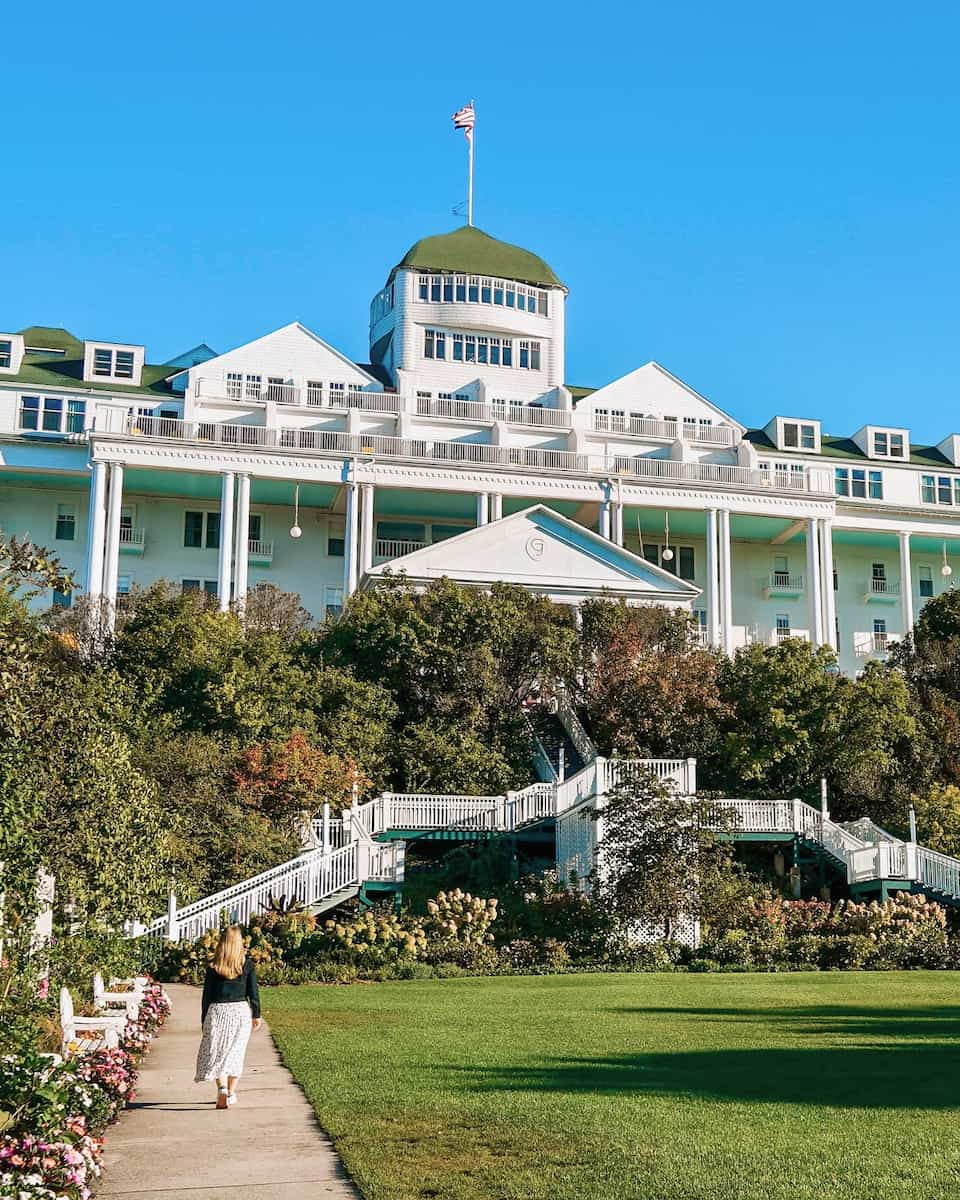
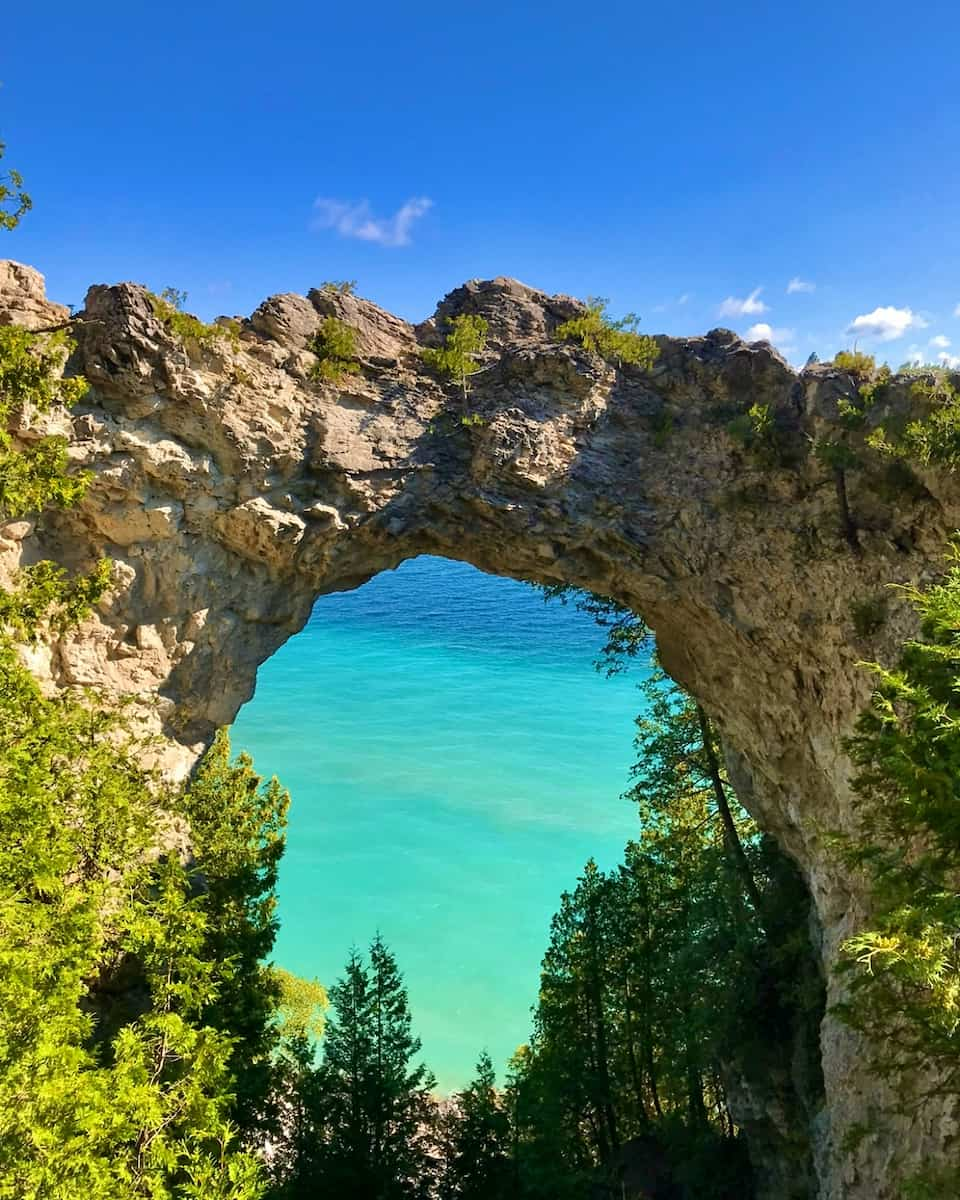
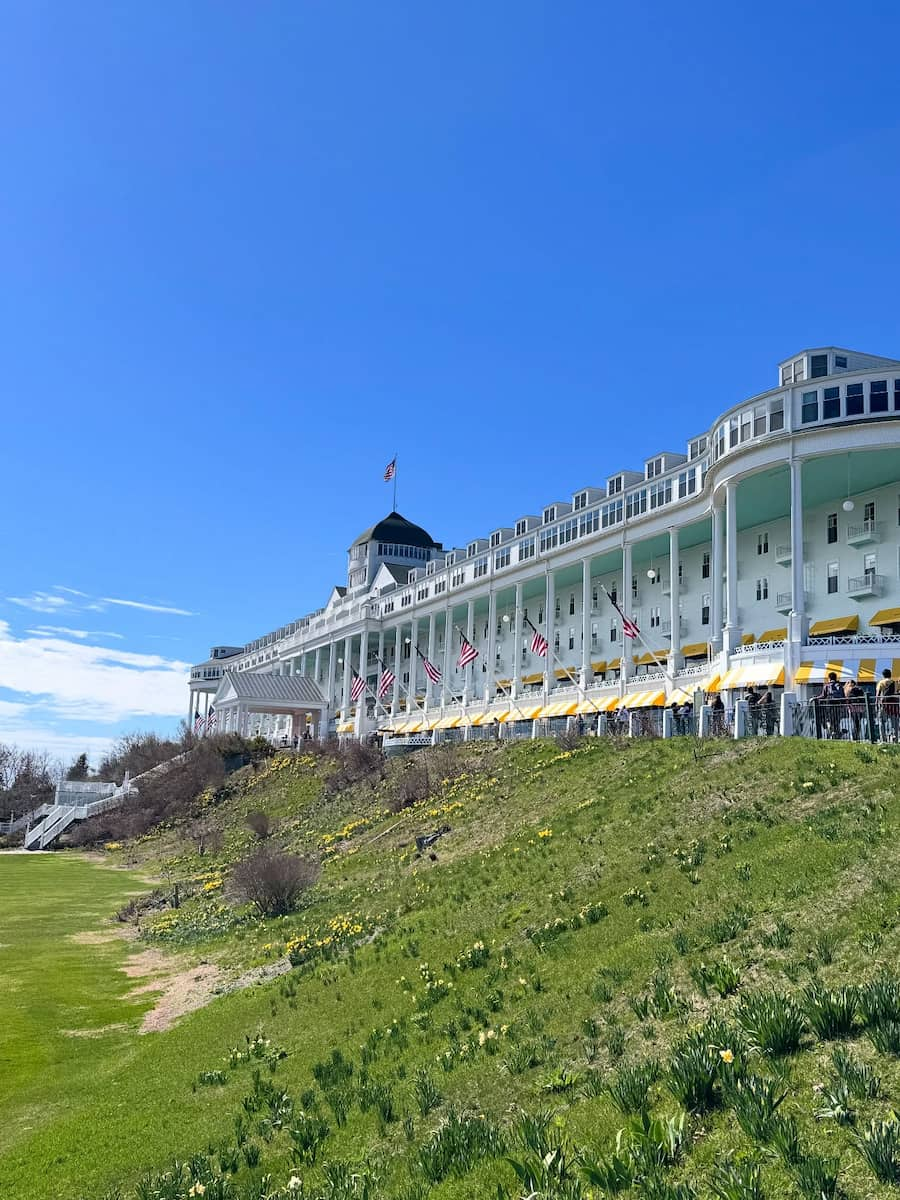
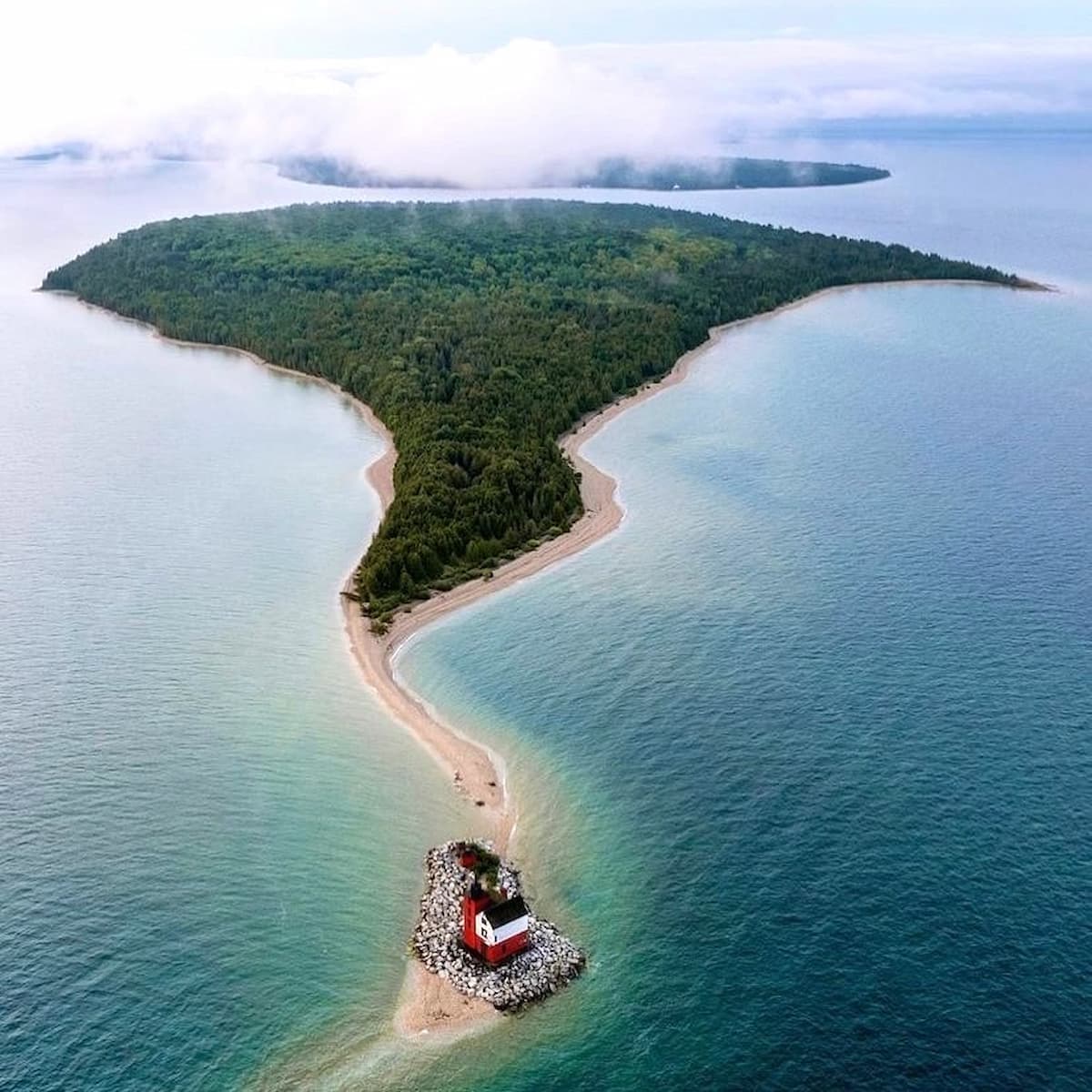
Historic Attractions. Fort Mackinac offers Civil War reenactments and cannon firings during summer months, providing educational fun activities for the whole family. The Grand Hotel, with its famous 660-foot porch, welcomes visitors for dining and drinks with stunning lake views. Downtown’s fudge shops have become legendary – I watched confectioners hand-pull taffy and create chocolate masterpieces in storefront windows, creating sweet memories for every Michigan tourist.
Ferry Information. Arnold Transit Company operates ferries from both Mackinaw City and St. Ignace, providing multiple ways to spend your journey to this island paradise. Traditional ferries cost more but offer frequent departures, while classic ferries from St. Ignace provide a nostalgic experience at lower prices. The ferry ride itself becomes part of the adventure as you approach this car-free haven.
| Ferry Type | Adult Round Trip | Child (5-12) | Child (under 5) |
|---|---|---|---|
| Traditional | $36.00 | $24.00 | FREE |
| Classic (St. Ignace only) | $22.95 | $17.95 | FREE |
| Priority Boarding | $48.00 | $36.00 | FREE |
⭐ Best Activities
- Mackinac Island State Park Commission-Mackinac State Historic Parks Tickets – Visit Mackinac Island and see history in action as you hear the cannon blasts and rifle fire as soldiers march.
7. Sleeping Bear Dunes National Lakeshore
Towering Sand Dunes. The massive sand dunes rising 450 feet above Lake Michigan create one of America’s most dramatic lakeshores and rank among the top things to do in West Michigan. I climbed the Dune Climb and was rewarded with panoramic Lake Michigan views and surrounding forests that showcase why this area attracts visitors from around the world. The descent is much easier than the ascent – just remember that sand gets everywhere, making this a true outdoor adventure.
Diverse Activities. Beyond the famous dunes, the lakeshore offers hiking trails, pristine beaches, and the historic village of Glen Haven where you can step back in time. The Pierce Stocking Scenic Drive provides accessible viewpoints for those who prefer driving to hiking while still enjoying spectacular lake activities. I particularly enjoyed the Empire Bluff Trail for its manageable distance and spectacular overlook that provides some of the best sunset over lake viewing opportunities.
Planning Essentials. All visitors need an entrance pass displayed on their vehicle to access these premier Michigan attractions. Summer brings crowds, so arrive before 10 AM or after 4 PM for better parking and fewer people competing for the best photo spots. The NPS mobile app provides self-guided tours and maps that work offline, helping you discover the best way to explore this natural wonder.
Camping and Lodging. Both Platte River and D.H. Day campgrounds require reservations from May through October, making advance planning essential for your family vacation. Sites book up to six months in advance, and first-come, first-served availability is unlikely during summer when this becomes one of the most popular fun places to go. Have backup lodging plans if camping without reservations during peak season.
8. Detroit Institute of Arts
World-Class Collection. The DIA houses an impressive collection spanning 65,000 artworks from around the globe, making it one of the premier art museum destinations in the Great Lakes State. The Diego Rivera murals depicting Detroit’s industrial history are absolutely stunning – I spent 30 minutes just absorbing the details in these massive works that capture the city’s automotive heritage. The museum’s diverse collection includes everything from ancient artifacts to contemporary pieces, providing interested in cultural exploration.
Architectural Beauty. The Kresge Court serves as the museum’s centerpiece, offering a tranquil space for coffee and reflection beneath soaring architecture that rivals European cathedrals. The building itself is a work of art, with grand staircases and elegant galleries that enhance the viewing experience and make this worth a visit for architecture enthusiasts. Taking a stroll through the galleries reveals new perspectives and hidden details with each visit.
Practical Information. General admission costs around $18 for adults, with discounts for seniors and students making this accessible for family vacation budgets. The museum offers guided tours and special exhibitions throughout the year that provide deeper insights into the collections. Plan at least two hours to see the highlights, though art enthusiasts could easily spend an entire day here the museum has to offer.
Dining Options. The museum cafe provides light meals and beverages in a beautiful setting that extends the cultural experience. The Kresge Court’s atmosphere makes even a simple coffee break feel special, offering one of the best restaurants for a refined dining experience within the museum setting.
⭐ Best Activities
- Detroit Institute of Arts Tours and Tickets – Named the number one thing to do in Detroit by TripAdvisor reviewers, the Detroit Institute of Arts (DIA) is home to one of the largest and most significant art collections in the US. The DIA features more than 100 galleries that showcase 65,000 works, from prehistory to modern day, including Diego Rivera’s 1930sDetroit Industry Murals.
9. Tahquamenon Falls State Park
Spectacular Waterfalls. Michigan’s largest waterfalls thunder through pristine wilderness in Michigan’s Upper Peninsula, creating one of the most impressive natural attractions worth visiting in the state. The Upper Falls drop nearly 50 feet across a 200-foot-wide cascade, while the Lower Falls offer a series of smaller drops perfect for wading and exploration. The amber-colored water gets its distinctive hue from tannins in the surrounding cedar swamps, creating a unique natural phenomenon.
Hiking Opportunities. Well-maintained trails connect both sets of falls, with the 4-mile hike between them offering beautiful forest scenery and multiple ways to spend your day in nature. I recommend starting at the Upper Falls and working your way downstream to discover the best viewing angles. The trails are suitable for most fitness levels and provide excellent things to do with kids who enjoy outdoor adventure, though the terrain can be muddy after rain.
Seasonal Considerations. Summer provides the warmest weather and fullest water flow, making it the peak time for family vacation visits. Fall brings spectacular foliage that frames the waterfalls beautifully, creating perfect conditions for watching the sunset over the forest canopy. Winter creates ice formations, though trails can be treacherous and require proper preparation for safe exploration.
Facilities and Services. The park includes camping, picnic areas, and a restaurant near the Upper Falls that serves as one of the best restaurants in the area. The Tahquamenon Falls Brewery and Pub serves local beer and hearty meals with views of the river, providing a perfect way to end your outdoor adventure. Parking fees apply, but they’re minimal compared to the natural spectacle you’ll witness.
10. Grand Rapids Art Museum
Cultural Excellence. The Grand Rapids Art Museum stands as a beacon of artistic achievement in West Michigan, housing an impressive collection that spans centuries and cultures. I’ve explored the galleries multiple times, always discovering new pieces that showcase both local and international artists. The museum’s commitment to contemporary art alongside classical works provides something for everyone, from families seeking educational fun activities to serious art enthusiasts exploring the best of Michigan’s cultural offerings.
Architectural Marvel. The museum building itself represents a masterpiece of sustainable design, featuring LEED Gold certification and innovative green technologies. The natural light filtering through carefully designed windows illuminates the galleries beautifully, creating an ideal environment for viewing art. Taking a stroll through the different levels reveals how architecture and art complement each other in this thoughtfully designed space.
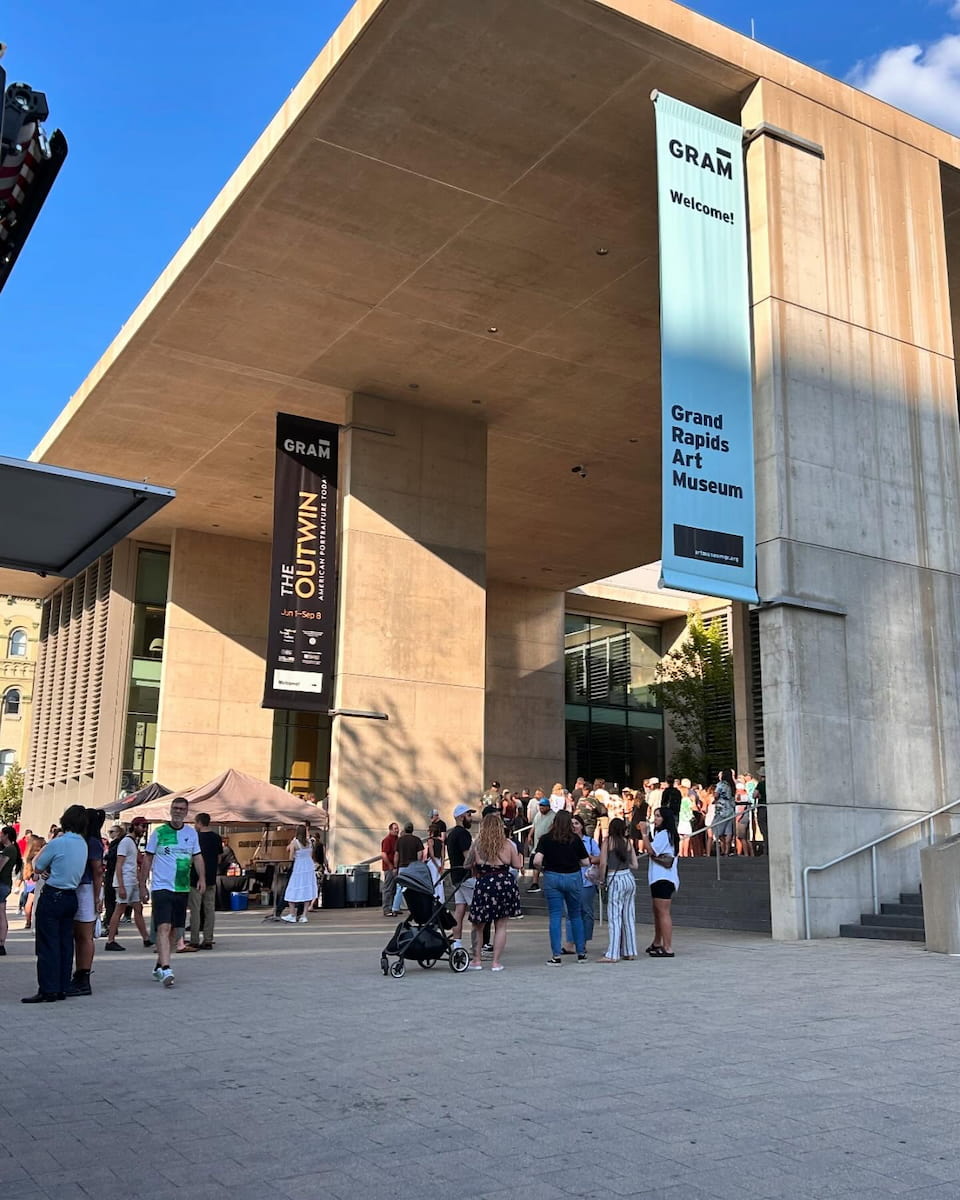
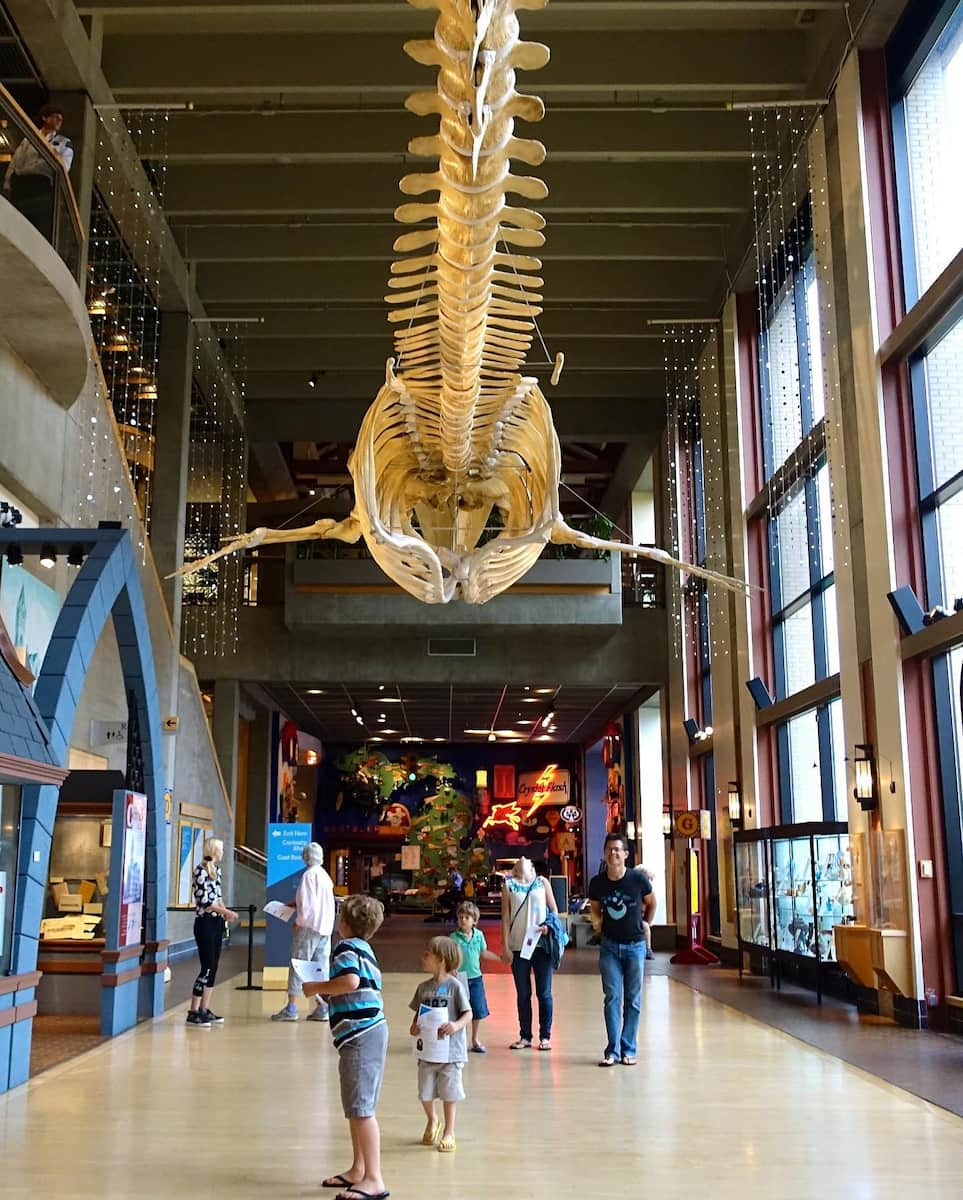
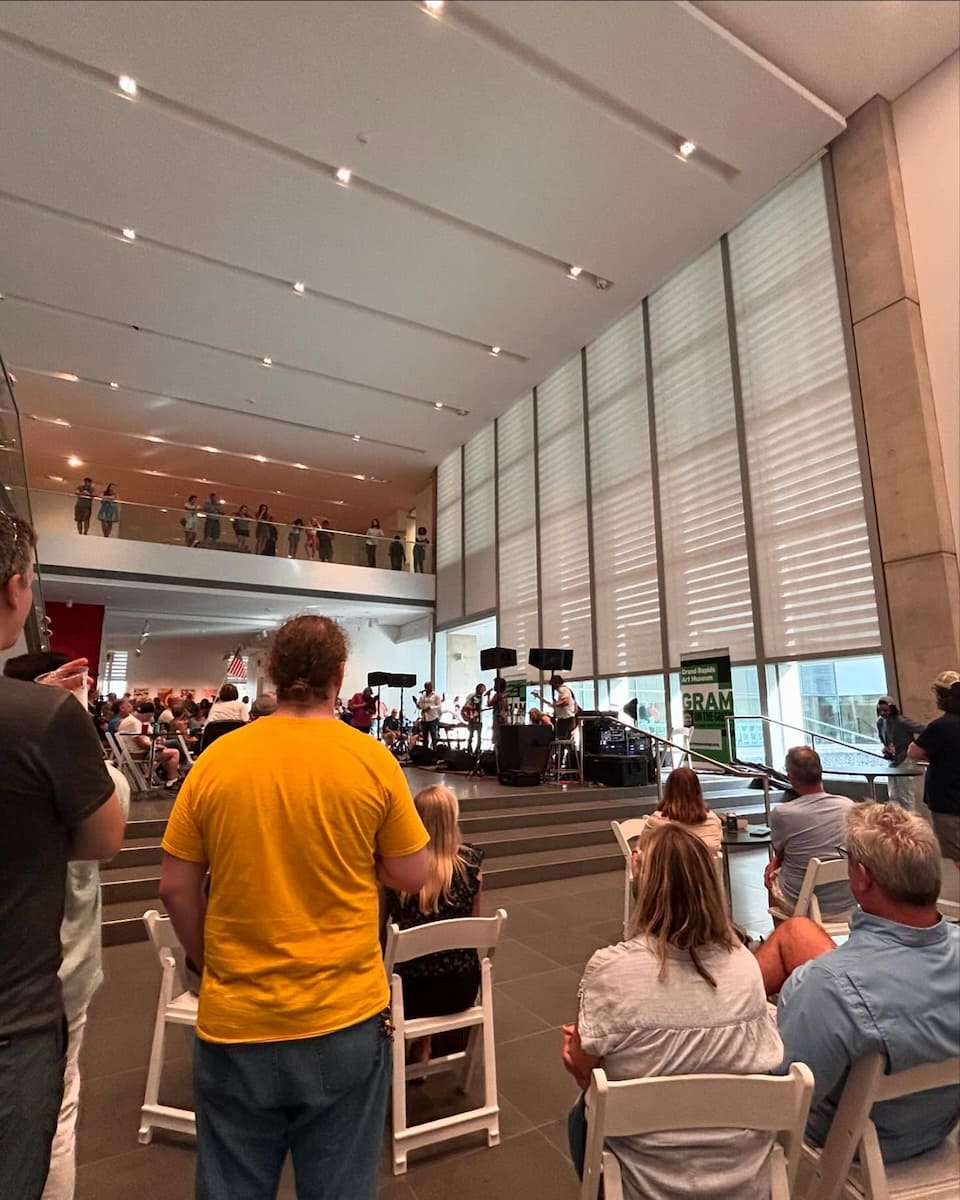
Educational Programs. The museum offers diverse programming including family workshops, artist talks, and special exhibitions that rotate throughout the year. I attended a glass-blowing demonstration that captivated both children and adults, showing how traditional crafts connect to contemporary art. These programs make the museum one of the premier fun places to go for educational entertainment in the heart of downtown Grand Rapids.
11. Kitch-iti-kipi
Natural Wonder. Kitch-iti-kipi, also called “The Big Spring”, is the largest natural freshwater spring in the Upper Peninsula and a true hidden gem. This pool spans about 200 feet across and reaches depths of 40 feet, with water that remains a clear teal and a steady 45°F (7°C) year-round. Standing at the edge, you’ll notice clouds of sand swirling on the bottom and ancient tree trunks coated in minerals—almost like gazing into a living kaleidoscope. The Ojibwa called it “Mirror of Heaven,” a name that fits perfectly when you see the sky and tall pines reflected on its surface.
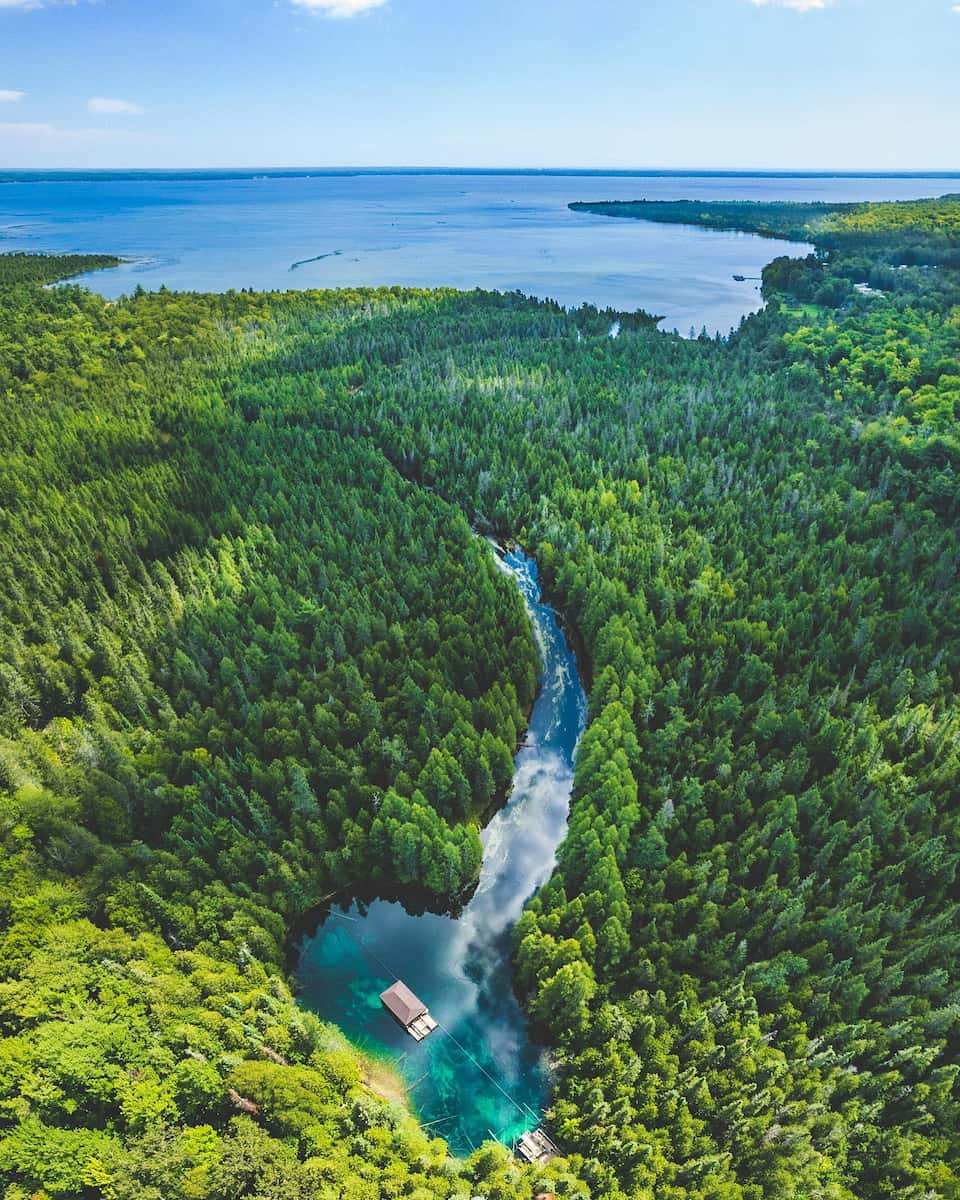
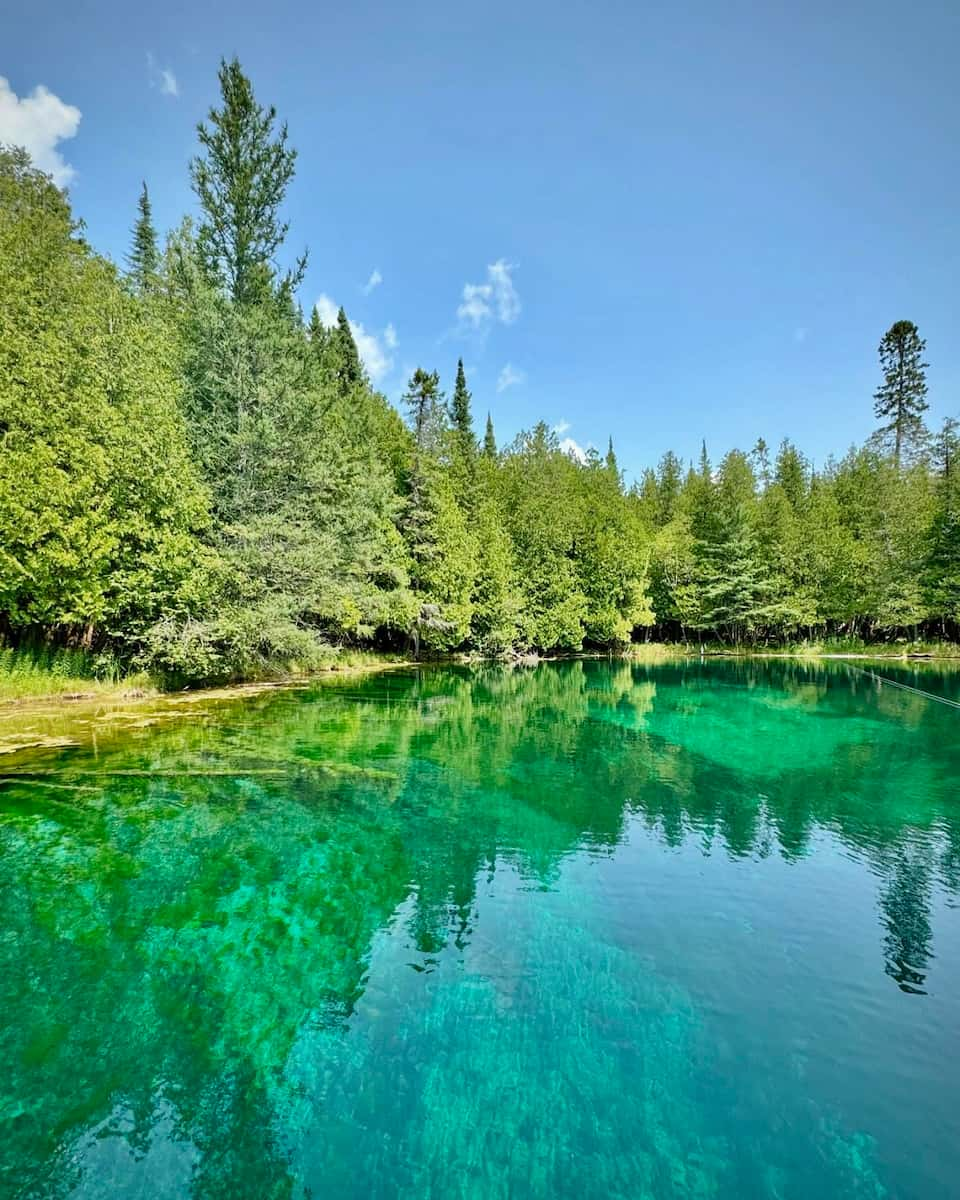

Floating Platform Experience. The highlight here is a self-guided wooden platform that you move by turning a wheel. As you glide across the water, everyone gets a chance to peer straight down and spot lake trout, brown trout, and brook trout swimming below. The trip lasts about 15 minutes and is free, though waits can be long during busy times. If you’d rather, you can simply enjoy the view from the edge, but the platform gives the most immersive look at this natural marvel.
Getting There and Costs. You’ll find Kitch-iti-kipi in Palms Book State Park, about 15 minutes north of Manistique at Indian Lake’s northern tip. The park is open all year from 8 a.m. to dusk. Entry requires a Recreation Passport or a day pass, which is about $11 for residents and $9 for non-residents. The platform ride is complimentary, and there are no extra charges for seeing the spring.
| Fee Type | Price (USD) |
|---|---|
| Michigan Resident Day Pass | $11 |
| Non-Resident Day Pass | $9 |
| Platform Ride | Free |
12. Arch Rock
Natural Marvel. Arch Rock is a must-see on Mackinac Island and a favorite for anyone building a Michigan bucket list. This rare limestone arch rises nearly 146 feet above Lake Huron, shaped by thousands of years of wind, water, and glacial forces. Its unusual breccia limestone has inspired legends among the Anishinaabe-Ojibwa, who believed it was formed by the breath of the Great Creator. When I first visited, I was struck by how the arch frames the turquoise and cobalt waters below—one of the state’s most photographed scenes.
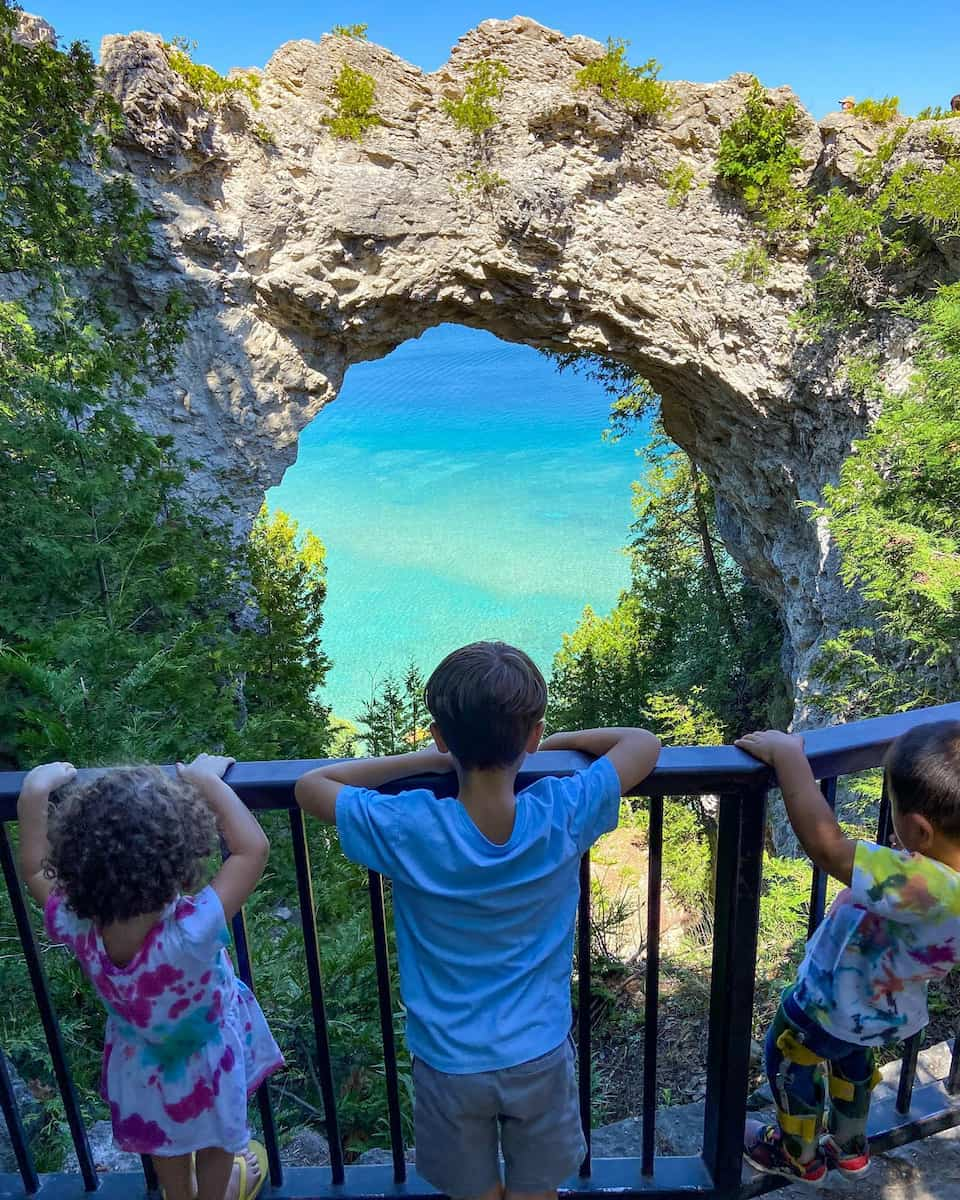
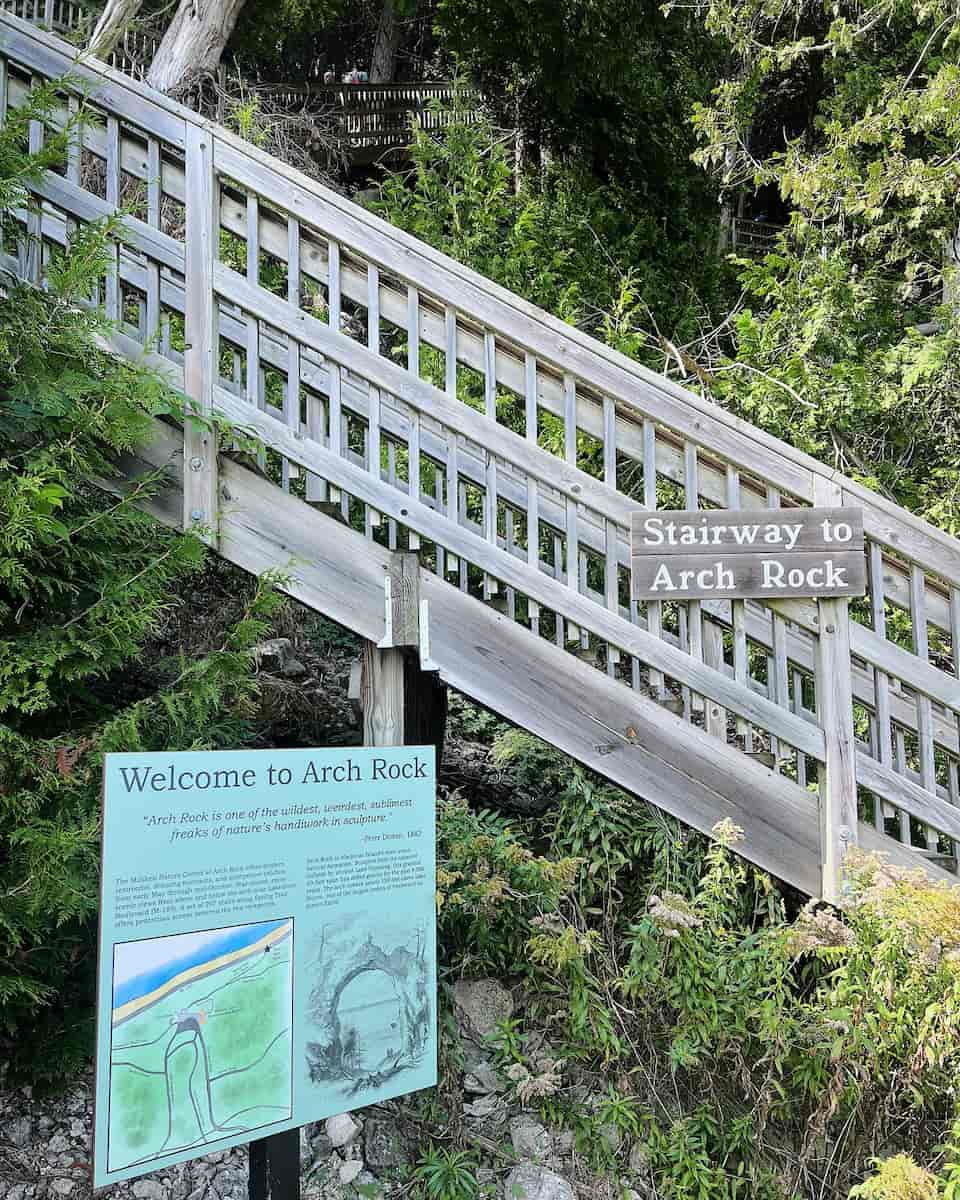
Getting There. There are several enjoyable ways to reach Arch Rock, each offering a different experience. You can walk or bike from downtown using Arch Rock Road, which runs behind Fort Mackinac, or climb the 207-step stairway from Lakeshore Drive up to the lookout. For a more relaxed visit, I recommend a horse-drawn tour through Mackinac Island State Park, which includes a stop at the arch and stories about the island’s history. Feeling adventurous? You can also paddle out and see Arch Rock from the water with a kayak tour.
Sweeping Vistas. At the top, the viewing deck offers wide panoramas of Lake Huron, the Mackinac Straits, and even Canada on a clear day. I always bring my camera—sunrise and sunset here are especially magical, with the light dancing on the arch and the forested cliffs. The walkway near the arch is perfect for a gentle wander, and you’ll often see kites in the sky or hear families laughing after the climb. It’s a great spot for spring break picnics or simply relaxing after the trek.
| Access Option | Price (USD) | Notes |
|---|---|---|
| Walking/Biking | Free | Best for active visitors |
| Horse-Drawn Tour | $35-45 | Includes guide, less walking |
| Kayak Tour | $50-90 | Unique water perspective |
| Stairs (207 steps) | Free | Most direct, challenging |
13. The Village at Grand Traverse Commons
Trails and Green Spaces. Enclosed by 480 acres of parkland, the Commons is a haven for anyone who loves nature and open spaces. I explored the Grand Traverse Commons Natural Area, with 140 acres of unpaved paths winding through hills, streams, and woods behind Building 50. These routes are open all year for hiking, biking, and even cross-country skiing. The 1894 reservoir, now decorated with colorful graffiti, is a surprise highlight—especially for those who enjoy finding fun and free things away from the crowds.

Events and Community Life. There’s always something happening here, from seasonal festivals and live music to the Traverse City Wine & Art Festival and the Microbrew & Music Festival. I once stumbled upon a bocce tournament on the front lawn and watched families picnic under rare trees in the historic arboretum. The Piazza, inspired by European squares, is a perfect gathering place to meet locals and soak up the lively atmosphere. Whether you’re after spring break fun, a community event, or just a relaxing afternoon with friends, there’s plenty to enjoy.
Guided Experiences. Tours are highly recommended for new visitors. I joined a 90-minute Building and Tunnel Tour, where guides shared stories from their childhoods and even family members who once worked at the old hospital. These tours focus on the area’s rich history, architecture, and the personal stories of those who lived and worked here. Don’t miss the chance to explore the famous tunnels and see parts of the complex still waiting for restoration—it’s a fascinating glimpse into the past.
| Experience/Tour | Price (USD) | Duration |
|---|---|---|
| Guided Historic Tour | $40 | 90 minutes |
| Self-Guided Nature Walk | Free | Flexible |
| Wine/Cider/Brewery Tastings | $10–$20 | 30–60 minutes |
| Festival Entry (varies) | Free–$50 | Event-dependent |
⭐ Best Activities
- The Village at Grand Traverse Commons Tours and Tickets – Once the historic Traverse City State Hospital, the Village at Grand Traverse Commons is now a community that centers on design and the human experience. Home to residences, shops, and restaurants connected by trails and gardens, the village rethinks how America looks and lives.
Entertainment for Families and Children
1. John Ball Zoo
Animal Encounters. Walking through John Ball Zoo feels like stepping into different worlds – from the African savanna where lions Upepo and Amaro lounge majestically to the aquarium where colorful fish dart through crystal-clear waters. I watched children’s faces light up during feeding times, especially when the zookeepers explained how they care for over 2,000 animals representing 220+ species . The pygmy hippos and black swans create magical moments that stick with kids long after they leave .
Adventure Activities. Beyond traditional animal viewing, the zoo offers thrilling experiences that get hearts racing. The zipline soars above the treetops while the Sky Trail rope course challenges visitors to navigate suspended obstacles. I observed families bonding over camel rides and gem mining at the sluice – activities that blend education with pure fun. The new virtual reality gorilla trek puts you face-to-face with these magnificent creatures in their natural habitat .
Educational Programs. Daily feeding demonstrations and behind-the-scenes tours provide intimate glimpses into animal care. The red panda, penguin, and coati encounters let families get remarkably close to these fascinating creatures. During my visit, a zookeeper explained how they train animals using positive reinforcement – knowledge that sparked countless questions from curious young minds.
Special Events and Facilities. The Grand Rapids Lantern Festival transforms the zoo into an illuminated wonderland from April through June, while Zoo Goes Boo brings Halloween magic in October . Multiple café stations throughout the grounds serve everything from healthy Hippo Salads to refreshing Dole Whip slushies. The Forest Realm Stage hosts educational shows that entertain while teaching conservation messages.
| Ticket Type | Price |
|---|---|
| Adult | $18.00 |
| Senior (65+) | $16.00 |
| Child (2-10) | $14.00 |
| Child (under 2) | FREE |
2. Michigan Science Center
Interactive Learning. The reimagined Kids Town at Michigan Science Center creates a miniature world where children explore STEAM concepts through hands-on play. I watched toddlers build three-dimensional structures in the Blue Block Room while older kids crafted shadow puppets in the STEAM Lab . The Scibrarium combines literacy with interactive technology, featuring an Everbright wall that responds to touch with brilliant colors and patterns.
Diverse Play Zones. Each themed area targets different learning styles and interests. The Theater features customizable backdrops and dress-up activities that spark creativity, while the Vet Clinic teaches animal care through realistic role-playing with live fish tanks . The Market & Restaurant area lets children “shop” and serve customers, developing social skills alongside mathematical concepts.
Technology Integration. The Field House showcases Lumo Play and other digital games that encourage movement and coordination. I noticed how these interactive floors respond to children’s movements, creating an engaging blend of physical activity and learning. The Level Up Arcade introduces STEAM concepts through both digital and analog games designed specifically for young learners .
Practical Considerations. Kids Town operates under parental supervision, creating a safe environment for exploration. The central fountain provides a calming focal point while multiple activity zones prevent overcrowding. Special programming includes PBS show broadcasts and storytimes that add structure to free play.
| Ticket Type | Price |
|---|---|
| Adult | $18.00 |
| Senior (60+) | $16.00 |
| Child (2-12) | $16.00 |
| Child (under 2) | FREE |
3. Greenfield Village
Living History. Stepping into Greenfield Village transports families back to 18th and 19th-century America through authentic buildings and costumed interpreters. I rode in a restored Model T car while children marveled at the authentic farmhouse where Henry Ford grew up . The experience feels genuine because these aren’t replicas – they’re actual historical structures moved to create this unique outdoor museum.
Hands-On Crafts. Liberty Craftworks showcases traditional American skills through live demonstrations of weaving, pottery, and glass-blowing. Children gather around the 75-year-old Sandwich Glass Plant to watch artisans create beautiful pieces using centuries-old techniques . The expanded pottery workshop with its indoor salt kiln provides fascinating glimpses into pre-industrial manufacturing methods.
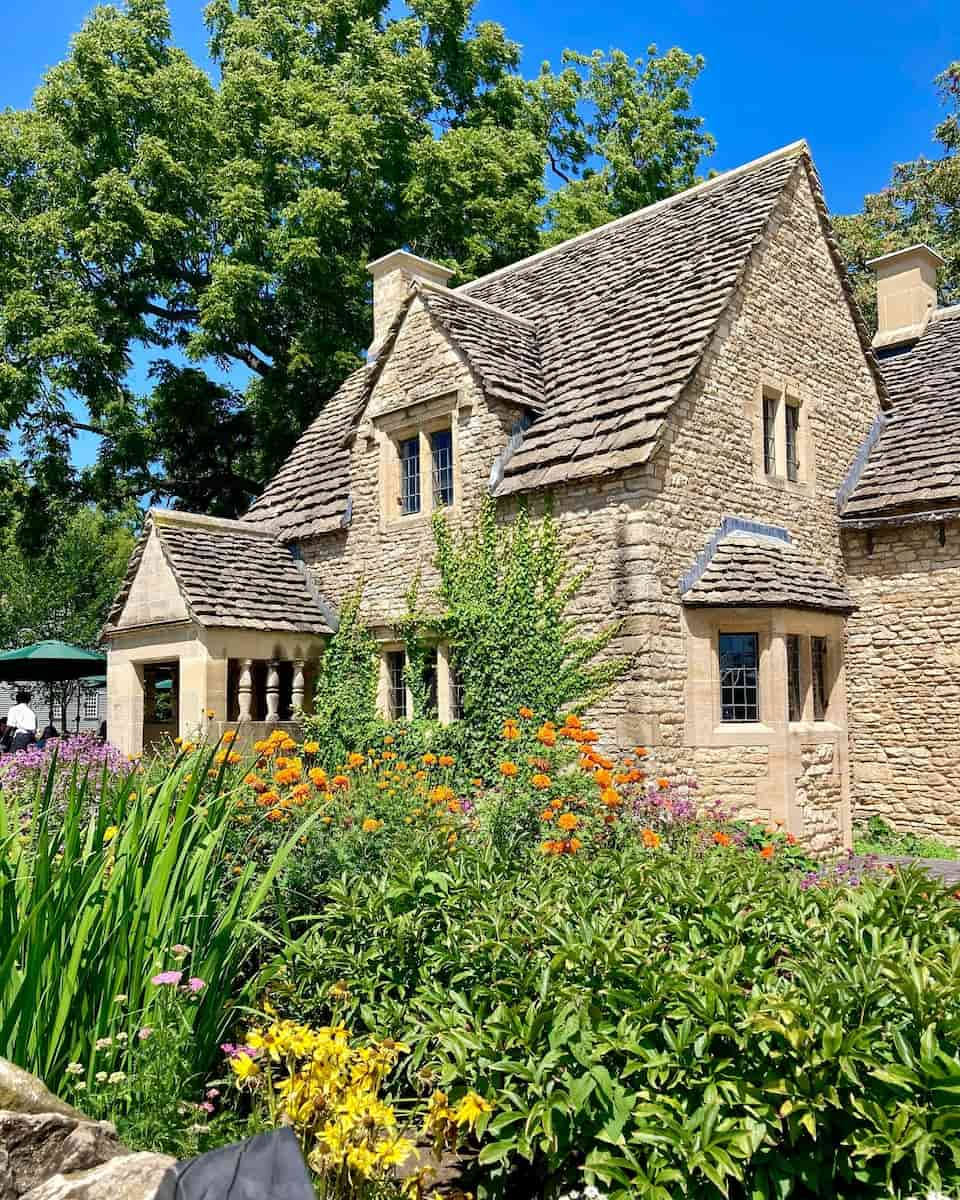
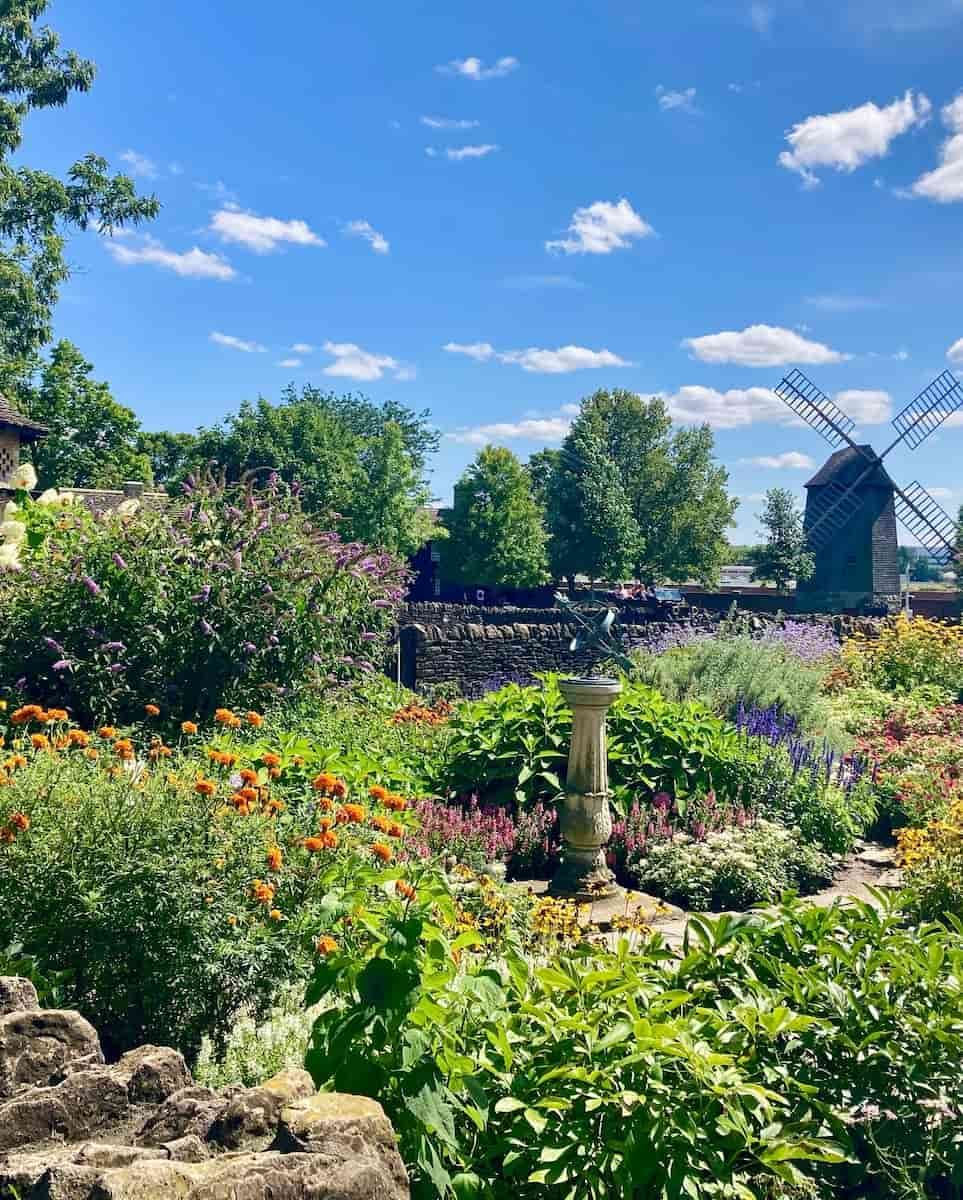
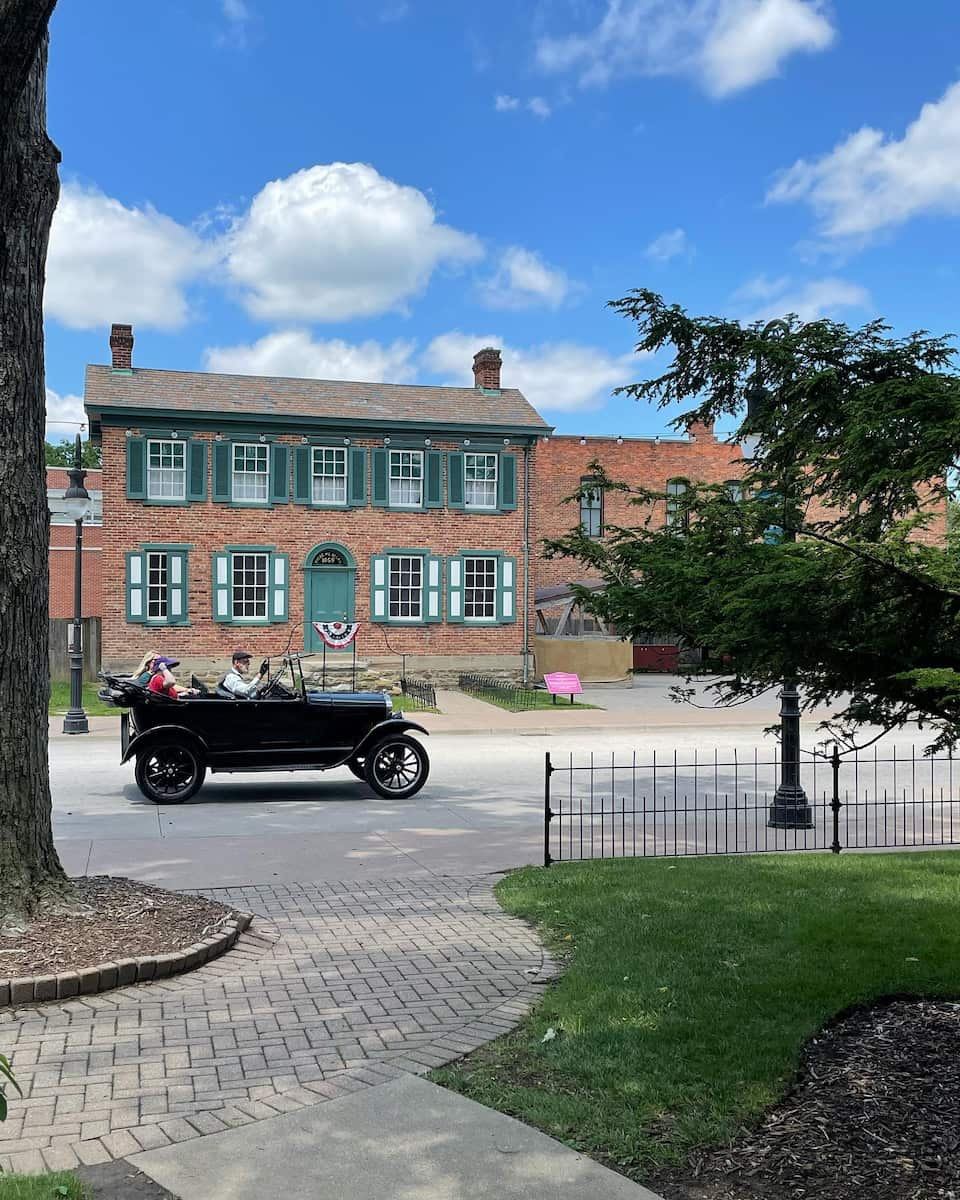
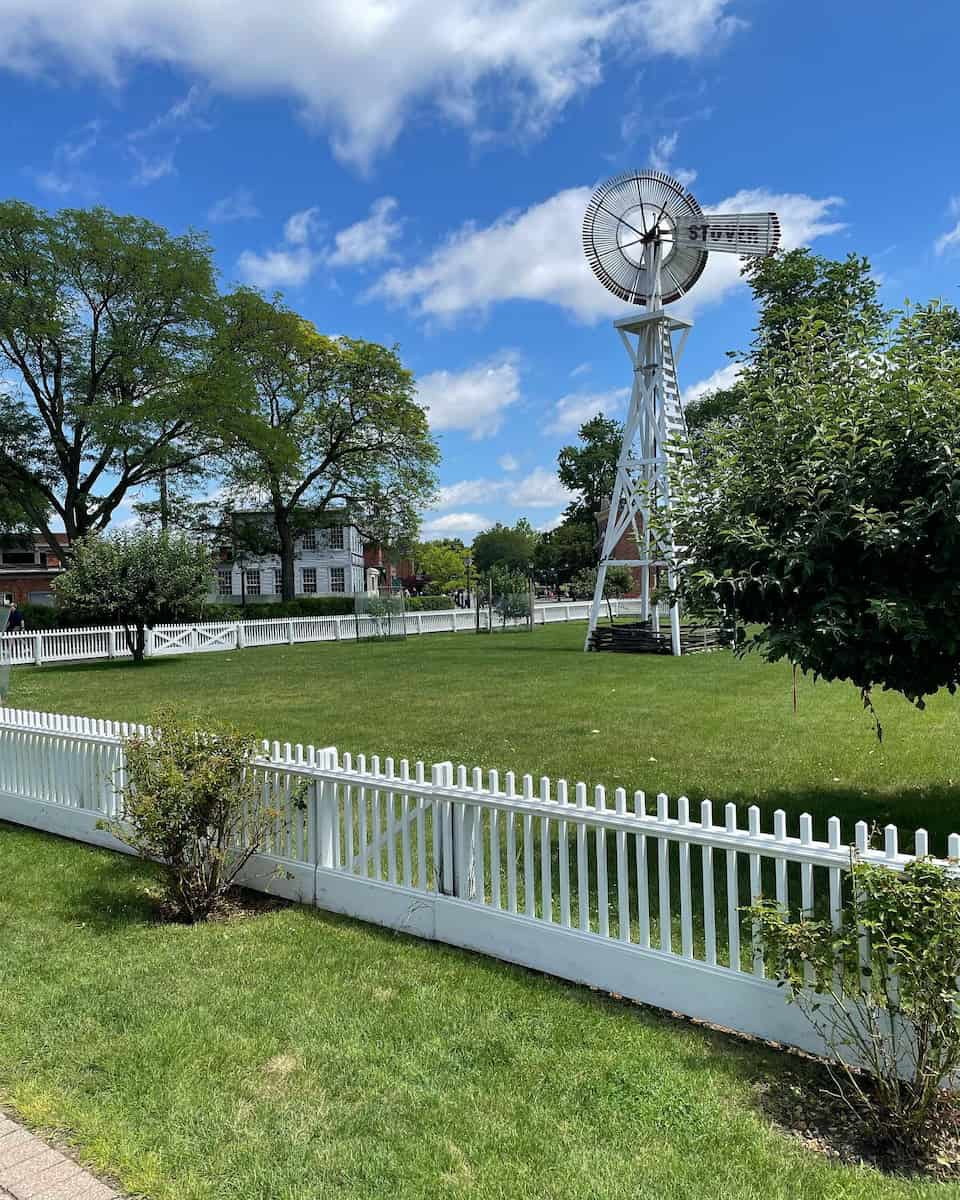


Transportation Heritage. The Railroad Junction offers rides on authentic steam-powered locomotives while the working roundhouse demonstrates 19th-century railroad technology. I discovered that children love exploring the Mack Avenue Plant replica, where they can see early automobile assembly methods . The combination of rides and educational exhibits keeps families engaged for hours.
Agricultural Experiences. The Working Gardens showcase America’s agricultural revolution through fields of ripening crops and heritage livestock. Children learn about farm life through interactive demonstrations that explain how families survived using traditional farming methods . The living history exhibitions provide context for modern agricultural practices.
| Ticket Type | Regular Season | Peak Season |
|---|---|---|
| Adult | $28.00 | $32.00 |
| Senior (62+) | $26.00 | $30.00 |
| Youth (5-11) | $21.00 | $24.00 |
| Child (under 5) | FREE | FREE |
4. Detroit Zoo
Wildlife Encounters. The Detroit Zoo is a favorite among families, animal lovers, and those looking for a memorable day out in the Great Lakes State. With over 2,000 animals from more than 200 species, you can see everything from polar bears swimming above you in the Arctic Ring of Life to kangaroos hopping through the Australian Outback. I was amazed by the open habitats, which let you get surprisingly close to giraffes, lions, and wallabies—making this a top pick for anyone searching for things to do with kids.
Memorable Experiences. One of my favorite features is the Tauber Family Railroad, a mini train that takes you between the entrance and Africa Station for just $3. The classic carousel is another highlight, where you can pick your favorite animal and enjoy a breezy spin in the park’s center. For something unique, try the Nocturnal Adventure—an after-hours experience where you can see animals at dusk, enjoy pizza and s’mores, and leave with a souvenir photo. These private evenings are perfect for group celebrations or family reunions.
| Experience/Activity | Price (USD) | Notes |
|---|---|---|
| General Admission (Adult) | $22.50–$30 | Discounts for groups |
| Tauber Family Railroad | $3 | One way |
| Carousel | $3 | Per ride |
| Nocturnal Adventure | $65/person | Dinner, s’mores, photo incl. |
| Private Group Night | $900–$1,300 | Up to 20 people, with dinner |
5. Great Lakes Shipwreck Museum
Haunting History. The Great Lakes Shipwreck Museum at Whitefish Point is a powerful destination where Lake Superior’s maritime past is brought to life through moving exhibits and artifacts. Entering the main gallery, you’re met with dim lighting and bright displays that honor the thousands of sailors lost to Superior’s storms. The focal point is the recovered bell from the SS Edmund Fitzgerald, displayed as a tribute to the 29 crewmen who died in 1975. This is a must-see for anyone interested in the region’s shipping history.
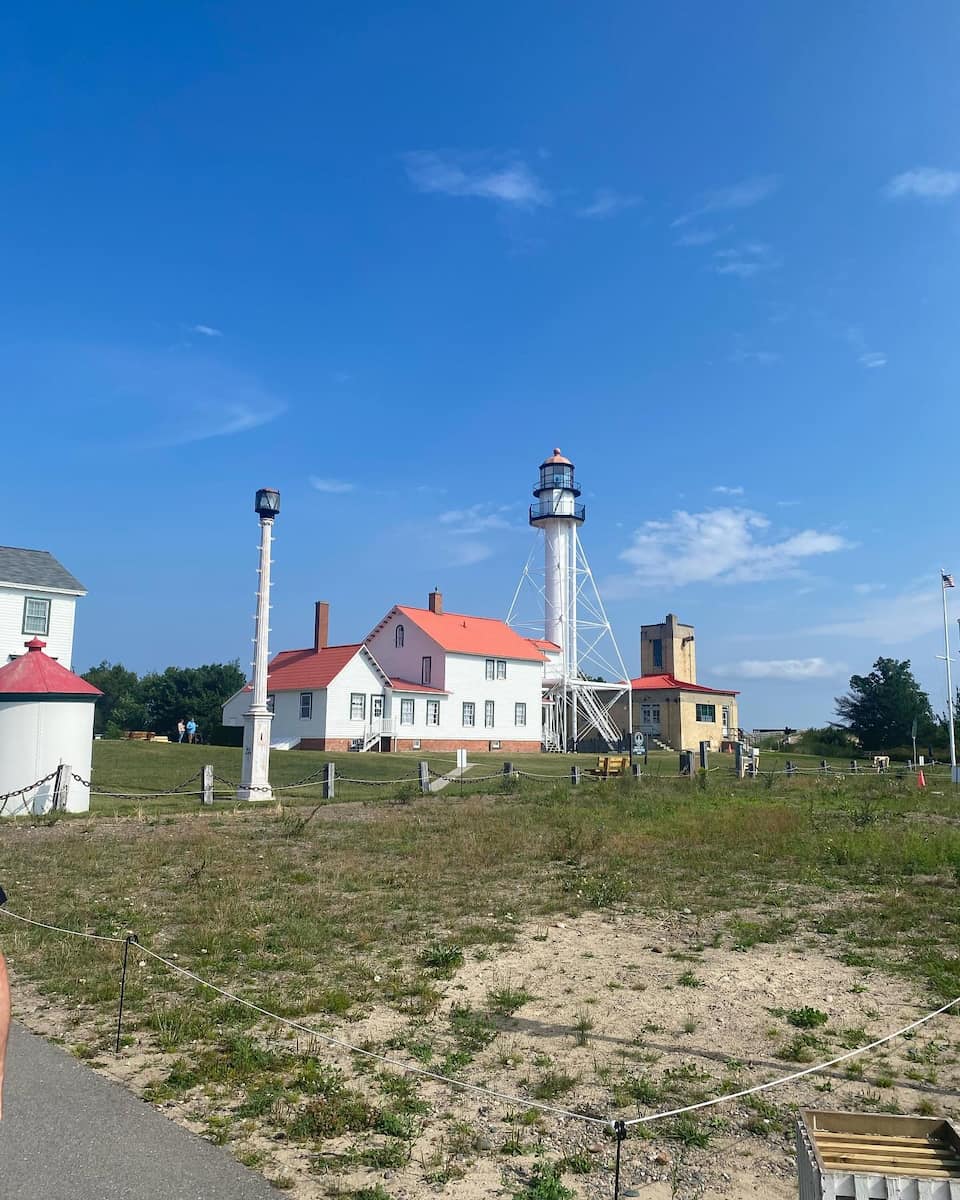
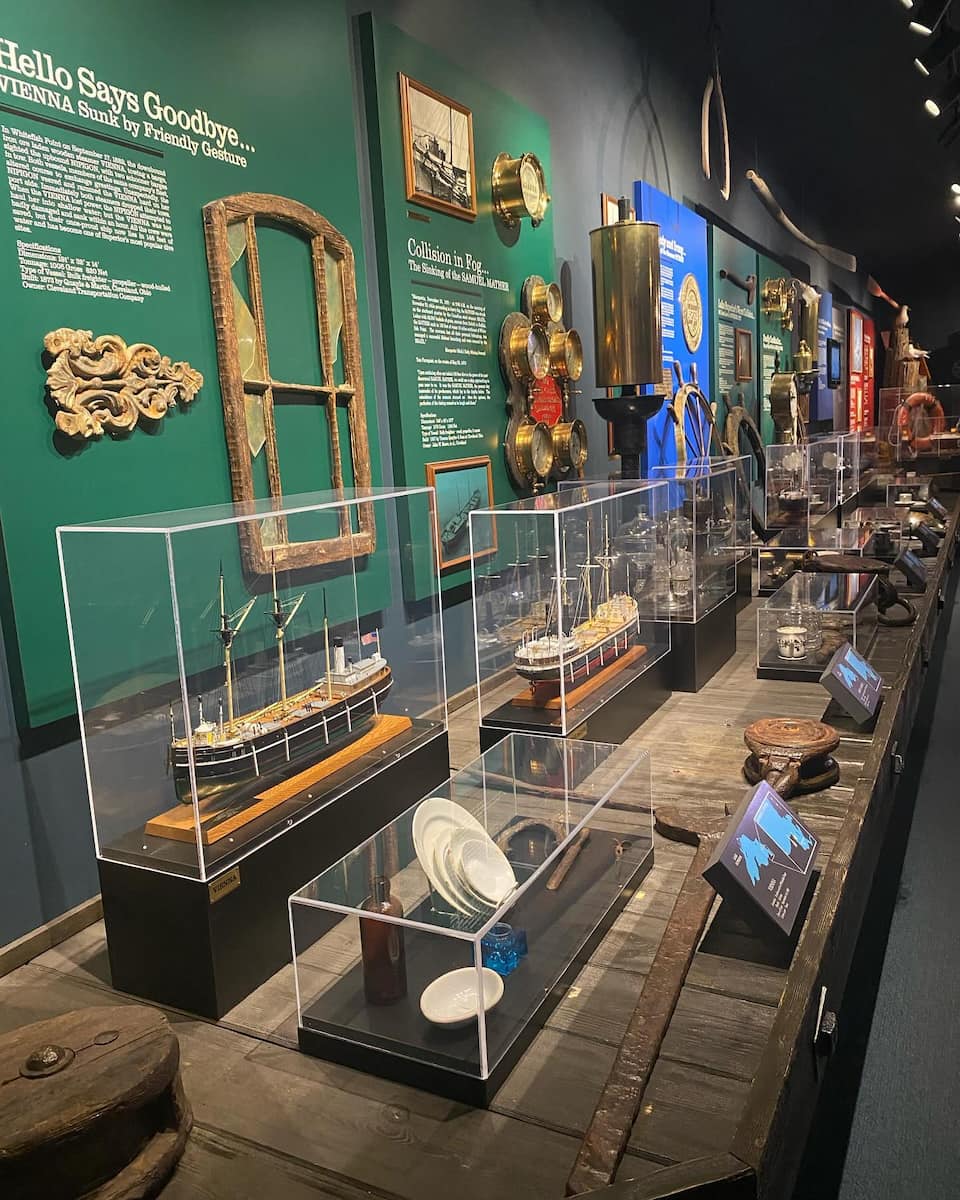
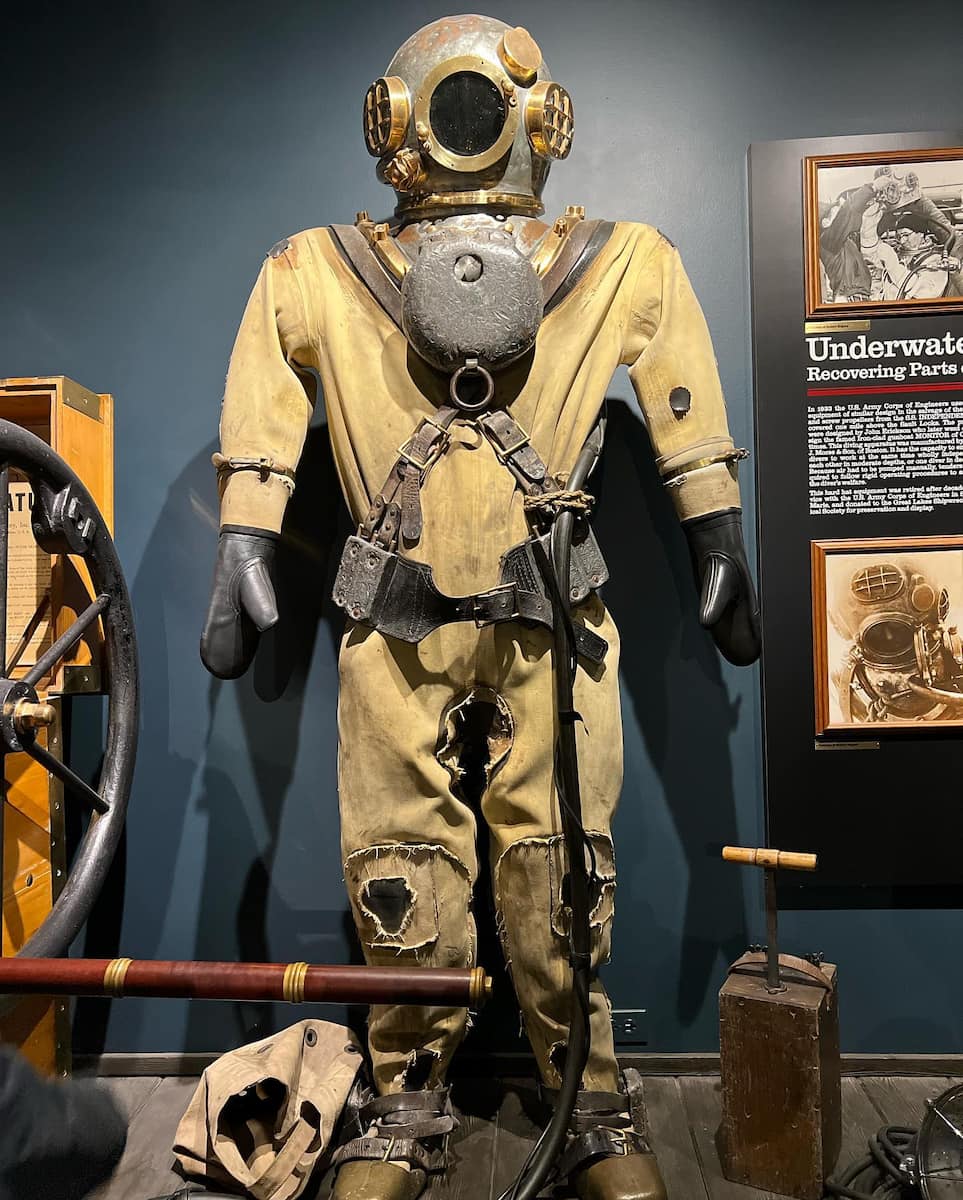
Campus and Exhibits. The site features several buildings, each offering a different perspective on life at Whitefish Point. I explored the 1861 Lightkeeper’s Quarters, restored to show how families managed life at this remote location, and the 1923 Surfboat House, which displays a full-size replica of the 26-foot Beebe-McClellan surfboat once used by the U.S. Life-Saving Service. The active Whitefish Point Light Tower, operating since 1848, lets visitors climb 56 steps for sweeping views of Lake Superior—a highlight for those who appreciate maritime history.
Edmund Fitzgerald Experience. Don’t miss the 20-minute film about the recovery of the Edmund Fitzgerald’s bell, which is essential for understanding Lake Superior’s most famous shipwreck. I saw families moved by the personal stories behind the tragedy and the innovative underwater recovery mission. The displays cover 13 different shipwrecks, with artifacts, photos, and detailed accounts of the events leading up to each disaster.
| Admission Type | Price (USD) | Includes |
|---|---|---|
| Main Exhibit | $14.00 | All buildings except lighthouse climb |
| Exhibit + Tower | $18.00 | All buildings plus lighthouse climb |
| Senior (65+) | $12.00 | All buildings except lighthouse |
| Youth (6-17) | $8.00 | All buildings except lighthouse |
| Children (0-5) | FREE | All areas |
Free Entertainment
1. Detroit Riverwalk
Waterfront Paradise. The Detroit Riverwalk stretches three miles along the Detroit River, offering stunning views of the Canadian skyline and Belle Isle. I’ve walked this path countless times, and each visit reveals something new – from public art installations to seasonal festivals. The manicured parks and pavilions create perfect spots for picnics, while the paved trails accommodate walkers, joggers, and cyclists of all skill levels.
Activities Galore. Free fitness classes happen throughout the summer, including yoga sessions every Thursday at 6 PM and Friday at 10 AM in Milliken State Park. The AARP Detroit Riverwalkers program runs from June through August, offering guided walks for adults 50-plus with blood pressure screenings and healthy snacks. I watched families fishing from the piers while children played in the splash fountains at Hart Plaza.
Seasonal Events. The riverfront hosts numerous free concerts and festivals throughout the year. During my summer visits, I’ve enjoyed live music at the amphitheaters and watched fireworks reflecting off the water during special celebrations. Winter transforms the area into a peaceful walking destination with fewer crowds but equally beautiful views.
Practical Access. Multiple parking areas serve the riverfront, including the GM Renaissance Center garage which provides easy access to the main attractions. The Dequindre Cut connects the riverfront directly to Eastern Market, creating opportunities for extended exploration. MoGo bike stations throughout the area offer convenient rental options for those wanting to cover more ground.
| Activity | Cost | Schedule |
|---|---|---|
| Walking/Jogging | FREE | Daily, 24/7 |
| Yoga Classes | FREE | Thu 6 PM, Fri 10 AM |
| Riverwalkers Program | FREE | Tue/Thu 8-10 AM (summer) |
| Parking (GM RenCen) | $5-15/day | Varies by event |
2. Presque Isle Park (Marquette)
Natural Beauty. This 323-acre peninsula jutting into Lake Superior ranks among Michigan’s most spectacular free attractions. I’ve hiked the trails through diverse landscapes including pebble beaches, rocky cliffs, bogs, and dense forests. The park supports over 100 native plant species, creating a living laboratory for nature enthusiasts and photographers.
Relax Opportunities. Two picnic areas with grills and restrooms provide perfect spots for family gatherings. The playground facilities keep children entertained while adults enjoy the serene lake views. I discovered that the historic wooden bandshell hosts free concerts during summer months, adding cultural experiences to the natural beauty.
Hiking and Exploration. Well-maintained trails wind throughout the park, offering options for all fitness levels. The shoreline path provides stunning views of Lake Superior’s vast expanse, while interior trails lead through quiet forests where wildlife sightings are common. The custom-designed timber gazebo serves as a peaceful retreat for contemplation or reading.
Historical Significance. Originally designated as a government lighthouse reservation, the park became Marquette’s property in 1886 through the efforts of Peter White. The tall Lombardy Poplar trees lining Lakeshore Boulevard were planted by White himself, creating the grand entrance that welcomes visitors today.
3. Belle Isle Park (Detroit)
Urban Oasis. At 982 acres, Belle Isle surpasses New York’s Central Park in size and offers an incredible escape from city life. Designed by Frederick Olmsted, the island maintains a third of its area as untouched woodland while providing numerous recreational opportunities. I’ve spent entire days here exploring different sections without feeling crowded or rushed.
Free Attractions. The Belle Isle Aquarium, one of North America’s oldest, offers free admission and houses fascinating freshwater species. The Belle Isle Nature Center provides educational programs and wildlife viewing opportunities at no cost. I watched children’s excitement as they discovered turtles and frogs in the wetland areas.
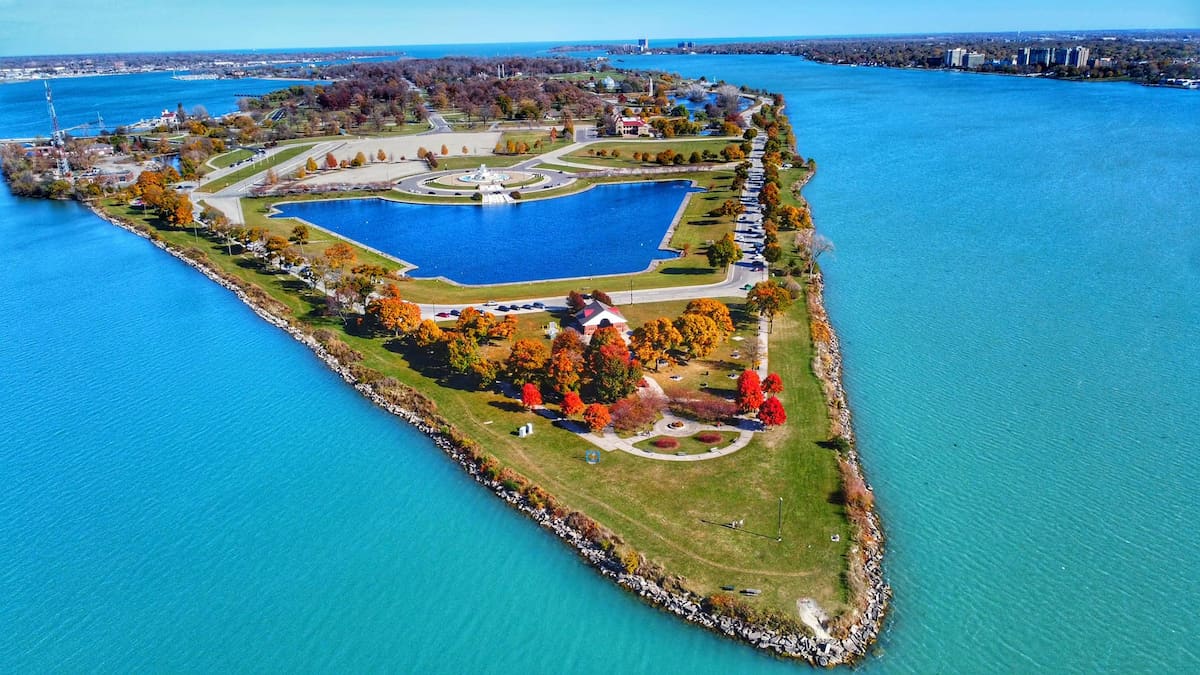
Outdoor Activities. Cycling around the island’s perimeter road provides excellent exercise with constantly changing scenery. The beaches offer swimming and sunbathing opportunities during warm months, while the fishing spots attract anglers year-round. Multiple picnic areas with grills make it easy to spend entire days here without spending money on restaurants.
Access and Transportation. While cars pay an entrance fee, pedestrians and cyclists cross the MacArthur Bridge for free. This policy makes Belle Isle particularly attractive for budget-conscious families. The island’s flat terrain and paved paths accommodate strollers, wheelchairs, and casual walkers.
4. Michigan State Parks
Affordable Access. Michigan’s Recreation Passport costs just $12 for residents and provides access to all state parks throughout the year. This small investment unlocks incredible value, considering individual daily fees would quickly exceed the annual cost. I’ve used my passport at over a dozen parks, from Warren Dunes to Tahquamenon Falls.
Diverse Experiences. Each state park offers unique attractions and activities. Warren Dunes State Park features towering sand dunes perfect for climbing and racing down, while Grand Mere State Park provides serene wooded trails and Lake Michigan access. The variety ensures that every family member finds something appealing.
Seasonal Activities. Spring brings wildflower blooms and returning wildlife, making it perfect for nature photography and bird watching. Summer offers swimming, hiking, and camping opportunities. Fall transforms the parks into colorful wonderlands ideal for leaf-peeping and scenic drives. Winter activities include cross-country skiing and snowshoeing at many locations.
Educational Programs. Many state parks offer free interpretive programs led by knowledgeable naturalists. I’ve attended campfire talks about local wildlife and guided hikes that revealed hidden park features. These programs add educational value to recreational visits.
| Pass Type | Annual Cost | Daily Alternative |
|---|---|---|
| Michigan Resident | $12.00 | $5.00 per park |
| Non-Resident | $34.00 | $9.00 per park |
| Senior (65+) | $6.00 | $5.00 per park |
5. University Museums (Ann Arbor)
Academic Excellence. The University of Michigan Museum of Art houses an impressive collection spanning cultures and centuries, all accessible without admission fees. I’ve spent hours exploring galleries featuring everything from ancient artifacts to contemporary installations. The museum’s rotating exhibitions ensure repeat visits reveal new discoveries.
Natural History Wonders. The University of Michigan Museum of Natural History captivates visitors with dinosaur skeletons, mineral collections, and interactive exhibits. Children gravitate toward the hands-on discovery areas while adults appreciate the scientific explanations accompanying each display. The planetarium shows, when offered, provide additional educational entertainment.
Campus Exploration. Both museums sit within the beautiful University of Michigan campus, creating opportunities for extended exploration. I enjoyed walking through the historic Diag and admiring the collegiate Gothic architecture between museum visits. The campus itself serves as an outdoor museum showcasing American university design.
Educational Programs. Free lectures, workshops, and special events regularly supplement the permanent collections. These programs often feature university professors and visiting scholars sharing expertise in accessible formats. Family-friendly activities during school breaks engage children while educating parents.
Seasonal Events in Michigan
Spring Events
Tulip Time Festival (Holland, May 2-11). Walking through Holland during Tulip Time feels like stepping into a Dutch fairy tale. Millions of tulips bloom throughout the city, creating a riot of colors that transforms downtown streets and parks into living artwork. I watched traditional Dutch dancers perform in authentic costumes while the aroma of fresh stroopwafels filled the air. The festival combines cultural heritage with natural beauty in ways that captivate visitors of all ages.
Festival Activities. Beyond the stunning tulip displays, the festival offers parades, concerts, and walking tours that showcase Holland’s Dutch heritage. The tall ship tours provide unique perspectives of the harbor while local restaurants feature special Dutch-inspired menus. I discovered that the wooden shoe carving demonstrations draw crowds throughout the day, with artisans explaining centuries-old techniques.
Practical Planning. Parking becomes challenging during peak weekend hours, so arrive early or use the free shuttle service from remote lots. The festival spans ten days, with weekends offering the most activities but also the largest crowds. Comfortable walking shoes are essential since the best tulip viewing requires covering significant ground.
National Morel Mushroom Festival (Boyne City, May). The arrival of morel mushrooms signals spring’s true beginning in northern Michigan. This festival celebrates the elusive delicacy with mushroom hunts, cooking demonstrations, and restaurants featuring morel-laden dishes. I joined the guided forays into local forests where experienced hunters shared identification tips and prime hunting locations.
LaughFest (Grand Rapids, March 5-9). Grand Rapids transforms into comedy central during this annual festival featuring stand-up comedians, improv groups, and family-friendly performances. Multiple venues throughout the city host events ranging from intimate club shows to large theater productions. The festival creates opportunities to discover new comedic talent while enjoying established performers.
| Event | Dates | Location | Typical Cost |
|---|---|---|---|
| Tulip Time Festival | May 2-11 | Holland | FREE (parking extra) |
| Morel Festival | May (TBD) | Boyne City | FREE admission |
| LaughFest | March 5-9 | Grand Rapids | $15-75 per show |
Summer Festivals
National Cherry Festival (Traverse City, June 28 – July 5). The crown jewel of Michigan summer festivals transforms Traverse City into a cherry-themed wonderland. Over 150 events fill the week, from cherry pie eating contests to air shows over Grand Traverse Bay. I sampled everything from cherry salsa to cherry beer while watching the Cherry Royale Parade wind through downtown streets lined with enthusiastic spectators.
Festival Highlights. The sand sculpture contests on the beach showcase incredible artistry, while the classic car show displays vintage automobiles against the backdrop of sparkling water. Live concerts feature both local and national acts, creating soundtrack for the celebration. The midway offers traditional carnival rides and games that appeal to families seeking classic summer fun.
Ann Arbor Art Fair (July 17-19). One of the nation’s largest outdoor art fairs transforms downtown Ann Arbor into an artistic paradise. Over 1,000 artists display original works ranging from paintings and sculptures to jewelry and ceramics. I spent hours wandering the booths, discovering unique pieces while street performers entertained crowds at every corner.
Battle Creek Field of Flight Air Show & Balloon Festival (July 2-5). The sky above Battle Creek fills with hot air balloons and military aircraft during this spectacular event. I watched dawn balloon launches create a colorful tapestry against the morning sky, then witnessed precision flying demonstrations by the Thunderbirds. The combination of peaceful balloons and powerful jets creates unforgettable contrasts.
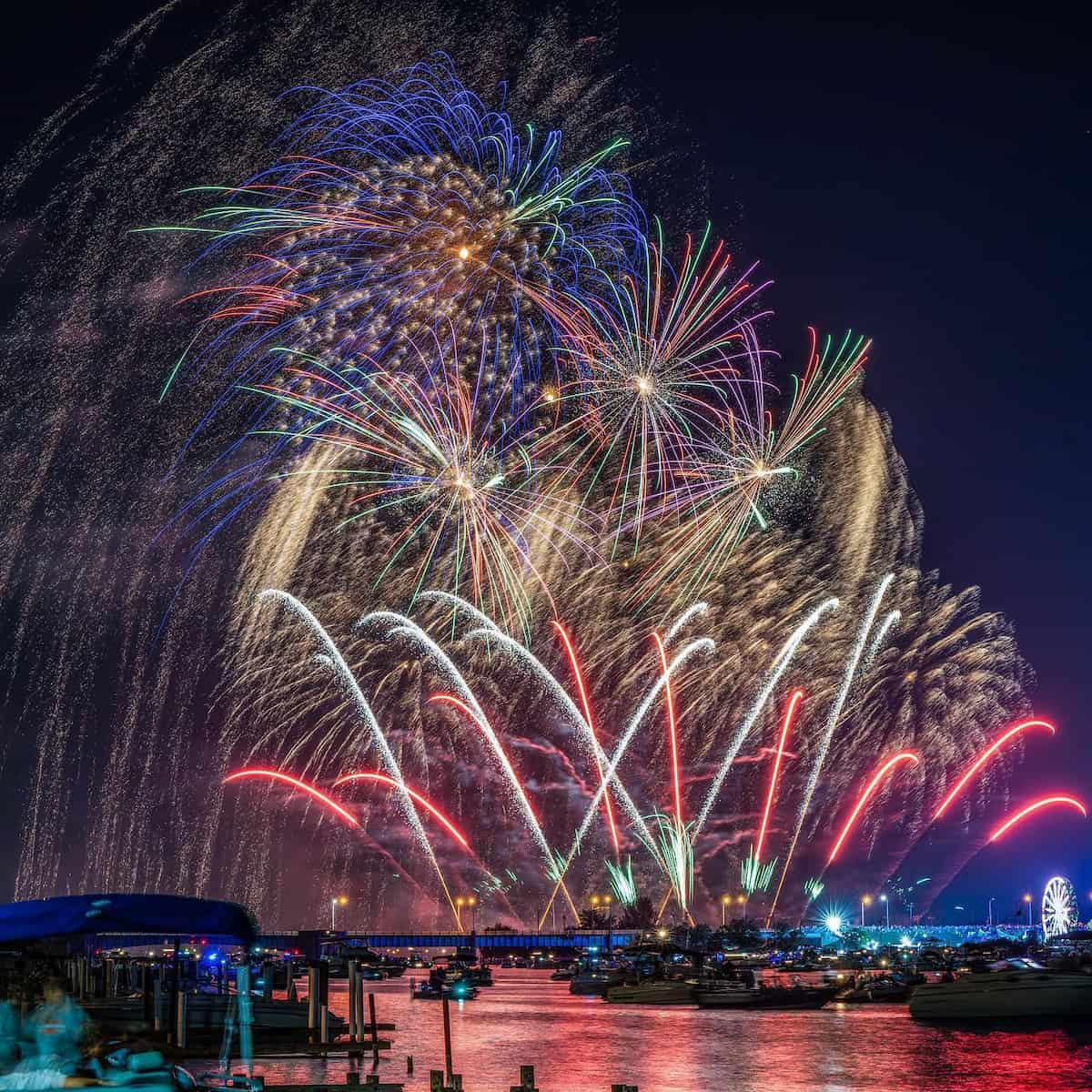

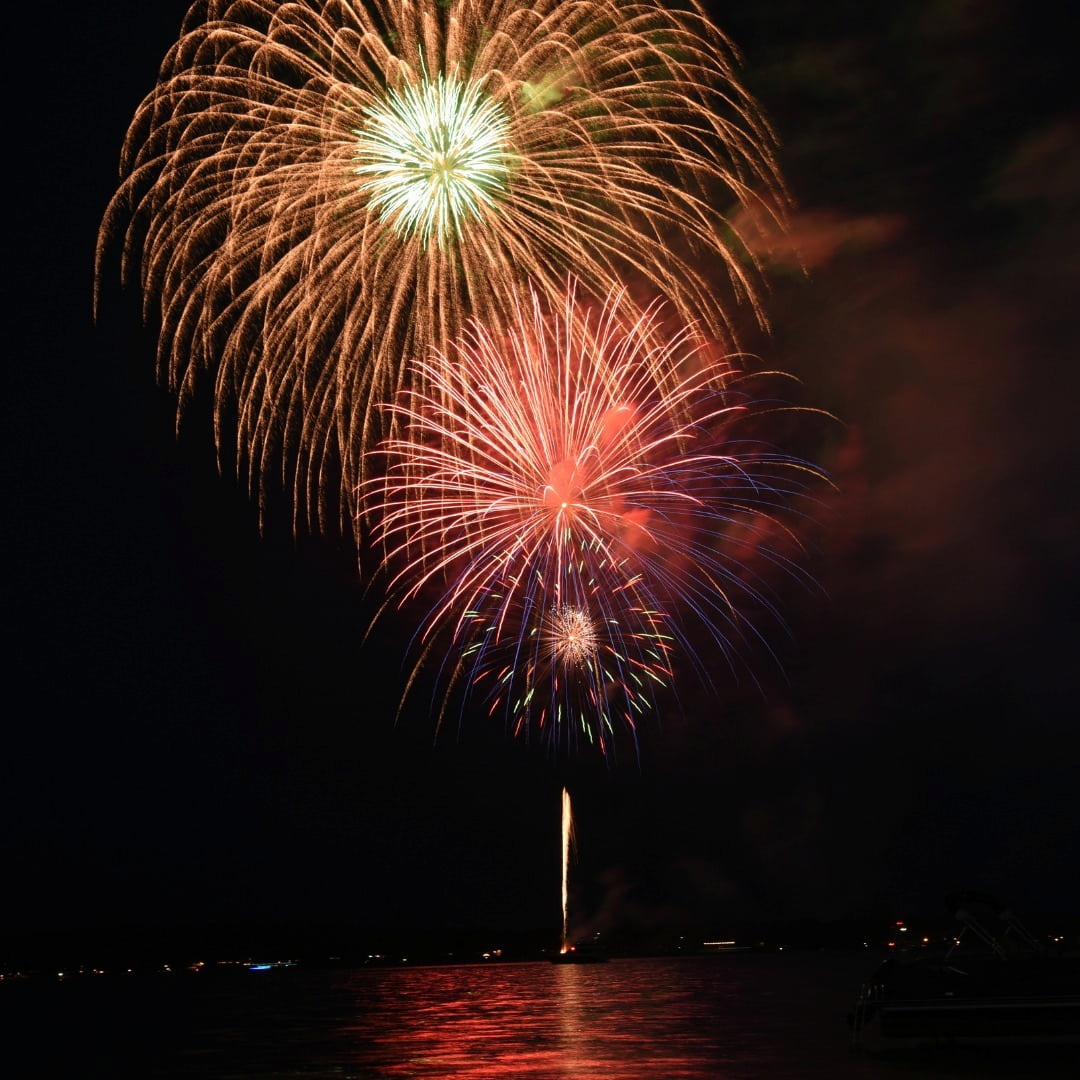
Bay City Fireworks Festival (July 3-5). Three consecutive nights of fireworks over the Saginaw River make this one of Michigan’s premier Independence Day celebrations. The VIP viewing areas provide excellent sightlines, while the family carnival and live entertainment create full-day experiences. I discovered that arriving early secures the best viewing spots along the riverbank.
| Festival | Duration | Estimated Daily Attendance | Parking Cost |
|---|---|---|---|
| Cherry Festival | 8 days | 500,000+ total | $10-20/day |
| Ann Arbor Art Fair | 3 days | 500,000+ total | $15-25/day |
| Air Show & Balloons | 4 days | 100,000+ total | $10-15/day |
| Bay City Fireworks | 3 days | 150,000+ total | $5-10/day |
Fall Events
Fall Color Tours. Michigan’s autumn transformation creates some of America’s most spectacular foliage displays. The Tunnel of Trees drive along M-119 between Harbor Springs and Cross Village offers 20 miles of canopied roadway ablaze with reds, oranges, and yellows. I’ve driven this route multiple times, and each visit reveals different color combinations depending on weather patterns and timing.

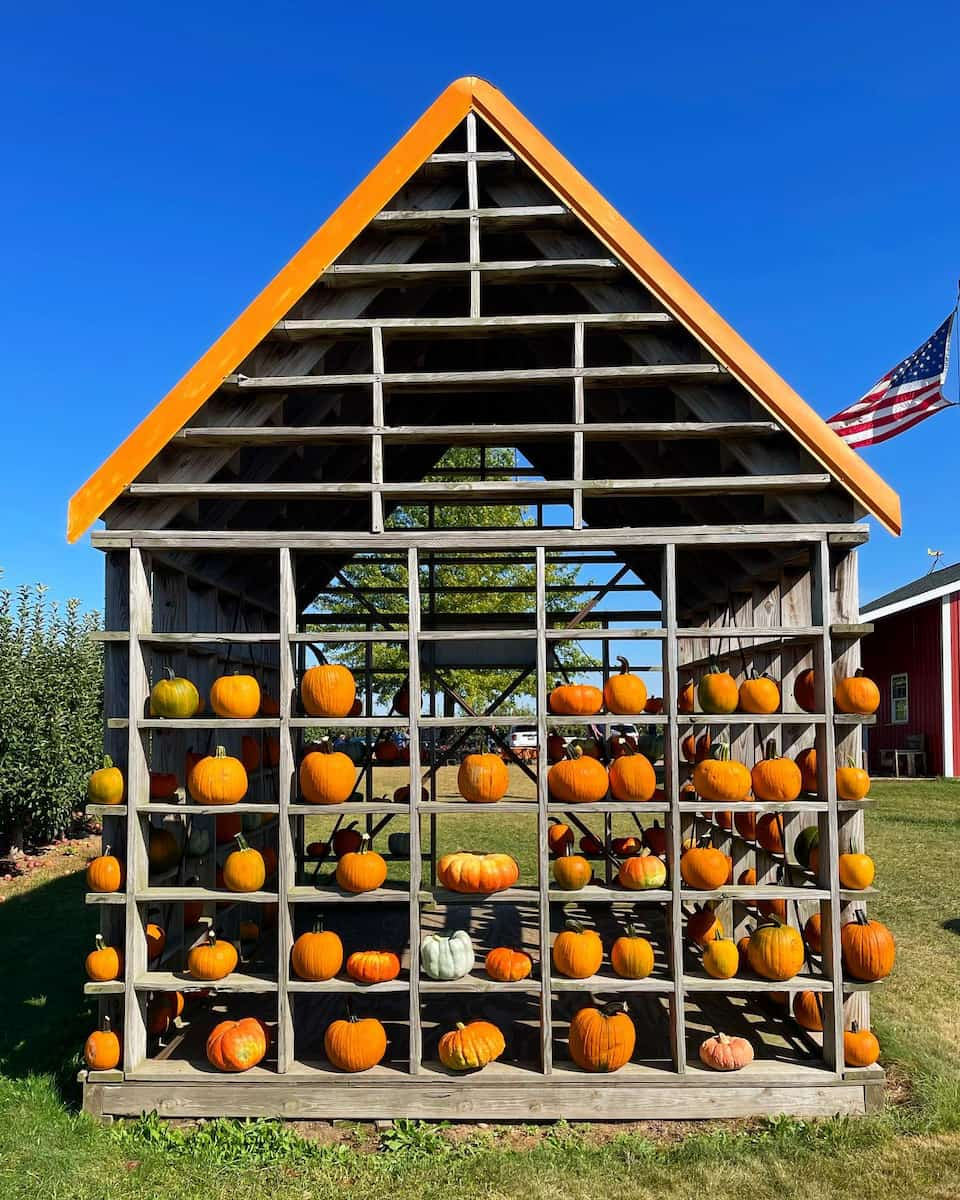

Harvest Festivals. Apple orchards throughout the state host harvest celebrations featuring cider pressing, hayrides, and corn mazes. Crane Orchards in Fennville and Robinette’s Apple Haus in Grand Rapids create family-friendly atmospheres with petting zoos and fresh-baked goods. The combination of crisp air and apple cider creates quintessential fall experiences.
Oktoberfest Celebrations. German heritage comes alive during October festivals in Frankenmuth and other communities. Traditional music, authentic German food, and craft beer tastings celebrate European culture. I enjoyed bratwurst and sauerkraut while listening to polka bands and watching traditional folk dancing demonstrations.
Winter Events
Zehnder’s Snowfest (Frankenmuth, January). This winter wonderland features professional ice sculptors creating intricate artwork throughout downtown Frankenmuth. I watched artists transform blocks of ice into detailed sculptures using chainsaws and hand tools. The festival combines outdoor art with warm indoor attractions like the Bavarian Inn and Bronner’s Christmas Wonderland.
Winter Sports Festivals. Ski resorts throughout northern Michigan host winter festivals celebrating snow sports. Boyne Mountain and Crystal Mountain offer night skiing, snowboarding competitions, and winter carnival activities. Festivals create an outdoor community atmosphere during Michigan’s coldest months.
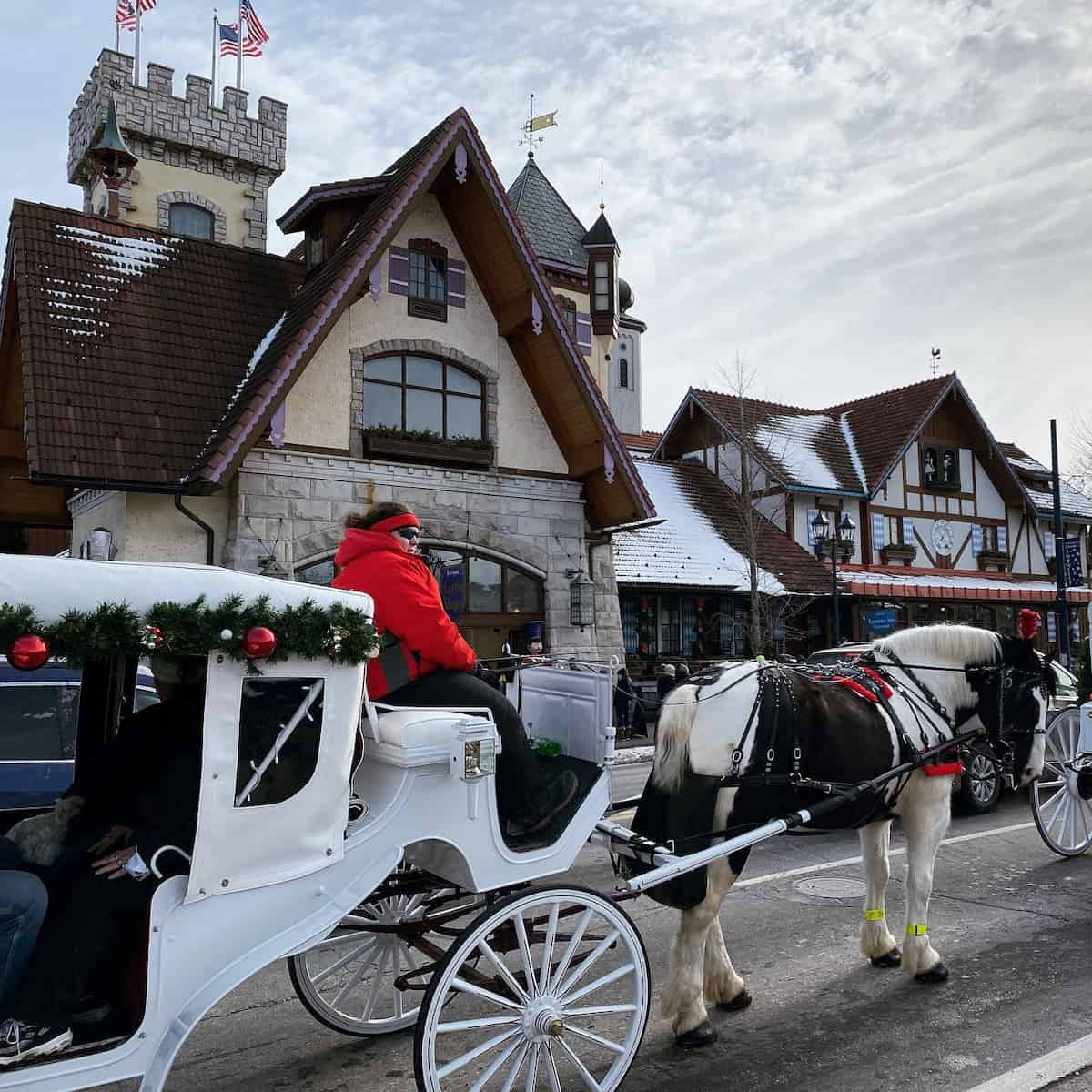
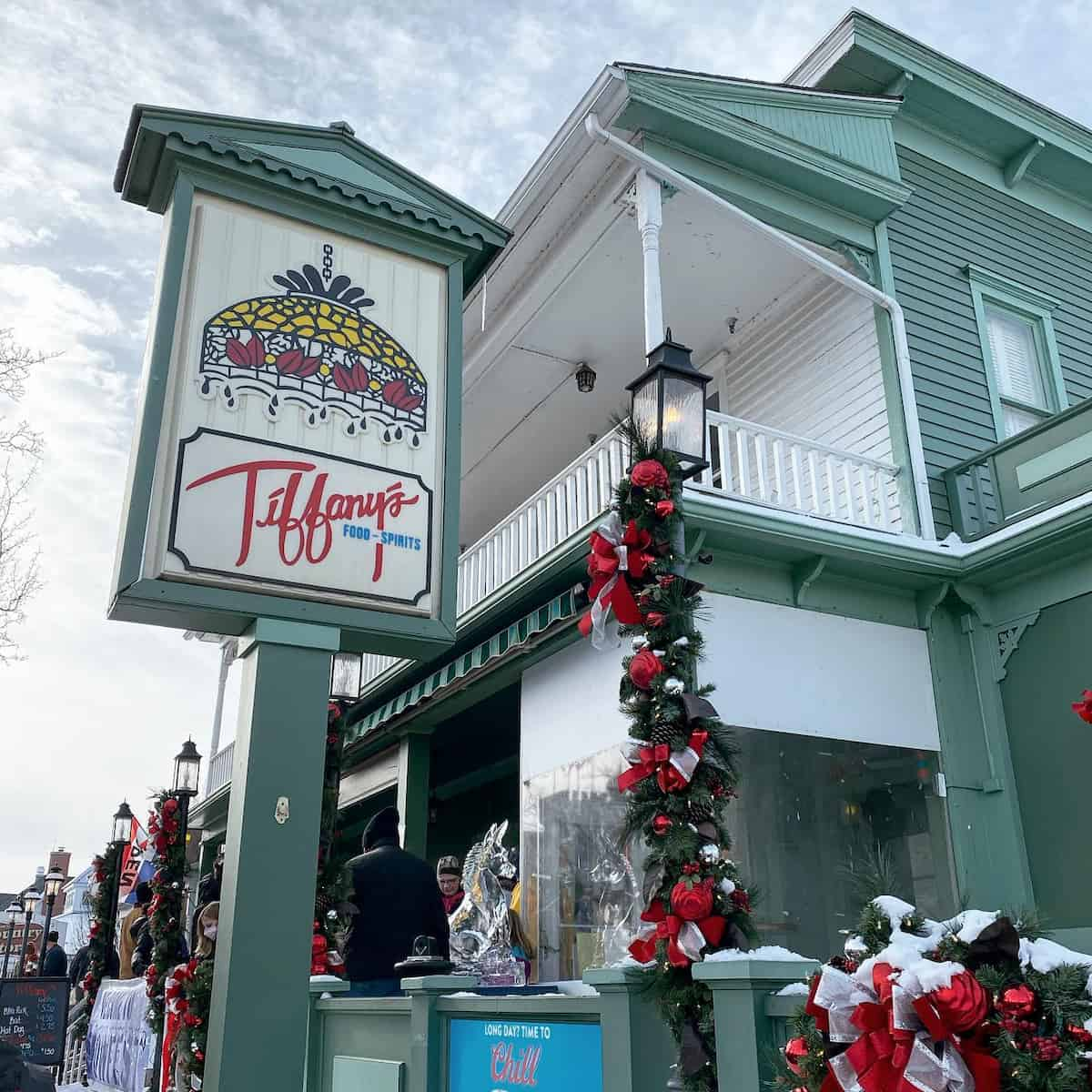

Holiday Light Displays. Christmas markets and light festivals illuminate Michigan cities during December. The Michigan City Festival of Lights creates magical holiday atmospheres with decorated trees and seasonal entertainment. I discovered that these events provide warm community gathering spaces during the darkest time of year.
Ice Fishing Tournaments. Frozen lakes across the state host competitive ice fishing events that draw participants from neighboring states. These tournaments combine outdoor chill with social gatherings, often featuring warming huts and fish fries. The events celebrate Michigan’s winter culture and outdoor traditions.
Day Trips from Michigan Cities
1. Mackinac Island from Detroit
Ferry Adventure. The journey to Mackinac Island begins with a scenic ferry ride from either Mackinaw City or St. Ignace, both about 4.5 hours north of Detroit. I’ve taken both routes, and the St. Ignace departure offers slightly better value while providing equally stunning views of the Straits of Mackinac. The 20-minute ferry crossing builds anticipation as the Victorian-era Grand Hotel comes into view.
Car-Free Exploration. Stepping onto the island feels like traveling back to the 1890s when horse-drawn carriages and bicycles were the primary transportation. I rented a bike and completed the 8.2-mile loop around the island, stopping at Arch Rock for breathtaking photos and British Landing for historical context. The absence of motor vehicles creates a peaceful atmosphere that’s increasingly rare in modern travel.

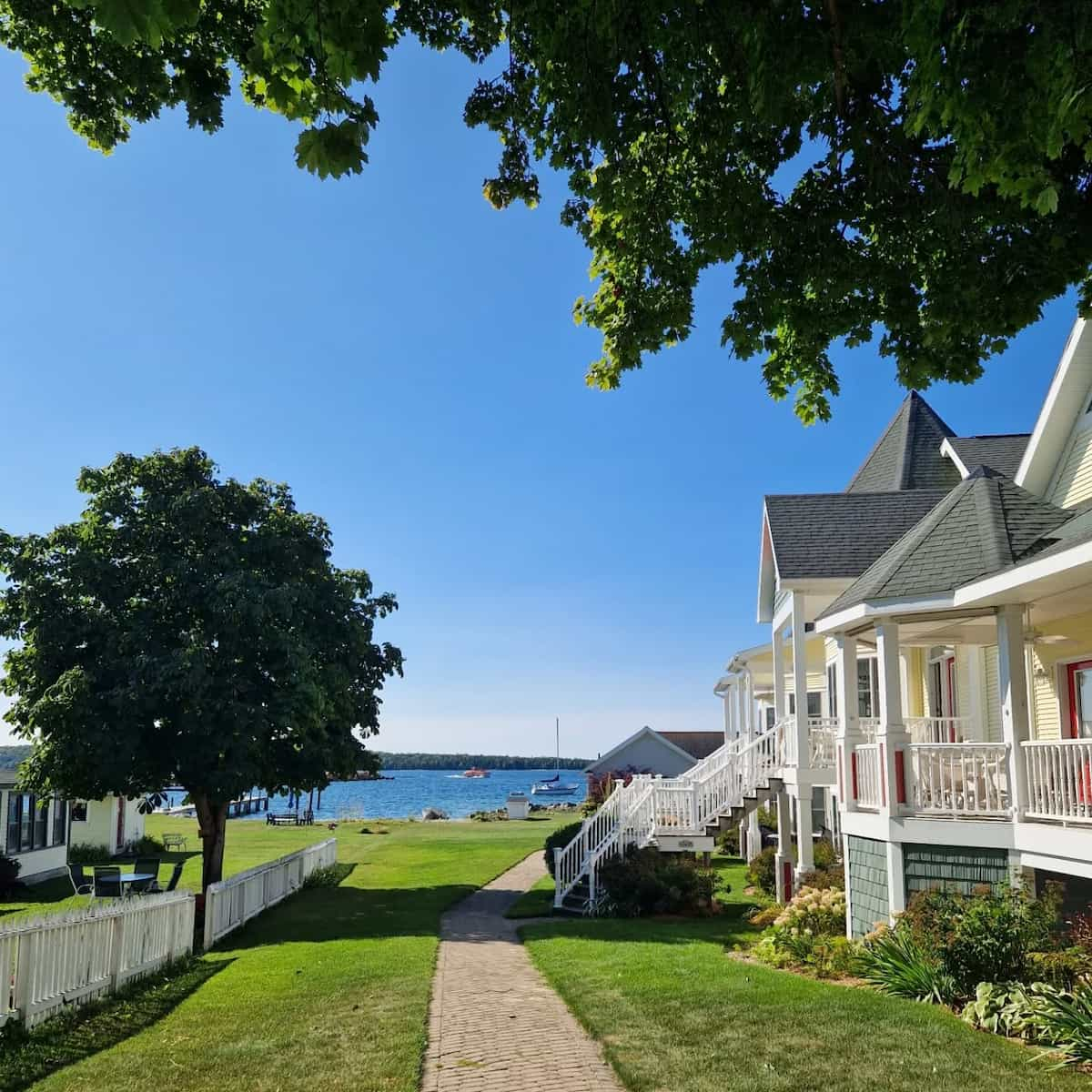
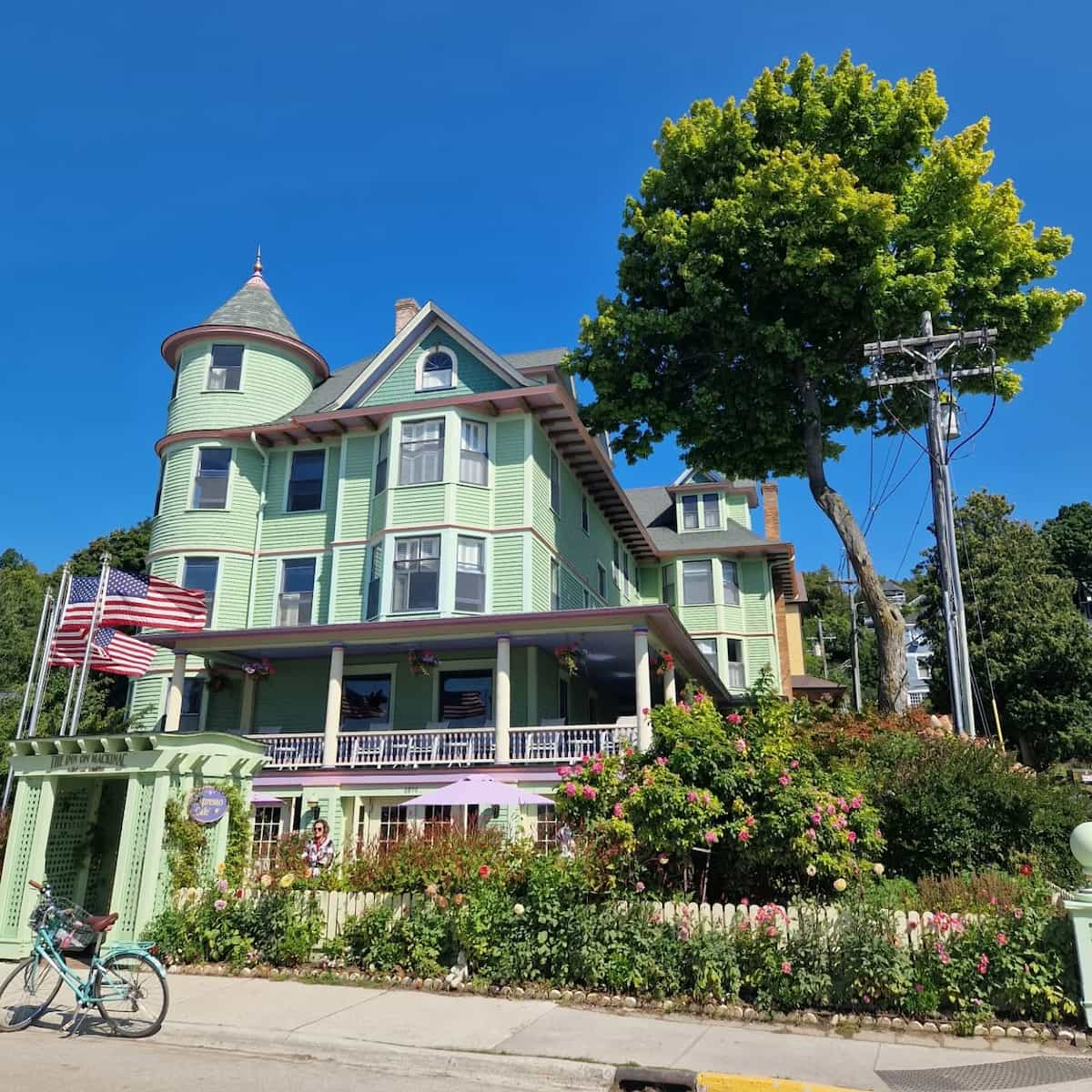
Historic Attractions. Fort Mackinac perches dramatically above the harbor, offering cannon demonstrations and Civil War reenactments during summer months. The fort’s museum explains the island’s strategic importance during various conflicts. I watched costumed interpreters demonstrate 19th-century military life while children participated in junior ranger programs.
Fudge and Shopping. The island’s famous fudge shops line Main Street, where confectioners hand-pull taffy and create chocolate masterpieces in storefront windows. Murdick’s Fudge and Ryba’s Fudge Shops compete for visitors’ attention with free samples and elaborate displays. The sweet aroma fills the downtown area, creating an irresistible sensory experience.
| Transportation | Cost | Duration |
|---|---|---|
| Ferry (Traditional) | $36.00 round trip | 20 minutes each way |
| Ferry (Classic from St. Ignace) | $22.95 round trip | 20 minutes each way |
| Bike Rental | $12-15/hour | Full day available |
| Horse Carriage Tour | $35-45/person | 1 hour 45 minutes |
⭐ Best Activities
- Scenic Mackinac Island: A Self-Guided Cycling Audio Tour – Explore Mackinac Island at your own pace, choosing to stop wherever you like with this self-guided audio tour. Rent your bicycles separately, and then choose your route. You don’t need to stick with a tour group or a fixed itinerary. You can start and finish when you like, and you also have offline access to maps, geodata, and your audio guide.
2. Sleeping Bear Dunes from Grand Rapids
Natural Wonder. The 1.5-hour drive from Grand Rapids to Sleeping Bear Dunes National Lakeshore leads to some of Michigan’s most spectacular scenery. The massive sand dunes rising 450 feet above Lake Michigan create dramatic landscapes that change with the light throughout the day. I’ve climbed the Dune Climb multiple times, and each visit reveals different colors and textures in the sand formations.
Pierce Stocking Scenic Drive. This 7.4-mile loop road provides accessible viewpoints for those who prefer driving to hiking. The overlooks offer panoramic views of Lake Michigan, the Manitou Islands, and the surrounding forests. I discovered that early morning and late afternoon provide the best lighting for photography, with fewer crowds at these times.
Glen Haven Village. This restored 1920s logging town showcases life in early 20th-century Michigan. The Sleeping Bear Point Coast Guard Station Maritime Museum explains the area’s maritime history through artifacts and interactive exhibits. I learned about the dangerous waters that claimed numerous ships and the brave coast guard crews who attempted rescues.
Beach Activities. The lakeshore includes pristine beaches perfect for swimming, sunbathing, and beachcombing. The water temperature remains cool even in summer, but the sandy beaches provide excellent picnic spots. I watched families build sandcastles while others explored the shoreline searching for Petoskey stones and other Lake Michigan treasures.
3. Ann Arbor from Detroit
University Town Charm. The 45-minute drive from Detroit to Ann Arbor leads to one of America’s premier college towns. The University of Michigan campus dominates the city center, creating a vibrant atmosphere filled with students, professors, and visitors. I’ve explored the campus multiple times, always discovering new architectural details and hidden courtyards.
Cultural Attractions. The University of Michigan Museum of Art houses an impressive collection spanning cultures and centuries, all accessible without admission fees. The Museum of Natural History captivates visitors with dinosaur skeletons and interactive exhibits. Both museums provide world-class experiences typically found only in major metropolitan areas.
Downtown Exploration. State Street and Main Street offer diverse shopping, dining, and entertainment options. The historic Michigan Theater showcases independent films and live performances in a beautifully restored venue. I enjoyed browsing the independent bookstores and record shops that give Ann Arbor its distinctive intellectual character.
Seasonal Activities. Fall brings spectacular foliage to the campus and surrounding areas, while football season creates electric energy throughout the city. The Matthaei Botanical Gardens provide year-round beauty with conservatories housing tropical plants during winter months. Spring and summer offer outdoor concerts and festivals that showcase local and national talent.
4. Traverse City from Grand Rapids
Cherry Capital. The scenic 2.5-hour drive north from Grand Rapids to Traverse City passes through rolling hills and charming small towns. Traverse City sits on the shores of Grand Traverse Bay, creating a stunning setting for this vibrant resort community. I’ve visited during different seasons, and each offers unique attractions and activities.
Wine Country. The Old Mission Peninsula and Leelanau Peninsula feature over 40 wineries producing award-winning wines. The cool climate and sandy soils create ideal conditions for growing grapes, particularly Riesling and Pinot Noir. I spent an afternoon touring wineries, learning about Michigan’s growing reputation in the wine industry while enjoying tastings with bay views.
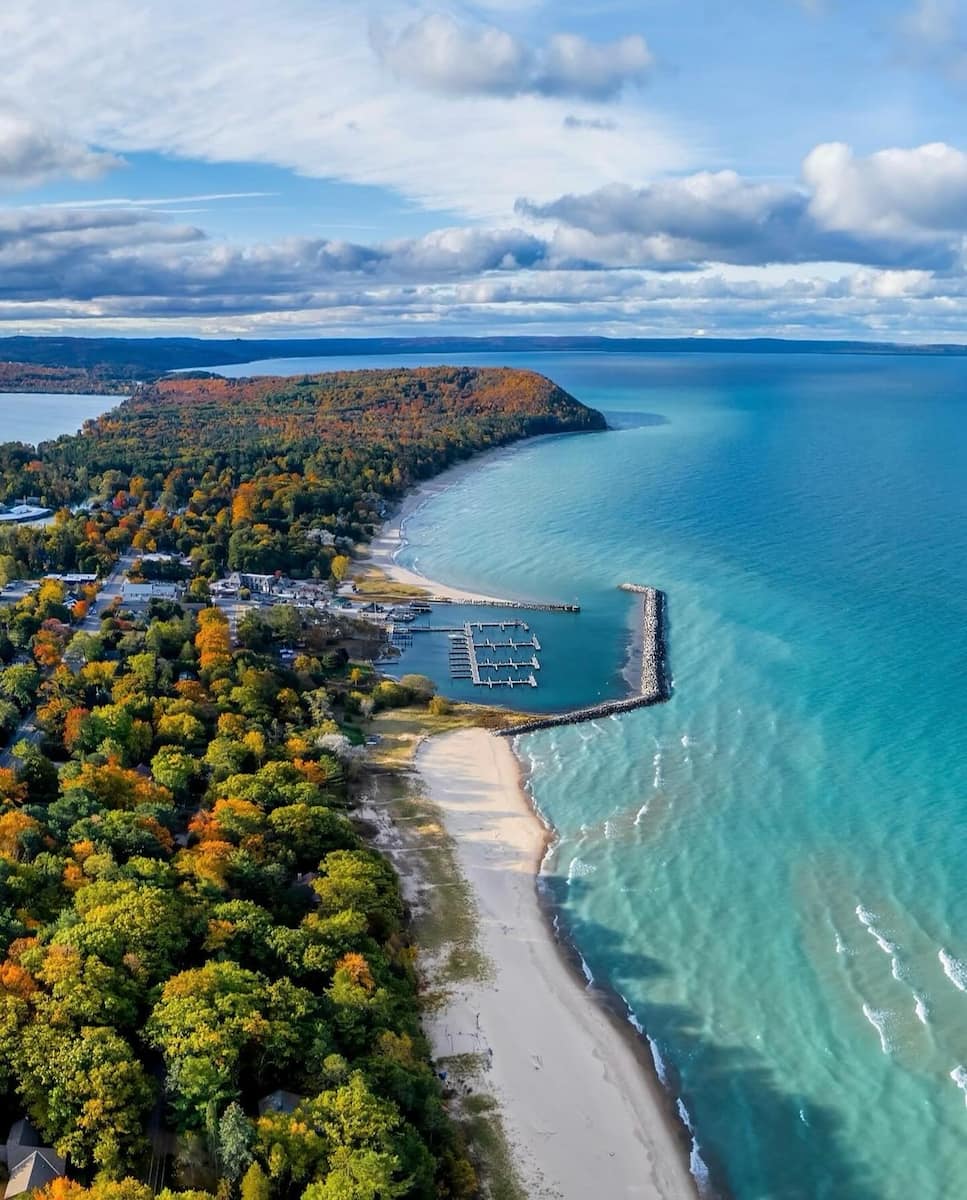
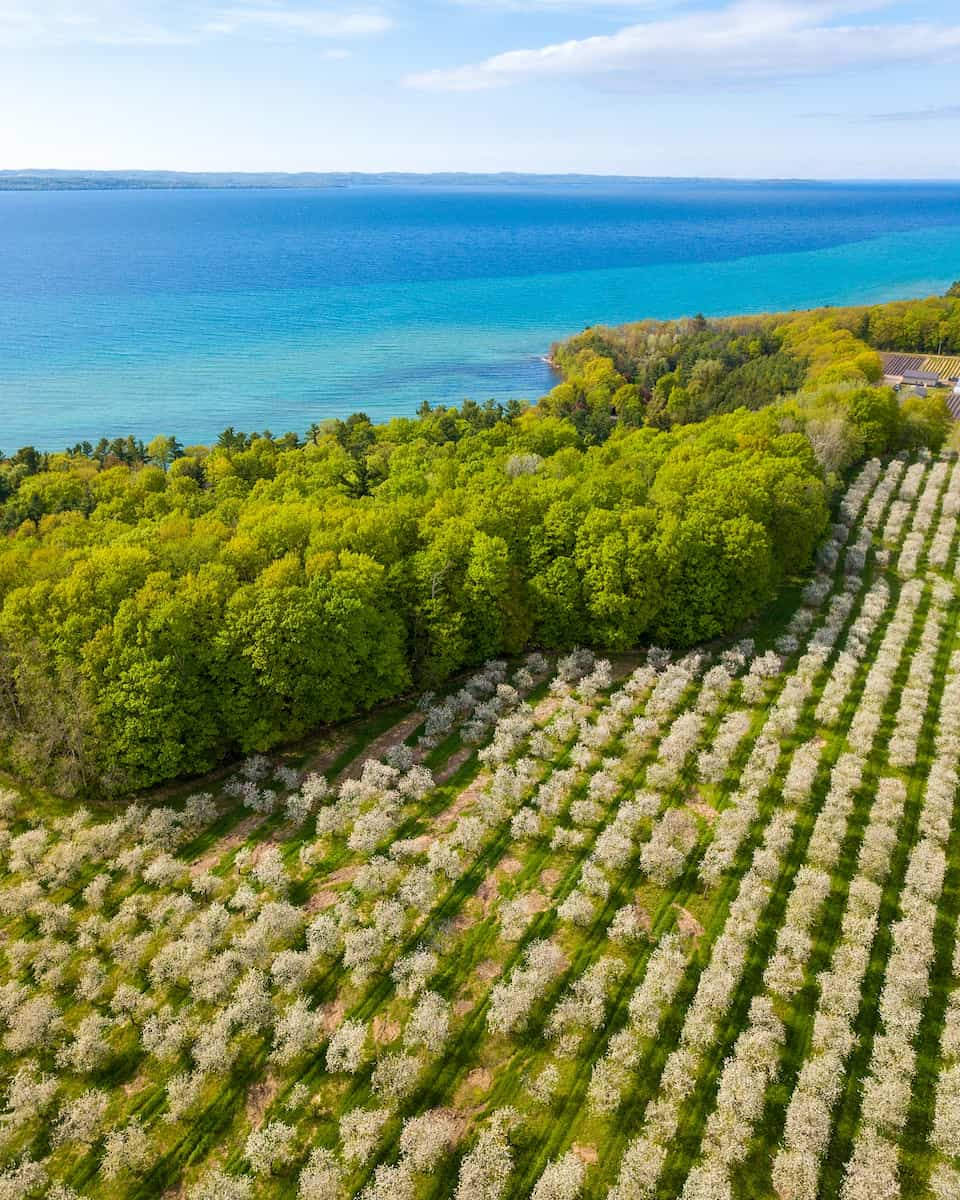
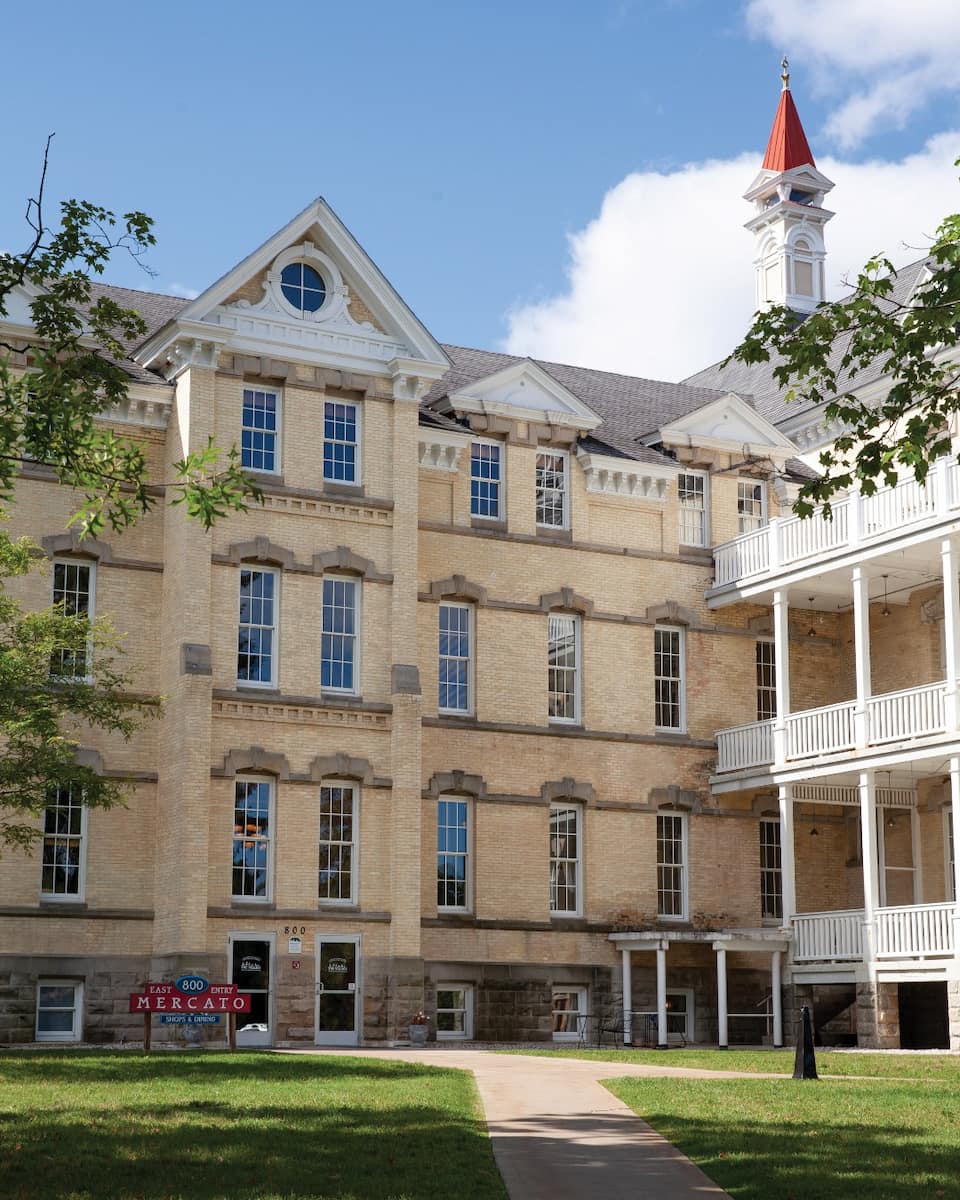
Downtown Attractions. The historic State Theatre showcases independent films and live performances in an beautifully restored art deco venue. Front Street offers diverse shopping and dining options, from casual cafes to upscale restaurants featuring local ingredients. The Village at Grand Traverse Commons, a renovation of the former state hospital, houses unique shops and restaurants in historic buildings.
Outdoor Activities. The TART Trail provides scenic biking routes connecting Traverse City with surrounding communities. The trail offers beautiful bay views and access to beaches and parks along the route. I rented a bike and explored different sections, discovering hidden beaches and quiet picnic spots away from the main tourist areas.
| Activity | Cost | Duration |
|---|---|---|
| Wine Tasting | $10-25 per winery | 30-60 minutes each |
| TART Trail Bike Rental | $25-35/day | Full day |
| State Theatre Tickets | $12-25 | 2-3 hours |
| Beach Parking (summer) | $5-10/day | All day |
⭐ Best Tours
- 5-Hour Traverse City Wine Tour: 4 Wineries on Old Mission Peninsula – Known for its wineries and picturesque lake views, Old Mission Peninsula is a must-visit for wine lovers. By joining this winery tour, you can visit four of the Peninsula’s wineries and enjoy round-trip transportation from Traverse City. That way, everyone in your group can indulge in wine and enjoy the scenery without worrying about driving.
- Traverse City: Brunch Sail on Tall Ship Manitou
5. Holland from Grand Rapids
Dutch Heritage. The easy 30-minute drive from Grand Rapids to Holland leads to Michigan’s most authentic Dutch community. The city maintains strong connections to its Netherlands heritage through architecture, festivals, and cultural traditions. I’ve attended Tulip Time Festival multiple times, watching traditional Dutch dancers perform while millions of tulips bloom throughout the city.
Windmill Island Gardens. The authentic 250-year-old Dutch windmill “De Zwaan” serves as the centerpiece of this 36-acre park. I climbed to the top of the working windmill and learned about traditional Dutch milling techniques from knowledgeable guides. The surrounding gardens showcase Dutch landscaping and provide peaceful walking paths.

Beach Activities. Holland State Park features beautiful Lake Michigan beaches with a distinctive red lighthouse accessible via a pier walk. The park offers swimming, picnicking, and camping opportunities with stunning sunset views. I discovered that the beach gets crowded during summer weekends, but weekday visits provide more peaceful experiences.
Downtown Exploration. Eighth Street offers diverse shopping and dining options, from traditional Dutch bakeries to contemporary restaurants. The Holland Museum explains the city’s immigration history and cultural heritage through artifacts and interactive exhibits. I enjoyed sampling Dutch treats like stroopwafels and oliebollen at local bakeries.
⭐ Best Activities
- Brewery Walking Tour Holland – Discover the breweries in Downtown Holland, Michigan while learning about some of Hollands history and the history of the breweries. Enjoy a local treat and hang out with other beer lovers. This walk covers just over a quarter mile of Holland’s heated streets and passes by some amazing artwork on the way. Rain or shine, we will try to make this the highlight of your stay in Michigan.
FAQs About Visiting Michigan
1. What’s the best time to visit Michigan?
The very best time to visit Michigan is September and October when you’ll experience perfect weather and stunning fall colors. September feels like a second summer with warm temperatures and fewer crowds, while October offers the best autumn weather for exploring things to do in Michigan. Summer months from June through August are beautiful but crowded, especially at popular destinations like Mackinac Island and Sleeping Bear Dunes. Winter brings heavy snow to the Upper Peninsula and northern Michigan, making it perfect for winter sports enthusiasts but challenging for general sightseeing.
2. Do I need a car to get around Michigan?
A car is highly recommended for exploring Michigan’s diverse attractions, especially when visiting places like Pictured Rocks National Lakeshore or things to do in northern Michigan. Detroit offers the most public transportation options including buses, the Qline streetcar, and the People Mover elevated train system. Amtrak serves Michigan through three train lines from Chicago, including the high-speed Wolverine that stops in Ann Arbor and Detroit. For budget travelers, Greyhound, Indian Trails, and Megabus provide comprehensive bus service with 47 stops throughout the state.
3. What are Michigan’s must-see attractions?
The Henry Ford Museum of American Innovation in Dearborn showcases presidential limousines and interactive Model T experiences that bring American history to life. Mackinac Island offers a unique car-free experience with historic Fort Mackinac, and famous fudge shops. Sleeping Bear Dunes National Lakeshore features towering sand dunes and pristine Lake Michigan beaches perfect for hiking and photography. The Motown Museum in Detroit takes visitors inside the original Hitsville U.S.A. recording studio where legendary artists created timeless music.
4. Are Michigan’s state parks open year-round?
Most Michigan state parks remain open year-round, though some facilities and activities are seasonal depending on weather conditions. The Michigan Recreation Passport costs just $12 for residents and $34 for non-residents, providing access to all state parks throughout the year. Winter activities include cross-country skiing, snowshoeing, and ice fishing at many locations, while summer offers swimming, hiking, and camping opportunities. I recommend checking individual park websites for specific facility closures and seasonal activity schedules before planning your visit.
5. What makes Mackinac Island special?
The island features historic Fort Mackinac with cannon demonstrations, the iconic Grand Hotel with its 660-foot porch, and numerous fudge shops where confectioners create treats in storefront windows. Ferry service operates from both Mackinaw City and St. Ignace, with the classic ferry from St. Ignace offering better value at $22.95 round trip. The 8.2-mile bike loop around the island provides stunning views of the Straits of Mackinac and stops at natural landmarks like Arch Rock.
6. How much should I budget for a Michigan vacation?
Summer represents peak season with hotel prices ranging from $140-250 per night, while winter offers budget-friendly rates of $70-120 per night despite harsh weather conditions. Many top attractions like the Detroit Riverwalk, Belle Isle Park (for pedestrians), and university museums in Ann Arbor offer free admission. Major paid attractions include the Henry Ford Museum ($34 for adults), Frederik Meijer Gardens ($20 for adults), and Mackinac Island ferry service ($36 round trip for traditional ferries).
7. What are common mistakes tourists make in Michigan?
Many visitors underestimate driving distances in Michigan, especially when traveling to the Upper Peninsula where attractions like Pictured Rocks and Tahquamenon Falls require significant travel time. Tourists often skip the Michigan Recreation Passport and pay individual park fees, missing out on substantial savings for multiple park visits. Summer visitors frequently arrive without reservations at popular destinations like Sleeping Bear Dunes or Mackinac Island, only to find limited parking and accommodation availability. Winter travelers sometimes venture north without proper clothing or vehicle preparation, underestimating the harsh conditions in northern Michigan and the Upper Peninsula.

